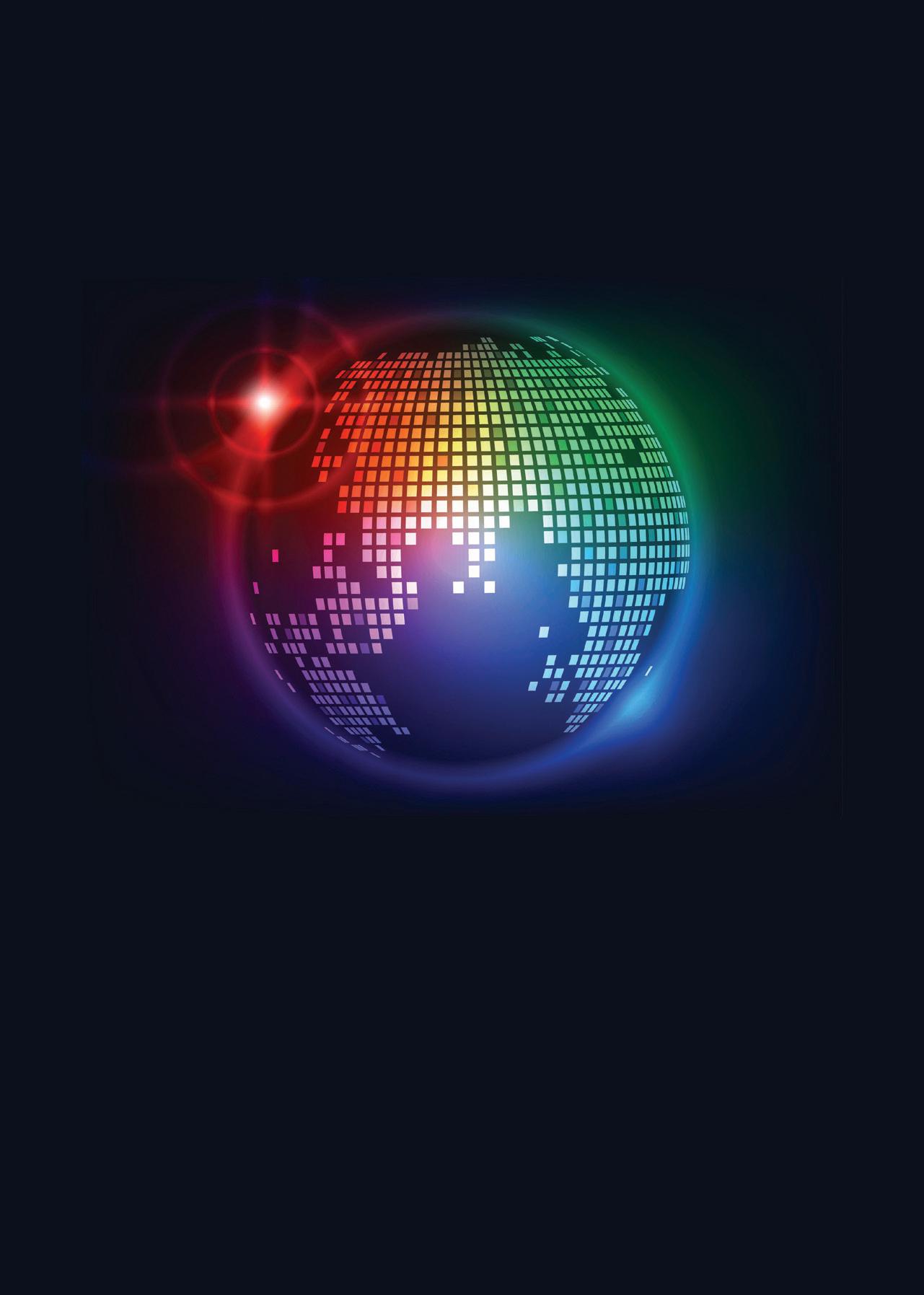
Paul Ruetschi: 1925-2024
The legend remembered Giesskannenprinzip! Or why the IRA can't work Bringing the industry together www.batteriesinternational.com







Paul Ruetschi: 1925-2024
The legend remembered Giesskannenprinzip! Or why the IRA can't work Bringing the industry together www.batteriesinternational.com






Hammond’s innovative signature products, SureCure® and Treated SureCure®, are two of more than 150 customized additives that are improving battery performance and lowering manufacturing costs for battery manufacturers around the world.




Hammond Group Welcomes LongTime Advisor
Lucas as CEO
Robert “Bobby” Lucas has been named the new President and CEO of Hammond Group, supporting the company’s continued global growth strategy and execution. Terry Murphy will continue to serve on Hammond’s Board of Directors.
Lucas, a trusted legal advisor to Hammond’s management team for over 15 years, most recently served as managing partner at Dinsmore &
Shohl’s Chicago office.“Bobby serves on our Board, knows our industry, and is a critical thinker whose wide range of professional expertise is unsurpassed,” said Murphy. In addition to more than 20 years as a corporate attorney, Lucas has served as Chair of Dinsmore & Shohl’s Corporate Department, Co-Chair of the Business, Acquisitions and Securities Practice
Lucas





Group, a member of the firm’s Executive Committee, on their Board of Directors, and he was Vice Chair of the firm’s Finance Committee.

The new kid on the battery block
48
Capitalizing on lessons learned in scaling up lithium ion could give sodium ion batteries a jump-start from the lab and into the market.
Spreading the word
Talk about the joys of sodium ion batteries may sound evangelical but they are being marketed at a business audience that is deeply sceptical of change.
Fine tuning the product to meet the market
The pace of research into Na ion is speeding up as the market implications of the technology become ever yet clearer.
51

52
China, Giesskannenprinzip, and the failure that will be the Inflation Reduction Act.

Yet another giant in the lead battery industry has passed away. Few will remember Paul now but he was one of the key industry figures from the 1950s to the 1990s.



Flicker, Hawk and Winslow receive BCI’s Distinguished Service Award • Arise Sir Stanley … • Eternity expansions leads to hiring spree • Clarios’ Rebecca Conway promoted to VP marketing • ABC’s Everett moves to Li-S developer Zeta Energy • Murao, Abe swap top posts at GS Yuasa • Wood Mackenzie appoints Jason Liu as CEO • Varta appoints new CEO to “navigate challenges ahead…” • EnerSys promotes Mark Matthews to president • Clarios’s Quintanal named ‘best manager’ • Aftrak $1m innovation award for lead battery project • Lucas takes over from Murphy, Hammond adds to sales jobs in Asia and North America • Skeleton appoints Sauerberg, Arsenault to senior positions • Apatura appoints Hanglin new CEO • Tesla top execs jump ship as 14,000 job cuts announced • ENTEK makes key promotions to support global reach • RECHARGE director general steps down after 11 years.
22
EnerSys wins US DoE award for advancing lead battery technology • Metair climate report forecasts fall in lead battery demand • Monbat plans new assembly line • Eternity Technologies in Spain telecom batteries deal • Lithium-ion battery market to slide as LDES advances • RWE to build Australia’s first eight-hour battery • Belgium’s Montea invests €30 million in BESS • BCI, New Lab and Clean Tech Strategies win US funding for long duration storage • Entergy, NextEra to jointly develop energy storage projects • Statera Energy submits plans for 500MW facility in the UK • Tesla’s milestone Shanghai ‘megafactory’ officially opens • Major BESS planned in Northern Ireland • Engie opens largest BESS in Latin America • Environment regulator suspends licence at controversial Fenix recycling plant • Redwood partners with Ultium to recycle battery scrap • US announces $62 million investment for recycling • Nissan and Ecobat partner for EV battery recycling in UK • Ecobat enters into supply chain finance partnership with LSQ • Polish/US firms establish battery recycling joint venture in Poland • BASF opens prototype metal refinery for battery recycling • Solnet Group VPP for solar in grid operations • VPP available for 1.2 million users in US • EnerSys fiscal 2024 net sales down but EPS up • Sunlight Group: revenues top $1bn, earnings up 141%

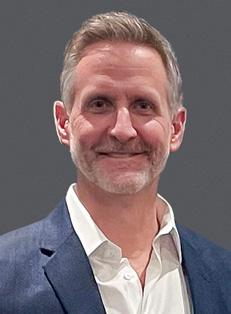
NEWS CONTINUED
Amara Raja reports leap in Q4 profits • UK Infrastructure Bank backs vanadium flow batteries • Iron-flow batteries picked for projects in Africa, Amsterdam • ZincFive is winner in CleanTech award • BASF, NGK release new sodium sulfur battery • Sodium to the fore, says Roland Berger • EnerVenue aims for $515m for nickel-hydrogen battery • Clarios partners Altris to develop sodium ion battery systems.
OPINION: MIKE DUNCKLEY
We are in an unprecedented era of growth for the energy storage business but this doesn’t automatically translate into unprecedented profits or even business success and survival.
Lead dioxide — hydrogen content and capacitance, by Pat Moseley.
The number of battery energy storage systems is growing exponentially. But this is at risk of being stymied by an insurance sector that is struggling to keep pace with the technology and its need for smart risk-transfer solutions.
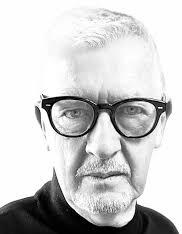

The recent BCI award ceremonies showcase the latest exciting developments in advancing lead acid batteries and new approaches to marketing.

Battery Council International’s centenary celebration, Fort Lauderdale, Florida, USA • Advanced Automotive Battery Conference, Strasbourg, France • The Battery Show, Stuttgart, Germany • ees. Munich, Germany.

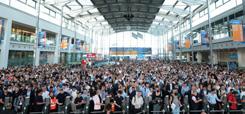
Our guide to the global conferences and exhibitions in the months ahead.
Publisher Karen Hampton
karen@batteriesinternational.com +44 7792 852 337
Editor Michael Halls
editor@batteriesinternational.com +44 7977 016 918
Deputy editor Shona Sibary
shona@batteriesinternational.com +44 7585 355 955
Disclaimer: Although we believe in the
Nor
Finance administrator
Juanita Anderson
juanita@batteriesinternational.com
Subscriptions, enquiries
subscriptions@batteriesinternational.com admin@batteriesinternational.com
Production/design
Antony Parselle aparselledesign@me.com
International advertising representation karen@batteriesinternational.com
The contents of this publication are protected by copyright. No unauthorized translation or reproduction is permitted.
ISSN 1462-6322
© 2024 Mustard Seed Publishing UK company no: 5976361. Printed in the UK via Method
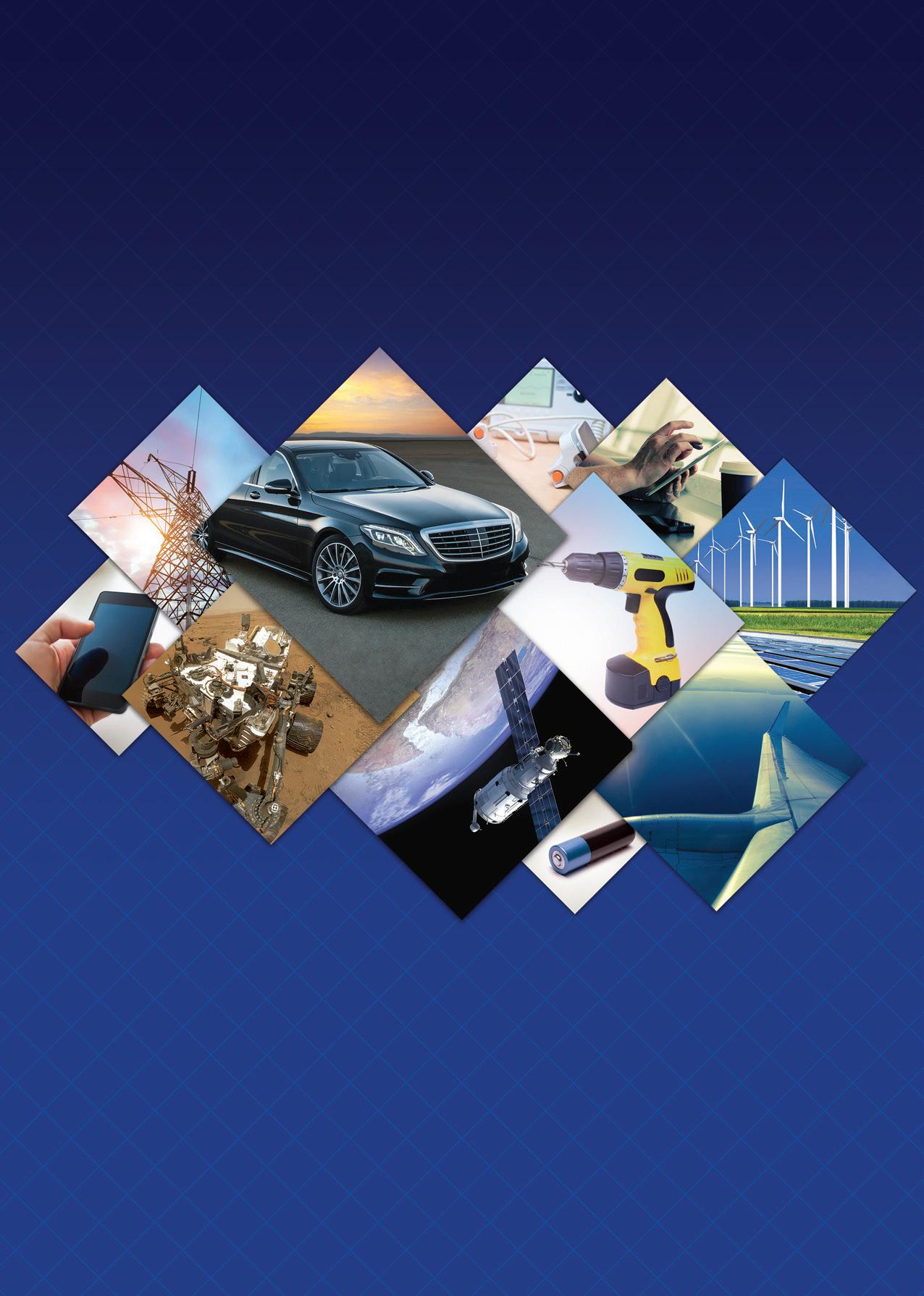
Mike Halls • editor@batteriesinternational.com
The Germans have a special term for it: Giesskannenprinzip.
Literally it means the watering can principle.
It’s the idea that if you water and feed all parts of an economic situation equally, some businesses will thrive and grow.
Others will struggle to survive. It’s exactly like looking after newly sown seeds.
In the late 2000s two very different countries and two very different economies — China and the US — decided on their own different versions of Giesskannenprinzip.
Both aimed in different ways at nurturing the emerging technologies relating to electric vehicles, renewable energy and its storage.
In 2009 the US introduced the ARRA, the American Recovery and Reinvestment Act, which provided a huge injection of money — in total $787 billion — spread across a wide variety of industries as an economic stimulus package.
Among its many objectives was the aim of providing temporary relief for those most affected by the recession but also to invest in infrastructure, education, health, and with a particular focus on renewable energy and the emerging lithium battery market for EVs.
Three years later Batteries International spoke to the ARRA consultants about their advice to the US government. They said that the volume of the funding to the still emerging lithium battery/EV markets had seemed huge at the time and more than enough to kick start the sector.
However, within a handful of years, enthusiasm turned to disillusionment. Two high profile names — A123 Systems and EnerDel — flourished before financial collapse, EV manufacturers such as Aptera Motors shut down in 2011; Bright Automotive, 2012; Coda Automotive, 2013; and the once headline name, Fisker in 2014.
By contrast, in China the watering can had been put to good use much earlier and has kept watering ever since.
In its 10th five year plan running between 2001 and 2005 — and so planned in the late 1990s — the emphasis was already on renewable energy with a wide variety of tax breaks and incentives on offer.
But it was the next five year plan running to 2010 that the government thinking seems to have been at its most joined-up.
“Energy is at the top of the agenda” said the China
Leadership Monitor, at the time and the government machinery changed to reflect this.
In June 2005 the National Energy Leading Group was set up with the then-premier, Wen Jiabao, in charge. Within this, the National Energy Office was created. Both the NELG and the NEO were later to be instrumental in creating what one commentator described as an “alternative global energy order”.
And it’s that order which we find ourselves in today.
At around this time China started the biggest energy landgrab in possibly the history of mining resources.
China read the runes and saw that EVs were the future and that renewables were key to success.
It then proceeded to try and corner the market for processing rare earths — the metals with unpronounceable names such as praseodymium, neodymium, dysprosium and terbium — which are used in the magnets for wind turbines or in traction motors.
China was equally convinced cobalt would be vital for its EV future. In 2008 it bought two cobalt firms and two more in 2010 in the Democratic Republic of the Congo which provides around 70% of the world’s supply of the metal.
This wasn’t a China-only party. The US or any foreign investors could equally have piled into these strategic companies.
But the result nowadays? China owns 80% of the DRC’s cobalt mining and refining and sells the cobalt to the rest of the world.
And, as an offshoot of this, the US is well on its way to becoming four times more dependent on China for its energy than it was ever dependent on the Middle East for oil. That’s according to a 2023 report by the Institute for Energy Research.
A legitimate landgrab
One thing should be clear. China’s landgrab has been a legitimate one. It had the foresight to see where the technologies of the future were going, while the rest of the world were still talking. (And in Europe, they still are.)
Other governments were less astute. And that’s not ignoring other factors in play. Western issues about unfair subsidies to its battery manufacturers through tax breaks, land deals and the like have still not been resolved and many allegations seem substantive.
So where does this leave Chinese dominance over the future EV and battery markets of the world? And, in the light of all this, what are we to make of the Inflation Reduction Act by the US?
First, this Giesskannenprinzip principle is behind a large part of the latest US thinking, signed into law in August 2022. This, among other things, would authorize spending of $783 billion on energy and climate change.
Later analysis suggests that the tax-breaks involved could cost as much as $2 trillion.
Throwing a large sum of money to make a problem go away is not necessarily a dumb strategy but it also doesn’t promise a fix for the US either.
And the economics of the matter — China’s control over the world’s supply in lithium resources and related minerals isn’t going to go away in a hurry — makes any guarantee of any long-term success for the lithium EV industry in the US more unlikely.
No easy catch-up

Nor does a huge gap in technical manufacturing competence between the Chinese and their wannabe counterparts mean that an easy catch-up is likely.
The call for a tariff war seems to be an irresistible one for the US, and lately the European Union, to wage. In Europe, in particular, German carmakers (BMV, Volkswagen and Mercedes) — a driving force in the country’s economy — face an onslaught of quality Chinese EVs priced at a huge discount to their own vehicles.
They will, and have been, lobbying behind the scenes at the EU to try and do anything to save their future manufacturing ability. (While simultaneously being worried that their own sales in China will be hit by retaliatory tariffs, which they will.)
And if one wanted to compete with the Chinese energy storage industry — and this magazine is complete neutral over the rights and wrongs of who’s dominating what — is lithium battery technology the right place to fight a trade war?
Given that Chinese firms such as CATL and BYD have already achieved market and competitive price dominance, is this really the time to compete with their 15 years’ experience in running lithium manufacturing lines?
In an interview with CATL founder and CEO Robin Zeng and late chairman Mike Chang in 2014, the two told this reporter that their vision for the future was only just beginning. At that point they had come from a virtual standing start five years earlier to becoming the third largest lithium cell maker on the planet. One way forward to protect Europe’s battery and car manufacturers — and probably those in the US too — according to some delegates at this year’s recent EUROBAT meeting, is to explore another storage chemistry where the Chinese are less well advanced. If western companies want to compete with China
in the future, fighting it out on an LFP battleground is surely the wrong place to compete.
Perhaps it would be better to look at other competing chemistries where China’s expertise is less well developed and a better level playing field is in place.
Sodium ion would, at first glance, seem to be an area to focus on. There have been recent advances in the technology with much potentially up for grabs. Though not yet a contender for the powertrain of EVs, it seems to offer a reasonably safe spot for advancement in terms of price, energy density and recyclability.
The Chinese already have a head start of around six years over the rest of the world in sodium ion battery technology. It’s not as much as their lithium manufacturing lead — 10 years ahead of the US and possibly as much as 15 years ahead of Europe. But CATL now has a manufacturing plant in place producing these batteries while the West is still at the pilot plant stage.
In January the formation of a coalition of battery manufacturers looking at solid-state lithium batteries may well be their next — and again legitimate — field of conquest
China’s clear planning over the future of energy has been razor sharp. They saw the big picture ahead of the rest of the world.
In contrast, energy thinking across swathes of Europe has been haphazard and in the US has lurched from president to president. This year’s election win in November will result, yet again, in divergent energy strategies depending on which party wins.
Watering cans, however gushing the hoses may be that fill them, can do little to the small, less developed plants when the garden is already in full bloom.
Mike Halls, Editor-in-Chief
Yet another giant in the lead battery industry has passed away. Few will remember Paul now but he was one of the key industry figures from the 1950s to the 1990s.
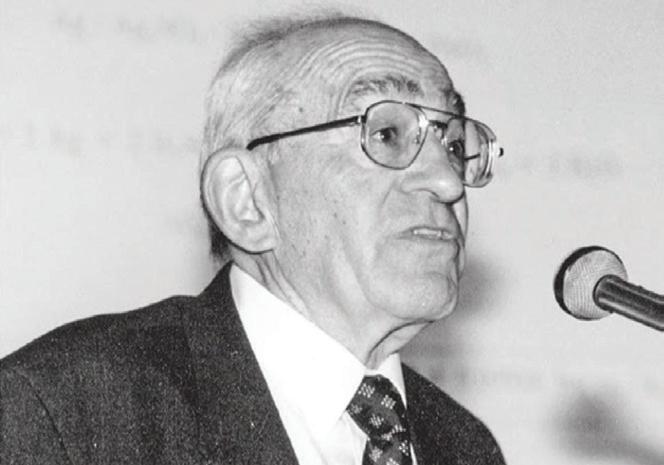
It is with sadness that Batteries International reports the death of Paul Rüetschi, on April 19, a year short of his 100th birthday. The Swiss-born scientist became a living legend to two generations of researchers and business-people as one of the deep explorers and great explainers of the fundamentals of lead batteries.
Rüetschi — pronounced Richey — was born in 1925 in Schafisheim, a small town in the Swiss district of Lenzburg and a half hour’s drive from Zurich. An early aptitude for science led to studies at the Teacher’s College in Wettingen and then on to the Federal Institute of Technology in Zurich.
The institute — known in German as ETH Zurich — was already one of the most famous polytechnics in Europe. Today it is ranked third in the continent, just behind Oxford and Cambridge. In the 1950s it was quite simply one of the foremost institutions of its kind in post-war Europe. It was at ETH that Rüetschi’s first full involvement with the world of batteries and energy storage began. And it was here he obtained a PhD from the Department of physical chemistry, studying under its professor, Gottlieb Trumpler, a leader in
his field at this time.
His research work made a major contribution to the understanding of electrochemical passivation of metals of decisive importance in the field of corrosion. His work included polarography, the electrolytic deposition of metals, the flow of material on electrolysis, and the examination of chemical and physical equilibriums.
There was a strong bond in the relationship between Rüetschi and Trumpler. In Rüetschi, Trumpler found a collaborator, eager and quick to learn. For Rüetschi, Trumpler was a keen and sympathetic teacher and provided the gateway to much of his later research.
In 1953, Rüetschi received the first of his industry awards: the silver medal of the ETH. Rüetschi stayed with Trumpler as his assistant until 1955, only leaving for a year’s sabbatical in a research group in the US run at Louisiana State University, Baton Rouge, by Belgium electrochemist professor Paul Delahay.
ESBC (Exide Technologies)
The results of their collaboration resulted in a joint publication in the US, Influence of Electrode Material on Oxygen Overvoltage: A Theoretical
Analysis. America impressed Rüetschi but so did the practical application of his research work. And, aged 30, he returned to the US, this time to take the position of manager of the electrochemical research department at the Electric Storage Battery Company — nowadays better known as Exide Technologies.
Here he was involved in a number of investigations relating to lead acid batteries, though other disciplines were connected. One of his first studies, for example, was the development of fuel cell type auxiliary electrodes for gas consumption in sealed lead acid cells.
Another area of research was the study of corrosion phenomena and the composition of multilayer corrosion films on lead and lead alloys. His second official honour came in 1957, when he was presented with the Young Author Award by the Electrochemical Society.
As an example of his multi-disciplinary approach to energy storage, in 1961 he filed a patent for an “improved storage battery utilizing positive electrodes of zinc or magnesium … another object of the present invention is to provide a new and improved electrolyte for use in batteries of the so-called alkaline type”.
He was also active in many scientific societies. During his time in the US, Rüetschi became chairman of the physical electrochemistry division of the electrochemical research department for the Electrochemical Society, as well as executive committee officer of the battery division. Perhaps the haunting ring of the bells echoing around the Jura mountains was too great and nine years after arriving in the US, in 1964, Rüetschi returned to Switzerland.
His new position at Yverdon-les-Bains was technical director at Leclanché, a manufacturer of a wide range of primary and secondary batteries. The firm itself dates back to the development of zinc carbon batteries by Georges Leclanché in 1866, and the creation of the company in 1909. He was to remain at Leclanché for the next 28 years.
With characteristic energy, Rüetschi threw himself into work at Leclanché and under his guidance, research took off. This included a quantitative description of the pH gradient that exists in corrosion layers and alkaline primary battery electrolyte-lithium miniature primary batteries with long service life.
Rüetschi continued to make major contributions in lead acid battery research, including:
• the discovery of αPbO2 in corrosion films formed on lead and lead alloys at high anodic potentials
• disclosure of the individual self-discharge processes in lead acid batteries, and the stability of lead oxides in H2SO4 solution
• determination of the composition of the corrosion layer on lead electrodes in H2SO4 at various poten¬tials; investigation of ion selectivity and diffusion potentials in such corrosion layers; quantitative description of the pH gradient in the cor¬rosion layer
• development of a cation-vacancy model that relates defects in the crystallographic structure of MnO2 and PbO2 to their electrochemical activity
• various other achievements in the research of HgO, Zn, MnO2 and Ag2O electrodes.
By this time he had already attracted an international audience for his research. One leading industry figure later said: “In the 1950s, many authors writing about their battery findings were vague and imprecise in describing what they did and what they found out.
“They were only soft and qualitative in their conclusions. Often they did not clarify what was hard proven fact and what was merely speculation.
“By contrast Rüetschi’s papers have always presented results in a quantitative manner, providing values and potential variations in detail, and con¬sidering potential disturbances. Sample preparation and conditions of the experiments were precisely described. Conclusions were clear in wording, without any kind of speculative touch.”
The breadth of his research was deepened by his now extensive contacts with the electrochemical giants of the day across Europe. “Contacts provide new ideas. Without contacts, the performance suffers; there is premature capacity loss!” he later said.
He also later paid tribute to the memory of Detchko Pavlov, professor at the Bulgarian Academy of Sciences, and Pavlov’s co-workers describing how his own work had been stimulated by Pavlov’s series of conferences held in Varna, Bulgaria from 1989 onwards.


In 1978, Rüetschi published the seminal paper Review on the lead-acid battery science and technology in the Journal of Power Sources. It begins: “In spite of extensive and contin¬ued efforts aimed at developing new light-weight, low-cost secondary electrochemical power sources, the old lead-acid battery has still not been dethroned as the major battery system.”
It concludes: “What makes it so hard for new electrochemical power sources to compete with it is not only its long head-start, but also the high degree of sophistication and perfection it has reached.”
He was both right and wrong, as history would later prove.
In 1980 he was awarded the Frank Booth Medal of the International Power Sources Conference Committee. In 1988 Eberhard Meissner — who later became senior technical leader, electrochemistry at Clarios (the former Johnson Controls Power Solutions) but then giving his first public presentation at the International Power Sources Symposium in Bournemouth, UK — met Rüetschi.
“He was very interested in the relaxation effects of PbO2, which I presented, and my interpretation,” he recalls. “In his polite and precise manner, he asked several questions in the Q&A — it was a great feeling for a youngster like me. He was one of those scientists whose publications I admired from the very beginning. Rüetschi combined the values of a scientific education with expertise in the battery industry.”
Rüetschi retired, aged 67, at the end of 1992, although he continued to work part-time as a consultant for Leclanché.
The following summer he was awarded the Gaston Planté medal —
the electrochemical battery equivalent of an Oscar — for his “significant con¬tribution to the development of lead-acid battery science and technology”.
But his life in research and problem solving was not over. Four years after retiring, and then into his seventies, Rüetschi, the doyen of lead acid batteries, was still writing and still excited at the wave of new technologies and chemistries emerging.
Alongside Felix Meli and the late Johann Desilvestro, he co-authored the paper Nickel-Metal Hydride Batteries. The Preferred Batteries of the Future?
His last battery book, Batterien und Akkumulatoren: Mobile Energiequellen für Heute und Morgen, was written with Lucien Trueb, science editor of a Swiss daily newspaper. Batteries and Accumulators, Mobile Energy Sources for Today and Tomorrow was written to be understandable and easily readable — for laypeople as well as scientists.
As late as 2002, Rüetschi received a patent for a lead battery into which at least one silver-silver sulfate reference electrode was permanently integrated. The reference electrode is used to control the charging or discharging of the battery, and can also be used to measure the acid density and charging state of the battery.
In total Rüetschi has contributed to more than 70 scientific publications and been granted more than 30 patents.
Like another of the battery giants of the last century — John Goodenough, one of the creative greats of the lithium battery — both were men of faith in the Christian tradition. Both firmly believed in the benevolence of a caring God who was keen to let mankind unpick and examine the wonders of his creation.
Bob Flicker, former COO at East Penn Manufacturing, Hal Hawk, CEO of Crown Battery and Roger Winslow, former CEO of Voltmaster received BCI’s Distinguished Service Award at a special ceremony at the association’s centenary celebrations at Fort Lauderdale, Florida in April.
The BCI Distinguished Service Award is BCI’s highest individual honor and recognizes those who have made a sustained, long-term, and meaningful contribution to the advancement of both the association and the battery industry.
The three chosen are widely recognized as giants within both the lead battery business but also the business of BCI.
“There are many amazing leaders who work in the energy storage industry but Roger, Bob and Hal are definitely the cream of the crop,” says Roger Miksad, BCI’s president and executive director.
“What really sets them apart, however, is the extent to which these three executives have worked tirelessly to uphold the future of the industry through the betterment of this trade association while also staying committed to the growing needs of their own individual firms.
“As BCI turns 100, it’s the perfect time to honor them for selflessly working to build a world-class industry group that has withstood the test of time.”
George Brilmyer, himself a well known figure and battery veteran, said: “I’ve worked with all three of them over the years, you’d be hard pushed to find smarter or more dedicated individuals than these.
They should be an inspiration to us all.”
Hal Hawk
All three told Batteries International that they were pleased, surprised and even a little shocked by the award. Hal Hawk said: “Yes it’s a tremendous honour but I have to say I feel there are more deserving in the industry.”
Hal, himself, could hardly be called a business slouch.
With some 30 years of battery experience behind him, he knows the business inside out. After he took over as president and CEO of Crown Battery in 1999 he transformed it into a major international player.
In 2007 he had the distinction of buying a Mexican battery firm, a division of C&D, where labour rates were extremely low and relocating it to the US and turning it into a highly profitable firm working with
US health standards and salaries.
That same year he became president of Crown Battery Hal, he became a fixture of the BCI board of directors. He is currently the longest-serving current member on the Board. Hal was also president of BCI from 2006-2008.
Hal was a key leader for the entire industry during an important period of change, as the members of the Independent Battery Manufacturers Association (IBMA) were integrated into BCI to ensure that the industry association represented the full breadth of the industry’s participants.
“Over recent years BCI has become a yet more powerful organization,” Hal told Batteries International. “We’re at the cutting edge of helping the regulators regulate issues such as blood lead levels and air contamination.

Additionally, Hal has served as BCI Convention Chair for more than two decades, is the chair of the BCI Quarter Century Club, and is a devoted leader of the annual BCI Golf Tournament. He also continues to be active on numerous other BCI committees.
“Hal’s long-standing industry leadership and commitment to the goals and efforts of the association on behalf of all members has garnered him deep respect from across the industry,” says Roger Miksad. “His selfless efforts to advance the industry as a whole and to foster a spirit of community and collaboration within the association is worthy of deep respect and gratitude.”
Bob Flicker
Bob Flicker, now retired from East Penn after 50 years with the firm, confessed to feeling “over-whelmed and terribly surprised” on hearing of the award. Bob, who started at East Penn in 1972 — as a temporary job operating a punch press — had a spectacular career with the family-owned company.
His skills and engineering understanding were quickly recognised and in 1994 he became EVP for engineering and manufacturing and at the heart of decision-making of the firm. He became COO in 2014 until his retirement from East Penn in 2022.
“Hal’s long-standing industry leadership and commitment to the goals and efforts of the association on behalf of all members has garnered him deep respect from across the industry,”
— Roger Miksad, BCI’s president and executive director
Speaking to Batteries International, Bob recalls his first time at a BCI convention in 1974. “DeLight [East Penn founder] asked if I’d like to go with him to Washington, it was a fantastic experience and I’ve attended pretty much every convention since then. We’ve had a good mixture of fun and work.”
Like Hal and Roger he

“DeLight [East Penn founder] asked if I’d like to go with him to Washington, it was a fantastic experience and I’ve attended pretty much every convention since then. We’ve had a good mixture of fun and work.”
— Bob Flicker, East Penn Manufacturing
points to the advances made over the years in battery manufacturing: “If someone nowadays were to go to the work floor of any battery plant when I started they’d be astonished and baffled by what the machines were doing, yet, of course they understand the concepts behind them and the electrochemistry.”
One of the key contributions Bob made, via the BCI, to the battery industry was when he chaired the BCI’s Data Book Committee and helped standardize the many battery types that were starting to proliferate across the industry. At the time, a single battery type had up to five group size designations depending upon the manufacturer or the geography.
Fundamentally, vehicle manufacturers had to have faith in the person representing BCI’s idea and the industry as a whole. Bob turned out to be the perfect person for the job, widely distributing Data Book Guidelines and giving each battery design due consideration.
Roger, now aged 89, is one of the oldest members of the battery industry and a true veteran in seeing how the industry has developed. He recalls the progress the lead battery industry has made over the decades. “Quite simply our batteries are better than ever,” he says. “We’re using half the lead and doubling the power compared to just 30 years ago.”
Roger joined Voltmaster, a US battery manufacturer, in 1957 and bought the business in early 1970s. The company thrived under his management and in November 2006 he sold the business to East Penn. After Voltmaster he bought Richardson Moulding which he later sold to Stryten.
trade association moved more aggressively into public policy, standard-setting and other pressing issues. In the mid-1960s, Roger led the formation of the modern BCI Group Size system, and was instrumental in the formation of a very active BCI Data Book Committee,” says the BCI’s Roger Miksad.
“BCI’s success depends on leaders who are willing to look beyond their individual businesses to the needs of the industry as a whole. Roger’s many years of dedicated service stands as an example to us all.”
Worldwide acceptance of the BCI group numbering system could not have happened without Bob and his decade-long chairmanship of the Data Book Committee. “He was knowledgeable about the issues and had the respect of the technical committee members throughout the process,” says BCI’s Roger Miksad. “He was also chair of BCI’s technical committee for over 10 years.
“With five decades of experience and a selfless desire to serve the industry and solve some of our biggest challenges, Bob’s impressive record of service has earned him respect and appreciation across the industry.”
Roger Winslow
Another surprised recipient of the Distinguished Service Award was Roger Winslow who has had to step down from attending BCI conventions in recent years. “But don’t you worry,” he told Batteries International. “I was at Fort Lauderdale bright and early on the starting day!
Roger was the president of the Independent Battery Manufacturers from 19731975 and the leading figure into its absorption by BCI. Roger was president of BCI from 1986-1988, and served on the BCI board for roughly three decades until 2006, and as a board member Emeritus until 2012.
“Roger was a driving force behind the evolution of BCI as the worldwide
The BCI Distinguished Service Award was presented by the BCI board of directors to the three in a special ceremony during the special 100th anniversary celebration of the association.
Past recipients of the award (previously called the BCI Honorary Lifetime Membership) include industry icons such as DeLight Breidegam Jr, Peter Aspinall, Norman Farsje, and Edward Foote. BCI first honored an individual in 1945 by recognizing the service of Louis Raycroft.
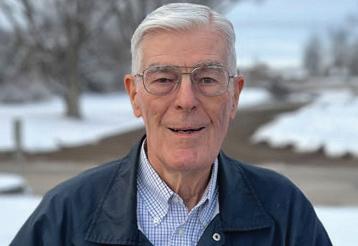
“Quite simply our batteries are better than ever. We’re using half the lead and doubling the power compared to just 30 years ago.”
— Roger Winslow, Voltmaster
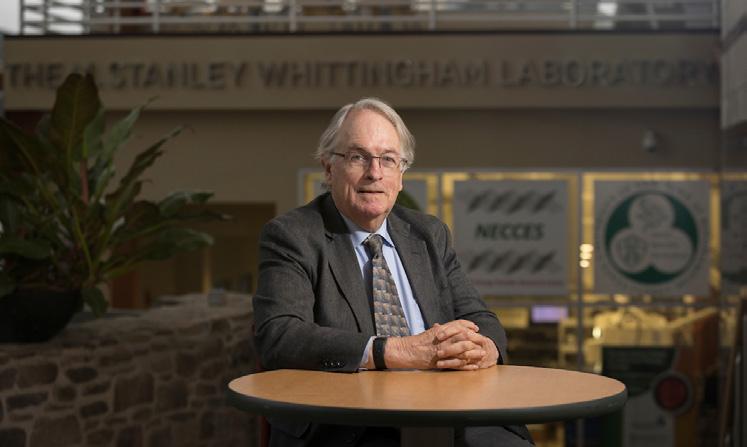
Stanley Whittingham, joint Nobel Prize winner with John Whittingham and Akiro Yoshino as one of the inventors of the lithium battery, has received a further honour. Britain’s King Charles III has invested him with a knighthood as part of his official June birthday honours list.
“I am absolutely delighted that the British government has given me this great honour,” Whittingham said. “I may be wearing a lab coat instead of armour, but I’ll continue to fight the good fight for energy storage, knowing the King is behind me!”
It is a singular honour for a singular man.
Whittingham has been a seminal figure in the development of lithium-ion batteries.
In the 1970s he discovered intercalation electrodes and described intercalation reactions in rechargeable batteries. He holds the patents on the concept of using intercalation chemistry in high power-density, highly reversible lithium-ion batteries. He is often called
the founding father of lithium-ion batteries as his work paved the way for others to follow.
Whittingham graduated from Oxford with a DPhil in 1967 and in the following February he became a post-doctoral fellow, investigating solid-state electrochemistry under professor Robert Huggins at Stanford University.
In 1971, his published findings on fast-ion transport, particularly in the conductivity of the solid electrolyte beta-alumina, won Whittingham the Young Author Award of the Electrochemical Society. This was the springboard to greater things.
Whittingham’s star continued to rise in the early 70’s when he was employed by Exxon Research and Engineering to look at alternative energy production and storage.
“They wanted to be prepared for the company to survive when oil ran out — a major theme of corporate thinking in the 1970s,” he later recalled. “They invested in a research laboratory like they invested in
competing head-on for a while, also in publications. If you look at our publications on the battery, you will see a lot of basic science with no mention of batteries at all. Exxon came up with the key patents early on,” he said.
“These early batteries were quite remarkable, and some of the smaller ones, used for marketing, are still operating today, more than 35 years later.
“We had an incredibly good patent attorney. They would write up your invention and then ask you: ‘why can’t you do it this or that way?’ And they provoked us into building a battery fully charged or fully discharged.”
drilling oil. You expect one out of five wells/ideas to pay off.
“Our research team began to look at tantalum disulfides. They found that by intercalating different atoms or molecules between the sheets of tantalum disulphide, they could change the superconductivity transition temperature.”
Although General Motors, Sohio and the US Argonne National Laboratory were developing lithium-based batteries at the same time, only Whittingham’s invention worked at room temperature.
Towards the end of 1972 Whittingham and his colleagues informed their Exxon bosses that they had a new battery, and patents were filed within a year. Within a couple of years Exxon Enterprises wheeled out prototype 45Ah lithium cells and started work on hybrid vehicles.
The Exxon battery promised to make a huge impact. At the time, Bell Labs had built up a similar research group, again made up of chemists and physicists from Stanford. “We were
The latter is the way almost all of today’s batteries are constructed.
In 1977, Whittingham teamed up with John Goodenough to publish a book called “Solid State Chemistry of Energy Conversion and Storage”. To better disseminate information about the field, he launched, in 1981, a new journal “Solid State Ionics”, which he would edit for the next 20 years.
After 16 years in industry, in 1988, he joined the Binghamton campus of the State University of New York as a professor of chemistry to initiate an academic programme in materials chemistry.
He continues to work at his laboratory at the Center of Excellence at the Innovative Technologies Complex at the university.
This centre has, as its goal, a fundamental understanding of the electrode reactions in lithium batteries. Without such an understanding the ultimate limits of energy storage will never be met. The centre includes top scientists from MIT, Cambridge, Berkeley and Michigan.
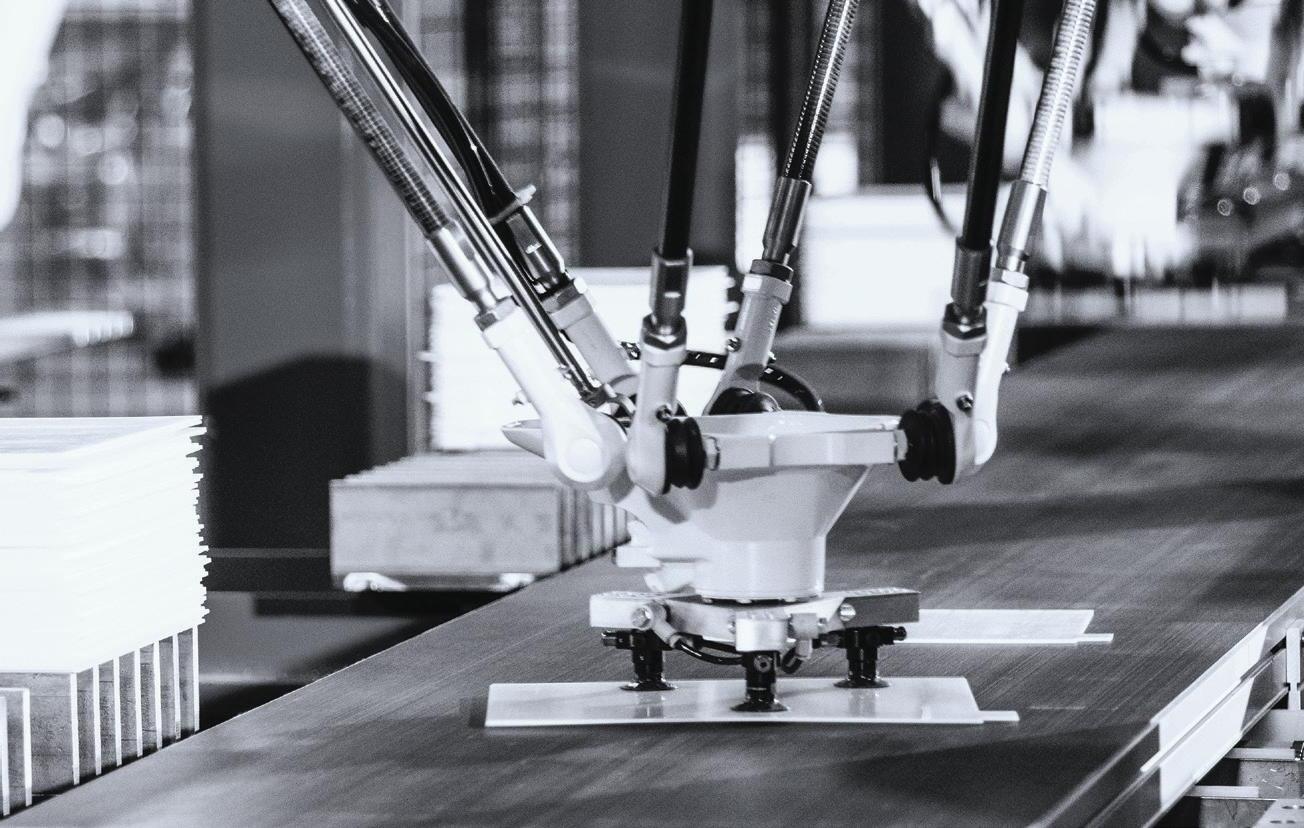


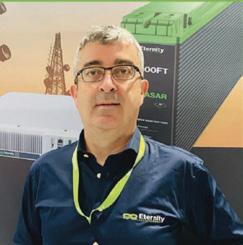

Eternity Technologies has announced yet further appointments to its sales team. Here, listed in order of their announcement over the past three months.
José María — Chema to his friends — Casado joined in June as a sales manager for the reserve power team. He has more than 35 years’ experience in the telecoms and infrastructure sector.
For the last 19 years he has worked as a sales manager for EnerSys dealing with national and international clients such as Telefónica, Orange and American Tower as well as integrators and subsidiaries such as Delta, Vertiv and Insyte Power.
Before that he worked at Salicru, Emerson and Ericsson.
Also joining Eternity in June is Alexander Manzanares who joins the reserve power team as an account manager. He was previously a product development engineer at ARaymond Network.
The month before Alain Perez joined Eternity Technologies on May 1 as regional sales director for Iberia [Spain and Portugal] and Latin America in the reserve power and semi-traction divisions.
Perez was previously at Studer Innotec, where he spent eight and half years as commercial and technical manager for Spain and LatAm. Before that
he was a regional head of technical support at Trojan Battery Company.
Perez, who is widely known across the lead battery industry, has received over 100 messages of congratulations on his Linkedin page.
Brad Bisaillon, Hammond’s VP for sales and quality assurance told Batteries International that he wished Perez the best in the new position. “I worked with Alain in Trojan several years ago, he is a gifted and well liked person. He also has a deep understanding of lead acid batteries and is not afraid to speak his mind about technical issues.”
Eternity announced his appointment on LinkedIn, saying: “With extensive experience in off grid solutions and the bloc battery industry, Alain will make a significant impact within our team.”
Perez also shared: “After closing one cycle, another more exciting one opens! I am very proud to work for an exceptional battery manufacturer with an impressive battery portfolio and quality.”
Elsewhere in Eternity’s operations in the Middle East in April Yamen Saleh and Alexandre Huet were added to senior positions on its reserve power sales team. Saleh has joined as a senior sales manager based in the Middle East and Huet as regional sales director based in France.
22 years’ experience in the battery industry.
Eternity Technologies has been rapidly expanding since it was formed in 2011 with manufacturing plants operating in Spain, Germany and the US and distribution hubs in Europe, Chile, South Africa, Singapore and India. The company is in the process of setting up Eternity Benelux in the Netherlands.
Saleh previously worked for EnerSys in Dubai where he was business development manager. He is a former sales director for the region at NorthStar, also based in Dubai. He has some 17 years’ experience in the energy industry.
Huet was previously a director of business development at EnerSys and NorthStar. He has some
The firm has been steadily expanding its product offerings. Last month, Eternity announced the launch of its QUASAR gel maintenance free battery tailored for the motive power market and in January, Eternity announced an expansion of its premium range with the launch of its QUASAR carbon nano flooded deep cycle bloc battery.
Rebecca Conway has been promoted to vice president, US/Canada for aftermarket marketing at Clarios, the lead battery manufacturing giant. She was previously executive director for marketing, strategy and technical services and had a long career with the battery manufacturing giant.
She joined the firm in 2010. Previously she had worked as a client service analyst in August 2004 with SC Johnson, the multinational diverse conglomerate that eventually split to became Johnson Controls and whose energy storage arm is now called Clarios.
Conway, who recently gave keynote presentations at the annual BCI convention, said she was: “proud to lead an amazing team

delivering industry leading marketing, category management, and technical support to our customers!”
News of her promotion provoked an almost record 500+ congratulations on the Linkedin platform. External comments such as “thanks for being a great role model for all women at Clarios” reflect her commitment to being a passionate advocate and leader for women in the automotive industry.


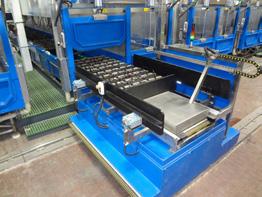
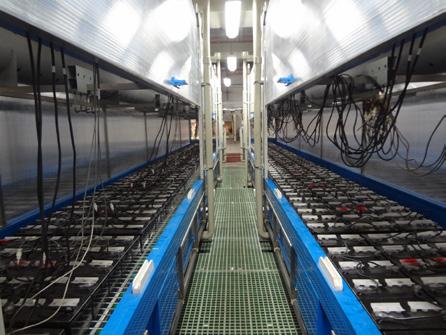
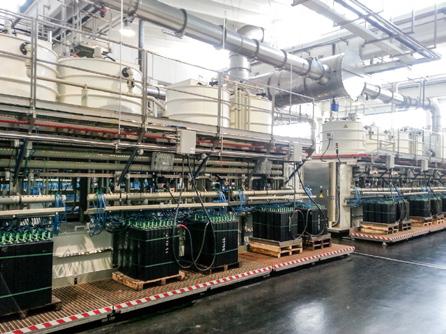

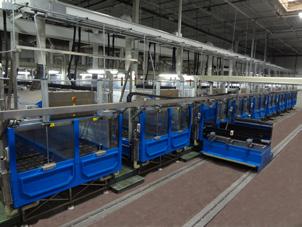
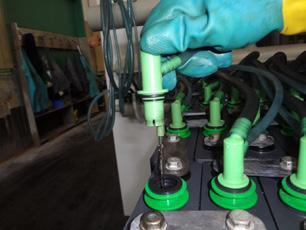

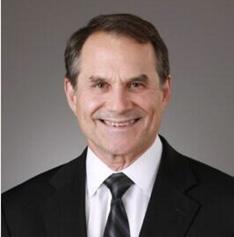
Michael Everett, who has spent the past five years as chief operating officer and president at bipolar battery developer and manufacturer, Advanced Battery Concepts, has joined Zeta Energy.
“Zeta CEO, Tom Pilette said: “The timing of this appointment is perfect. We are in the process of rapidly scaling up manufacturing for our game-changing lithium-sulfur battery technology, and he is one of the few people in the world with experience in scaling both materials and battery manufacturing. Michael will contribute enormously to Zeta’s success.”
Zeta has developed a sulfurized carbon material
that harnesses the energy density of sulfur, while preventing the polysulfide shuttle effect.
Sulfur has long been of interest to developers because its energy density is many times higher than that of traditional lithium-ion battery materials. Success in this technology has proved elusive though solid developments have been made in recent years, most notably in extending Li-S cycle life.
Everett joined ABC in June 2019 before becoming president as well as COO in September 2021.
An official at ABC told Batteries International that he wished him well: “This is a great opportunity for him. He continues to truly believe in our technology and I personally know it was a difficult decision for him. He has pledged to help us in the future in any way possible if he can.”
With over 30 years of experience in a variety of technology-based industries, Everett has held past senior management posi-
tions as vice president of engineering at Trojan Battery Company, CTO of Maxwell Technologies and senior director of engineering and research at 3D Systems Inc.
It was at Maxwell that Everett entered the energy storage world as it gradually moved into ultracapacitor development. He pioneered several initiatives inside Maxwell, including the development and industrialization of a then unique dry lithium-ion battery electrode manufacturing process.
“Given that Zeta Energy has also developed a dry electrode manufacturing process, there is a clear synergy between his skills and Zeta’s technologies,” said a commentator.
Before ABC he was vice president of engineering for Trojan where he was responsible for overseeing Trojan’s product development and research activities including all technical intellectual property innovation. During his time at Trojan, he also had direct
Osamu Murao became chairman and director of the Japan-based GS Yuasa Corporation as of June 27. The lead and lithium battery manufacturing giant announced the move on May 27. Murao was previously president and representative director.
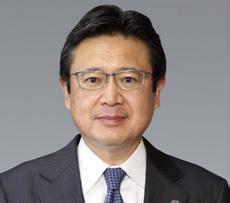
Takashi Abe, a director, became president and will also work as a representative director.
Yuasa said the appointments were supported at a board meeting on May 20 and should be confirmed at the company’s annual general meeting of share-

responsibility for process engineering among various other responsibilities.
“Michael has an exceptional track record of scaling up manufacturing in batteries and materials, and we are looking forward to doing amazing things together!” says Michael Liedtke, chief commercial officer of Zeta Energy.
Liedtke and Everett spent several years working together at Maxwell Technologies.
holders in June.
Analysis by Yuasa last March said manufacturers have everything to play for in keeping up with high global demand for automotive lead batteries for at least the next decade — and even expanding sales in some regions.
The company said its Automotive Battery Business Briefing showed global demand for lead batteries would not fall at an “accelerated pace” up to 2035, despite expected increases in EV sales.
Energy data analytics firm, Wood Mackenzie, announced in May that Jason Liu has been appointed CEO, replacing Mark Brinin, who is departing to pursue other opportunities.
Liu brings to the position more than 25 years of experience leading companies in the software and data industries. He most recently worked as CEO of Zywave, a provider of software, data, and analytics in the insurance technology space. Before this, Liu held CEO positions at SAVO Group, Allegro Development Corporation, UC4 and Univa UD.
Wood Mackenzie was acquired by Veritas Capital, a technology investor, from Verisk, last year, in a multi-billion dollar transaction.
“We are excited to welcome Jason to Wood Mackenzie as CEO,” said Ramzi Musallam, CEO and managing partner of Veritas. “Jason’s experience and skillset make him the ideal leader for Wood Mackenzie through this next transformative period of growth.”
Liu said: “Leading Wood Mackenzie during such a dynamic time in the global energy and natural resources sector is incredibly exciting.”
German battery manufacturer, Varta, has hired Michael Ostermann as chief executive, citing his restructuring experience as the company struggles with a return to profitable growth.
Ostermann, 58, started the job on May 6 but has already been involved with Varta for many months, the company said. Former CEO Markus Hackstein will return to Montana Tech, where he worked before joining Varta.
Shares in Varta plunged last month after the company warned it could miss targets for its restructuring program — blaming a cyberattack in February that disrupted production and forced the company to postpone full-year results. This, they said, was
compounded by supplychain problems and lower demand for its energy-storage products.
Michael Tojner, chairman of Varta’s supervisory board said: “We are delighted to have found an experienced candidate for the position of CEO in Michael Ostermann. He brings with him experience and knowledge that will provide important impetus in meeting the challenges that lie ahead for the company.”
Ostermann has implemented restructuring strategies in the automotive and energy-storage sectors, Varta said, citing his role at Exide Technologies, where he headed the company’s Europe and Asia divisions.
Ostermann said: “I chose this position because I
believe in Varta’s opportunities. I see the challenges. But most of all I see the
potential. Together, we will meet the challenges and realize the potential”.

“I
see the challenges. But most of all I see the potential. Together, we will meet the challenges and realize the potential” — Michael Ostermann
For the record, international battery maker, EnerSys, announced in April the internal promotion of Mark Matthews to the role of president, specialty global.
Since joining the organization in 2016, Matthews has held positions of increasing responsibility, spearheading development plans for a 4GWh lithium-ion cell factory.
Matthews has made extraordinary contributions to the energy storage and lithium battery technology industries. Before EnerSys these included designing and integrating a patented battery powered energy distribution system and a ground-breaking technology to reduce demand charges and utility costs.
He also facilitated the US army’s conversion
from Li-SO2 to Li-MnO2 technology, delivering 50% higher energy density at half the battery weight.
Matthews has also recently secured a comprehensive incentive package through South Carolina and Greenville County valued at approximately
$200 million, and is leading EnerSys’s efforts to secure additional project funding from the DOE.
“Since joining the company, Mark has delivered outstanding results, driving innovation in energy storage and lithium battery technology, and is
a trusted leader within the organization,” said David Shaffer, president and CEO.
“I am confident his visionary leadership and ability to execute will continue to accelerate our position as a critical enabler of energy transition.”
Clarios’s Quintanal named ‘best manager’
FAE Burgos, the Spanish business association, announced in April that Eduardo Quintanal, the operations manager in Spain for international battery giant, Clarios, had been named “Best Manager of the year 2024”.
“The distinction recognizes the exceptional professional career and leadership skills of Quin-
tanal, who has been at the helm of the Burgos plant since 2012,” said FAE.
“During his management, Quintanal and his team have managed to efficiently increase the plant’s productivity, safety and sustainability standards, incorporating cutting-edge technologies in battery manufacturing processes.”
Quintanal has been head of the Burgos plant since 2012. It makes the Varta brand of automotive batteries.
Quintanal has spent over two decades with Clarios and its former existence as the automotive battery business of Johnson Controls.
The official award ceremony was held in Burgos on May 16.
As with all the best ideas, it started over a KucheKuche beer in a Malawi bar 18 months ago. This week that lightbulb moment culminated in a $1 million prize for the innovation and development of a lead battery energy system that could transform large swathes of rural Africa.
The initiative, named Aftrak, was borne as CBI’s research and project director Carl Telford, and Loughborough University academic, Jonathan Wilson, were enjoying a drink of Malawi’s most famous brew while in Africa pitching another project.
Wilson had a sudden epiphany. What would be so hard in combining a microgrid powered by solar renewables, lead batteries and an electric tractor?
The answer was that it would of course be difficult. The question (over another beer) was whether it was doable?
It was a challenge that Telford, who has a background in similar operations, happily embraced by putting all the parts and players together. CBI and Loughborough put the team together. Within a few months of acting as project manager Telford had created a basic framework.
The UK’s Loughborough University would do the basic engineering designs, and the CBI would organize the funding using finance from the UK’s Innovate UK pot and also run the project.
Tiyeni, a Malawian charity (also a UK NGO) came onboard to handle the local logistics and with a network of some 30,000 farmers in the country would also be a key figure in the practicalities and future roll-out of
the project … if successful. International battery manufacturer, Clarios, agreed to supply Vartabranded, deep cycle truck batteries to power the electric tractors.
A huge amount was at stake. For the local farmers, an affordable electric tractor that could deal with the problem of so-called hard pan earth found in many parts of the country would be life-changing. Hard pan earth is when the topsoil is compacted and makes it difficult for water and roots to penetrate.
Tiyeni estimates that use of the electric tractors will boost crop yields by three times, creating a virtuous circle that would generate the extra money to increase the affordability of the electric tractors as well as boost the lives of villages that might be totally off-grid or have little power supply.
Part of the cleverness of the design is that the final product can be fitted together with a screwdriver and a hammer — a flatpack assembly accessible for anyone to use.
“We’ve now got one prototype tractor in place and operational,” says Telford. “And a second is almost ready.”
The immediate question to ask — since the entire battery storage industry seems to be shifting towards lithium — why use lead batteries?
The answer, quite simply, is one of cost and suitability.
Although lead battery performance decreases with heat, it is better placed to deal with high temperatures than lithium — maximum temperatures in Malawi’s hot wet season can reach 35°C — so the

economics of running it are far simpler.
“If we were to use lithium batteries for storage we’d have to introduce a cooling system and that would be more expensive and complicate the ease of assembly,” says Telford. “And then we have to think about the fact that lithium batteries are impossible to recycle economically and are more expensive to buy. Lead may be heavier but this isn’t a factor here.”
All their pioneering work culminated in an award ceremony mid-May in Hollywood, California where the Aftrak team received the Milken-Mostepe prize of $1 million for green energy. The money which comes from the Milken Institute and the Mostepe Foundation will be used to extend the project.
The run-up to winning the award — there were hundreds of entries from 79 countries — highlighted the intense competition for the prize.
“Our team was chosen in June 2023 by an independent panel of judges as one of 20 semi-finalists to receive $20,000 and test our solution combining solar array, battery energy storage and
micro electric tractor,” says Alistair Davidson, executive director of the CBI.
The judges, who awarded $1 million to extend the project, praised Aftrak for designing a system that includes an easily assembled solar microgrid and custom-designed tractors, which have tripled agricultural yield, increased farmer incomes, and provided electricity to remote communities.
“After a successful test in Loughborough, Aftrak was then one of five teams to advance to the final round. With an additional $70,000, we conducted a successful live demonstration in South Africa this February,” Davidson said.
Rolling out the micro-electric tractor system could support up to 500 million African farmers, says Patrice Motsepe, the South African billionaire who helped set up the prize. Motsepe joined The Giving Pledge in 2013 which commits him to giving up half of his wealth to charitable causes.
The initial roll-out will continue in Malawi but is then likely to be extended to neighboring countries such as Tanzania and Zimbabwe.
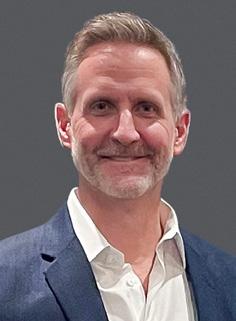
Bobby Lucas became Hammond’s new president and CEO on June 3. He takes over from the wellliked and popular Terry Murphy, 67, who has held the position since 2013.
Lucas told Batteries International that he was looking forward to the challenges ahead. “Terry will be a very hard act to follow,” he said.
“But I look forward to working with the entire Hammond team to continue to build on the incredible growth and transformation the company has experienced under his leadership during the last 10 years. The company has an incredible innovation history and a very bright future.”
Lucas has been a legal adviser to Hammond’s management team for over 15 years. He most recently worked as managing partner at the Chicago office of law firm Dinsmore & Shohl.
“Bobby has been a trusted adviser to the Hammond Group for many years,” said Murphy. “He led our divestiture of the Halstab division, guided us through our transformation to an ESOP (Employee Stock Ownership Plan), and has been instrumental in our strategy as a trusted member of our board of directors,” said Murphy.

“Bobby knows our industry and is a critical thinker whose wide range of professional expertise is unsurpassed. I am truly elated to entrust the legacy of this company to such a charismatic and sincere leader.”
In addition to more than 20 years as a corporate attorney, Lucas has held many senior positions with Dinsmore & Shohl. He has been chair of Dinsmore & Shohl’s corporate department, co-chair of the business, acquisitions and securities practice group, a member of the firm’s executive committee, on their board of directors, and was vice chair of the firm’s finance committee.
It was widely considered that during Murphy’s tenure, Hammond’s international standing and profile rose enormously.
Murphy told Batteries International that he would be grateful to be able to take some of the workload off his shoulders. “I still want to keep working but no longer at this pace — being head of Hammond is a 24-hour, 365 days a year job.
“I plan to remain on the Board, support Bobby and his staff to ensure a smooth transition, and will continue to explore new opportunities for Hammond, including a full transition to 100% ESOP.

“Thank you for the opportunity and support everyone in the battery industry has given me over the last decade. It has been an extremely rewarding endeavor for which I am forever grateful.”
Meanwhile the specialist oxide manufacturer, announced on May 1 that Anir Chakraborty has been appointed as sales director for the Asia Pacific region, and Ashley Tobin takes on the job of North American sales manager.
Chakraborty brings a wealth of experience from his previous role as the director of business development at Black Diamond Structures. While there, he worked with multiple lead battery manufacturers to conduct over 100 full-scale production trials across 10 countries, successfully commercializing advanced battery additives for various electromobility and energy storage applications.
During Chakraborty’s previous position as head of business development — EV traction & industrial battery energy storage at Exide Industries — he played a pivotal role in the business development of low and high-voltage batteries for electromobility, e-bikes, EVs, and various industrial applications.
Tobin joins Hammond
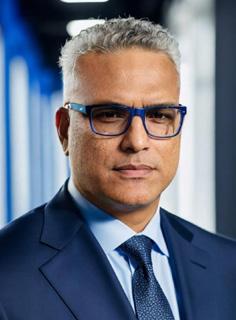
with a strong background in technical sales. OEM sales manager at Trojan Battery Company, she managed relationships with 30 such customers in North America.
Before that, she held the position of regional/OEM sales manager at Flow-Rite Controls, growing partnerships with lead battery manufacturers throughout a large territory spanning multiple states and Canada. She was critical in launching contract manufacturing of plastic components for Flow-Rite’s motive power business segment.
“Anir comes to us with over 20 years in the lead battery industry throughout Asia and, he will continue to expand our presence in the Asia-Pacific region and deliver innovative battery solutions to our customers,” said Brad Bisaillon, Hammond’s VP for sales and quality assurance.
“Ashley brings established relationships with Hammond’s key customers in North America, enabling her to build upon Hammond’s strong partnerships. In addition to supporting our growth in the region, she will continue to drive the upcoming launches of our new performance additive innovations.”

Skeleton Technologies, the Estonian headquartered international supercapacitor firm, has announced the appointment of former Shell VP, Grischa Sauerberg, as chief commercial officer.
Sauerberg will lead Skeleton Technologies’ commercial organization, responsible for sales, project management, application engineering and marketing. He will also be a key figure in a possible IPO of the company in 2027.
Sauerberg brings over two decades of experience from Shell, where he has held numerous high-ranking positions, most recently as vice president of sectoral decarbonization & innovation. In this position he collaborated with Skeleton on electrification of mining trucks and operations.
“Grischa’s vision and expertise align perfectly with our goal of enabling the electrification of hard-to-decarbonize sectors,” said Taavi
Madiberk, CEO. “He will bring his background in the energy and mining sectors, as well as in the commercialization of innovative decarbonization solutions, to accelerate our business growth and expand our impact globally.
“Having been a customer of Skeleton, his insights from the perspective of large clients will also be extremely valuable for the entire company.”
Grischa said: “Joining Skeleton Technologies represents a continuation of my commitment to accelerating the muchneeded energy transition through innovative solutions for hard-to-abate sectors. Right now, their path to decarbonization is hampered by the lack of available technologies fitting their needs for highpower and fast charging.
“With its supercapacitors and SuperBattery, Skeleton has the perfect products to enable these sectors’ electrification and I look forward to expanding the

company’s commercial traction further.”
At the end of May Skeleton appointed David Arsenault as senior vice-president of business development.
Based in Montreal, Canada, he focuses on advancing Skeleton Technologies’ presence in North America. David occupies the central role of lead representative of that region.
In 2006, Arsenault was one of three co-founders of Effenco Development, a company pioneering heavyduty vehicle electrification using supercapacitors. This venture stemmed from his PhD engineering research on developing more effi-
Apatura appoints Hanglin new CEO
Apatura, a UK grid storage aiming to push its 10GW pipeline of BESS projects into commercial operation, has appointed Giles Hanglin as its new CEO. Hanglin has 15 years of
experience in the renewable energy and storage industry.
He was CEO and co-founder at Cambridge Power, a firm that developed a distribution
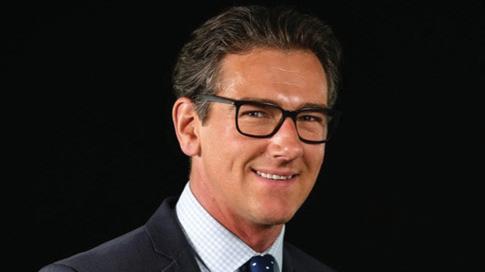
connected battery storage portfolio in Great Britain, and structured joint ventures with SMS Plc and with Brookfield Renewables.
Hanglin said: “their portfolio looks to complement the needs of NGESO in Scotland perfectly. Apatura has amassed one of the most significant storage portfolios in the UK and now is the time to start to deliver that to commercial operation and play a key role for the UK in meeting its net zero targets with tangible and deliverable projects.”
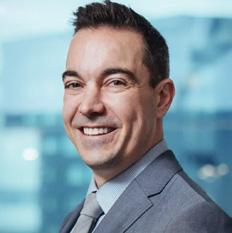
cient powertrains for heavyduty vehicles using real operating data.
Arsenault says he has always believed in the value of supercapacitors for heavy-duty vehicle applications.
Effenco co-founders analyzed vehicles’ stop-start phases, and then developed a technology that would tackle the problem of reducing energy consumption.
“We knew what the answer was — to reduce energy consumption when the vehicle wasn’t moving,” says Arsenault. “But it took years before we could build the right system. We finally found the right solution that made sense both economically and commercially.”
Arsenault has filed more than 30 patents related to supercapacitor technologies and successfully raised over $40 million.
Effenco’s assets were acquired by Martinrea International in July 2022.
Arsenault says he aims to complement Skeleton’s data-centric approach with his experience as an innovator in heavy-duty electrification: “Data has always been at the heart of my product development strategy. By collaborating with Skeleton, I plan to help OEMs reduce CO2 and improve the efficiency of their vehicles by integrating the SuperBattery into their vehicle architecture.”
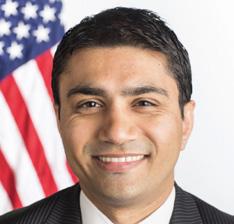
Two of Tesla’s senior staff have resigned in the aftermath of the company confirming in mid-April that it would be laying off more than 10% of its global workforce.
Drew Baglino, senior VP for powertrain and energy engineering reported directly to Musk, and Rohan Patel VP of public policy and business development both confirmed their resignations on their X accounts.
Musk responded by thanking them both for their service.
Baglino said: ‘‘I made the difficult decision to
RECHARGE director general steps down after 11 years
For the record, RECHARGE, the European trade association for advanced batteries, announced in April that its director general, Claude Chanson, will be retiring this year as head of the Brussels office.
After 11 years at the organization, Chanson will continue working in the battery sector and will act as an adviser to ensure a smooth transition.
“The batteries sector has become a key element of EU industrial policy, embodied by the decision to create the EU Batteries Alliance and I would like to thank Claude for these achievements,” says

move on from Tesla after 18 years yesterday. I am so thankful to have worked with and learned from the countless incredibly talented people there over the years.”
Patel was at Tesla for eight years and called himself the ‘luckiest dude’ in a post on X. He also has government experience, having served as a climate and energy policy senior adviser to US president Barack Obama during his second term.
Neither responded when Batteries International tried to contact them. Baglino said on X: “Looking forward, I have no concrete
Patrick de Metz, chairman of the board.
“Under Chanson’s tenure it has become key in the sector, putting the interests of the industry at the forefront of EU agenda.
RECHARGE, a non-proifit organization advocates for the advanced rechargeable and lithium batteries industry in Europe.
Inbatec two to pastures new German lead-acid battery formation company Inbatec announced at the end of May that two of their team were moving on.
Maryam Mahdipour has been a regional key account manager at Inbatec for almost five years and joins
plans beyond spending more time with my family and young kids. But, as people who know me well can attest, I have difficulty sitting still for long!”
Separately, Tesla shares dropped this week after an internal memo was leaked announcing layoffs which commentators speculate could reach as much as 20% of its workforce in some divisions.
Musk sent a company-wide email last weekend announcing the job cuts, saying the “difficult decision” to reduce staff will “enable us to be lean, innovative and hungry for the next growth phase cycle.”
Teslar eported a decline in vehicle deliveries in the first quarter — its first in nearly four years — blaming a drop in EV car demand, the arson attack at its factory near Berlin and supply-chain issues caused by the Red Sea conflict.
Wetac as product manager, lithium. Previous to this she spent six years at Yekta Battery Sepahan as a plant operations manager.
Sascha Dobrowolny leaves Inbatec after almost seven years working as head of research development and most recently as business development manager. He joins Duotec as manager of the technology lab.
Inbatec global VP of sales and business development, Nick Hennen, said: “I want to wish two of my colleagues who have moved on to new, exciting careers all the best. It was an absolute pleasure working with you. Hopefully our paths will cross again in the future, both professionally and personally.
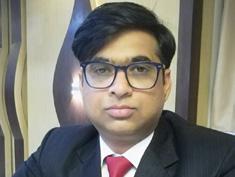
ENTEK, the US-based separator manufacturer, announced in May that the company had made two senior appointments.
Ankur Singh (above) has been promoted to India country manager (for lead and lithium separators), “to head up the company’s strategic alignment with key customers and market development initiatives”.
Rajneesh Singh (below) has been promoted to regional sales manager, MEA & SAARC. Singh will take on additional market responsibilities in Africa and the Middle East to support ENTEK’s new emerging markets around the world.
“The company said his expertise has helped customers use ENTEK separators to build the world’s best batteries.
“Both Ankur and Rajneesh embody ENTEK’s culture of commitment, integrity, and drive to succeed,” said Clint Beutelschies, VP of global sales & marketing.
In the past 20 years ENTEK has been the only US owned and US based producer of wet-process separators for lithium batteries and continues to invest in the future of the domestic lithium battery industry, says a company statement.
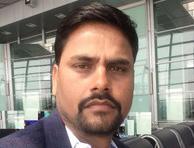
NEGATIVE EXPANDER The expander may be negative, but your experience will be entirely positive.
The job of negative expander is to reduce strain, maintain capacity and improve performance. In a way, that’s our job, too.
At APG, we deliver the best products and customer satisfaction in the industry through unwavering focus and personal relationships.
We offer the best pre-blend negative expander on the market, brought to you by a certified Women’s Business Enterprise and family-owned company you know and trust.

Find out more at atomizedproductsgroup.com info@atomizedproductsgroup.com
For the record, EnerSys, the international battery manufacturer, announced on April 4 it had been awarded the Better Project Award from the US Department of Energy Better Plants Program for advancing lead
battery technology, specifically for the implementation of the Sovema Cold Cube cutting system.
This is the second award that EnerSys has received in two years from the government.
The DoE said EnerSys had: reduced embedded Scope 1 carbon emissions by 20% per battery produced; improved worker safety by removing lead recovery processes, reducing waste by about 20,000kg of lead per year;
Metair Investments has warned of an “extreme likelihood” that demand for its lead batteries will fall significantly within the next decade amid global moves to phase out internal combustion engine vehicles. Potential growth for its business may well be set for Africa.
The battery and automotive group, whose energy storage division includes Turkey’s Mutlu Akü lead battery business, Romanian lead and lithium company Rombat and South Africa’s First National Battery (FNB), said in its finalized climate change report for 2023, released on May 17, that lead battery sales are expected to fall with the
transition to new energy vehicles (NEVs).
Metair said that the transition is extremely likely to trigger a decrease in demand for its batteries in the next 10 to 20 years, which could significantly impact its growth and sustainability within export markets served by FNB’s OEM customers in South Africa as well as the OEM and aftermarket sales in Mutlu Akü and Rombat territories.
The company said it has already started diversifying sales of lead acid batteries towards the larger aftermarket sector in Africa, where NEVs are expected to take much longer to penetrate.
In addition, the group said
it is increasing expenditure and R&D into next-generation batteries that can meet NEV energy storage demands.
Meanwhile, Metair said it is committed to becoming net zero across the group’s entire value chain, in line with ambitions to limit the global rise in temperature to 1.5°C compared with the pre-industrial era.
Interim targets to mark progress toward reducing carbon emissions across the group have been established and are being monitored bi-annually.
Metair has stated it plans to sell off its energy storage division when it deems market conditions are right.
saved nearly 500,000 gallons of water per year by eliminating the need for water cooling in the cube production process; and, reduced the need for exhaust ventilation to remove lead fumes and benefited with a reduction in permitted lead emissions
EnerSys says the Sovema Cold Cube cutting system eliminates the need for traditional energy-intensive lead heating, melting and cooling processes. The system utilizes a cold process to trim lead into cubes of necessary thickness directly from its solid state.
Patrice Baumann, chief integrated supply chain officer at EnerSys, said: “Receiving this award is a testament to our commitment to innovation and sustainability.
Eternity Technologies in Spain telecom batteries deal
The Spanish operations of Eternity Technologies announced on May 22 it had secured a multi-million dollar contract to supply stationary battery systems to an unnamed leading telecoms operator in the country.
The CEO of European lead battery giant, Monbat, has unveiled plans to expand facilities including a new assembly line at its plant in the town where the group was founded 65 years ago.
Viktor Spiriev told members of parliament and regional civic leaders in Montana on May 2 that, in addition to the line for AGM and SLI batteries, there will also be lines for terminal insert manufacturing and washing separators. Spiriev did not disclose investment costs, capacity increases or a timeline for launching the new facilities but said the project would
create a total of 35 new jobs at the site, in Bulgaria’s northwest. “Despite the fact that we are operating in a business related to one of the earliest adopted electrochemical technologies, we are constantly improving it via innovations,” Spiriev said.
Around 65% of the group’s turnover in 2023 — BGN248 million ($138 million) — was derived from operations in Montana, including lead battery manufacturing, recycling and related activities, Spiriev said.
Some BGN 225 million of the group’s total consol-
idated revenue (BGN 353 million) last year was the result of exports from Montana.
Separately, Monbat confirmed on May 9 that it is working with Bulgaria’s Institute of Electrochemistry and Energy Systems to create a laboratory to test what the group described as new generation energy systems — including a hydrogen refuelling facility for vehicles with fuel cells and lead-carbon battery tech targeting BESS opportunities in the renewable energy and industrial manufacturing sectors.
The lead battery manufacturer said in a LinkedIn post that details of the deal will be provided later.
However, the company confirmed the contract is for “high-performance stationary batteries with capacities ranging from 200Ah to 4000Ah” to be supplied in 2024 and 2025.
In addition to Spain, Eternity has operations in the United Arab Emirates, Germany, the US, Chile and South Africa.
Eternity launched its QUASAR Carbon Nano Gel Bloc in March 2022 to serve global markets and demanding applications such as light traction, leisure and solar.
The UK Infrastructure Bank announced on May 2, a £25 million ($32 million) direct equity investment into Invinity Energy Systems, a manufacturer of vanadium flow batteries.
This is part of a £56 million ($72 million) fundraising on AIM, London’s alternative investment market to support the commercial development of longer-duration energy storage (LDES).
The objective is to accelerate the deployment of Invinity’s existing and next generation vanadium flow battery products on to the UK grid.
“This will accelerate the manufacturing of almost 100MWh of Invinity’s next-generation product
(code-named “Mistral”) with first deliveries expected to start in late 2024,” says an Invinity spokesperson.
According to one commentator, speaking to Batteries International: “LDES — typically reckoned to start with at least four hours continuous battery output — is increasingly being seen as the next mountain for energy storage to climb.
“National Grid forecasts show that up to 29GW of total storage could be needed by 2030 and up to 51 GW by 2050. This is a huge increase on the 6GW currently available and means there is a clear need to accelerate deployment
of capital and investment in new storage projects.”
Larry Zulch, CEO at Invinity Energy Systems, said: “We’re grateful for the support of existing investors who have enabled us to advance Mistral, our next-generation battery, to near completion, and for the support of new investors, such as Korea Investment Partners, who have embraced our vision of profitably meeting global demand for LDES.”
The investment will support the expansion of Invinity’s footprint in Scotland, in particular the proposed opening of a new manufacturing site, in addition to its existing facility in
Bathgate. It will create up to 41 new jobs in the region.
A UKIB spokesperson said: “This is our third direct investment in the battery storage market following its £60 million loan to support Pacific Green in November and a £62.5 million commitment to Pulse Clean Energy in May 2023.
“This is in addition to £200 million commitment into the Equitix UK Electricity Storage Fund and Gresham House Secure Income Renewable Energy & Storage LP (SIRES).”
Invinity’s fundraise, including UKIB’s investment, is subject to the approval of the company’s shareholders.
+ EFB / AGM Battery
+ Industrial Battery
Higher paste density
Improved porosity
Better active mass utilisation
Lower internal resistance
Reduced heat evolution
Higher cycle life performance
Higher initial capacity
Better long-life stability & capacity
+ Formation energy & time savings
+ CO2 footprint reduction
EnerSys the industrial battery giant announced at the end of May its results for its fiscal year ending March 31, 2024.
In brief the figures show that its net sales were down 3.4% to $3.582 billion from $3,780 billion in fiscal 2023. EnerSys attributed this to “a 7% decrease in organic volume” that had been offset by a 4% increase in pricing.
Adjusted net earnings per diluted share for fiscal 2024, on a non-GAAP basis, were $8.35. This compares to the 2023 earnings figure of $5.34 per diluted share.
Net earnings for the fiscal year 2024 were $269.1 million, which included an unfavorable highlighted net of tax impact of $76.2 million. This compared with $175.8 million in fiscal 2023.
David Shaffer, president and CEO said: “We delivered a strong finish to the fiscal year with our balanced business portfolio delivering solid results, highlighted by adjusted
earnings per share at the high end of our guidance range.
“We generated gross margin improvement and adjusted operating earnings growth in our base business, which were bolstered by IRC 45X tax credits. In addition, we are realizing the benefits of our cost improvement actions in energy systems, and we are positioning the business to benefit from future growth opportunities.
“Fiscal 2024 was a year of several achievements toward our longterm strategic goals, as we navigated through a challenging environment. We are confident that the foundation we put in place this year, coupled with the investments we have made in our transformation, will
yield accelerating results in the coming years.
“Energy scarcity will continue to be a global concern as megatrends are driving rapid growth in demand for reliable power. As a critical supplier of energy systems and energy storage solutions, EnerSys is strategically positioned to capitalize on this growth. Looking to fiscal 2025 and beyond, we remain focused on achieving the long-term targets [already set] and delivering long-term value to our stockholders.”
He said plans on the development of its lithium-ion cell gigafactory had progressed and in the final quarter of the fiscal year Greenville, South Carolina, was chosen as its location with state and local funding totalling $200 million having been acquired.
“Fiscal 2024 was a year of achievements toward our long-term strategic goals, as we navigated through a challenging environment.”
Lead battery manufacturer Banner reported full-year sales of €302 million ($328 million) on May 28 — a tiny decrease on last year’s figures.
Sales from for the financial year ending March 31 included 4 million starter and on-board network batteries.
Commercial director Andreas Bawart said lead-acid batteries would continue to play a major role in supplying vehicles with electricity, despite the declining trend towards electromobility: “The
initial euphoria for electric cars has waned and disillusionment has set in. Many first-time buyers of electric cars realize that promised driving ranges are not being achieved and that public charging options are still inadequate.”
The Austria-based firm said its latest financial report confirmed its strategy in a ‘challenging environment’ in which it had been still able to assert itself.
The company attributes the challenges to, among other things, increased
The firm has applied to the US Department of Energy for additional funding and expects the result to be announced in August. “We intend to use the IRC 45X tax credits to increase our investments in domestic manufacturing of energy dense batteries, as the law intended,” said Shaffer.
Andrea Funk, EnerSys CFO said: “We remain optimistic about the trajectory of our business and are on track to achieve the aggregate fiscal year 2027 targets we set at our Investor Day in June 2023.
“While we are seeing healthy demand trends in the majority of our end markets, we are managing our business prudently to navigate the temporary spending pauses by our telecom and broadband customers. In the first quarter, we expect seasonally lower volume in motive power and continued telecom and broadband spending pauses in energy systems.
competition from Asian manufacturers entering the European market and putting pressure on the automotive industry. Because of this and due to the cuts in government subsidies for electric vehicles in Germany, the number of new registrations of battery-electric vehicles has decreased significantly However, Bawart said even if drivers turn more towards electric variants again, the company would not run out of work by sticking to lead-acid technology.
“We expect to see some cost improvements and benefits from operational efficiencies flowing through to our bottom line. For fiscal year 2025, we expect volume growth driven by maintenance-free products in motive power, an increase in transportation aftermarket sales, and our first revenues from Fast Charge and Storage, with only moderate recovery in telecom and broadband markets to begin to occur towards the end of the fiscal year.
“The need for intelligent energy storage and management systems will only increase as the demand for electricity is significantly outpacing the capacity of the global grid infrastructure. EnerSys is well-positioned to capitalize on market opportunities as we deliver innovative products that are strategically aligned with these secular trends.”
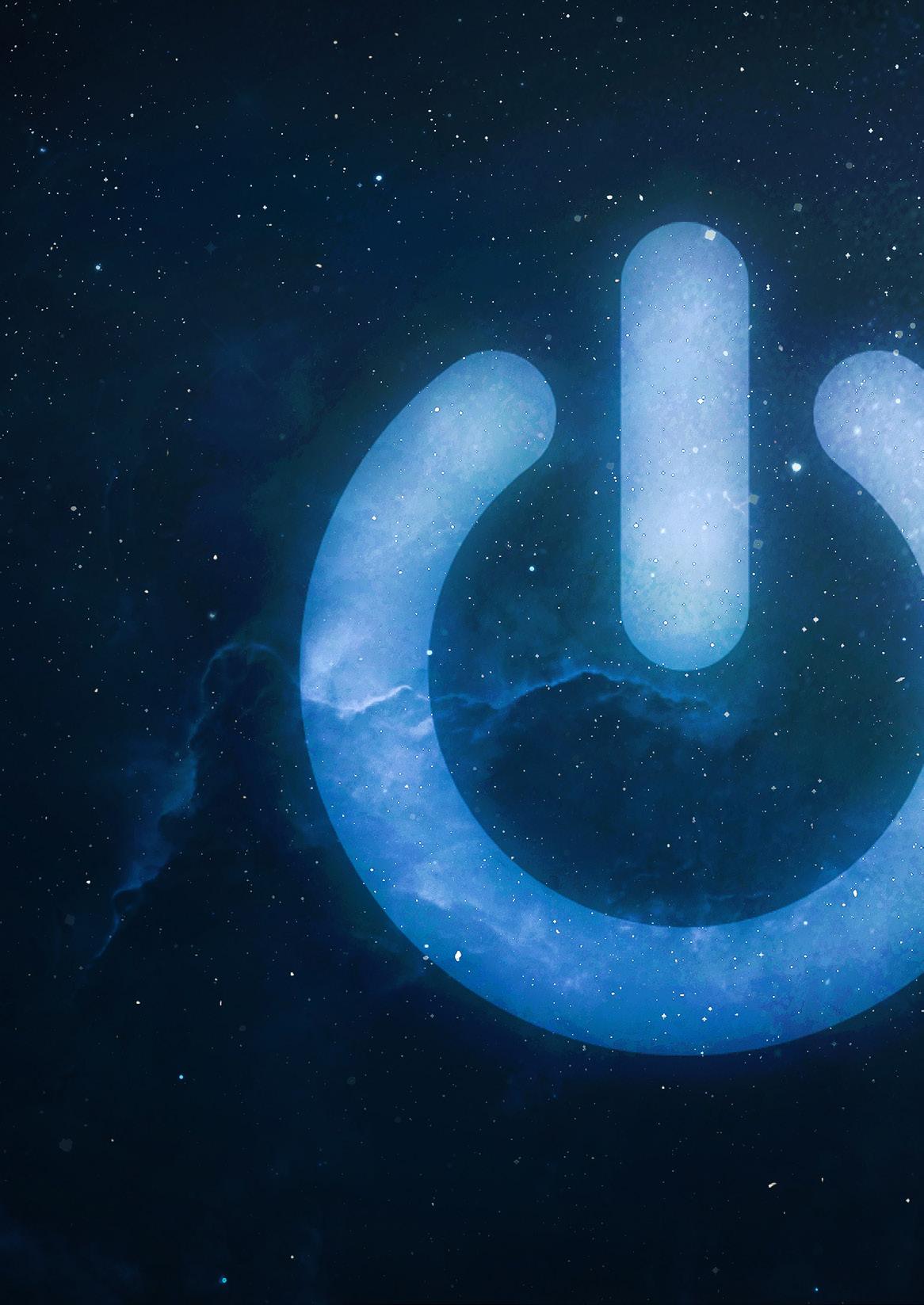
Sunlight Group, the Greece-based international battery manufacturer, announced on May 1 its annual financial results for the year end of December 31, 2023. They show a third year of record operational and financial performance.
Revenues reached €1,087,7 million ($1,164 million) — an increase from €416.5 million in the previous year and more than €120 million on a like-for-like basis, Earnings were up 141%.
The number of staff has also soared — there were now 3,630 employees, marking a substantial increase of 2,075 individuals compared to the previous year. Over half of these were international hires with the largest increases coming from Germany and the US.
The growth, says the group, was propelled by the first-time consolidation of recently acquired businesses; a surge in sales driven primarily by volume, particularly in the North American market and heightened demand for its new energy solutions business.
Key profits — some 28% of the revenue in its motive power operations — was generated by lithium-ion sales. The US motive power business accounted for more than 20% of the power sales of the group and was forecast to continue to grow rapidly.
“In 2023, we embarked on an extensive series of M&A transactions, accelerating our innovation program, and achieving sustainable volume growth. At the same time, we expanded our customer base and entered in new
applications which will play a key role in future sales and profitability generation,” said a company spokesperson.
The firm said it had a technology agnostic approach to energy storage with investments being made in both lead and lithium technologies.
Some €124.4 million was allocated to CAPEX investments in 2023, with “a primary focus on expanding innovation and production capacities in lithium-ion technology as well as to expanding production capabilities in the lead-acid technology.”
The group said it was pleased with its investments in grid scale energy
storage systems, alongside the development of lithium cells tailored for off-road industrial applications, marked by the establishment of a new production scale pilot line in Xanthi, Greece.
Lampros Bisalas, Sunlight CEO, said: “Our 2023 operating and financial results underscore our resilience and commitment to sustainable growth amid challenging economic conditions, with strategic investments driving robust performance across key metrics.
“Despite significant headwinds such as a declining motive power market due to increasing interest rates, financial uncertainty,
macro-economic and geopolitical reasons, rising energy costs and substantial inflationary pressure across materials and labor costs, our organization is poised to pursue a leadership role, particularly in the EMEA, US and Southeast Asia-Oceania markets, where we operate a total of 16 plants and 35 sales and service facilities.”
Bisalas said Sunlight was embarking on a comprehensive reorganization aimed at “fostering greater flexibility and structural clarity in decision-making processes. This strategic move will empower us to pursue more ambitious targets with confidence, speed, and efficiency.”
Indian battery giant Amara Raja Energy (formerly Amara Raja Batteries) reported on May 28 that its standalone net profit rose nearly 62% to Rs2,285 billion ($27.4 million) in the three months to March 31, helped by strong demand for its batteries from car manufacturers.
The company reported this week that it will invest around Rs 3,000 crore (1 crore equals 10 million rupees) over the next two financial years as capital expenditure in its energy and lead-acid businesses as it plans to participate aggressively in India’s growing EV market.
As the country’s largest lead-acid battery manufacturer, the firm generates 67% of its revenue from the automotive battery sector and is looking to strengthen its existing lead-acid battery opera-
tions while diversifying into new energy sectors, including lithium cell manufacturing, battery pack assembly, power electronics, and charger manufacturing.
“For fiscal 2025, we may need to spend close to about Rs1,500 crore between lead acid and new energy business,” the company’s CFO, Delli Babu said in an investor call on May 30. “Lead acid would need about Rs300-Rs400 crore, whereas the new energy business will require Rs1,000-Rs1,100 crore as capex.”
He said capital expenditure for FY26 would be similar.
One of the cornerstone projects of this investment is the Telangana so-called, ‘giga corridor’ for manufacturing lithium-ion cells and battery packs, which broke ground
in May 2023. Over the next decade, the factory will ramp up to a 16GWh cell capacity and a 5GWh battery pack capacity.
The company plans to start commercial operations of the first phase of the factory with a capacity of 2GWh by the end of 2025-2026. The cell capacity of 2GWh is estimated to cost Rs 1,500 crore.
In addition to the lithium-ion projects, Amara Raja is also planning to begin commercial production of localized battery chargers within the current quarter. Initially targeting three-wheelers, the company aims to extend its charger business to include two-wheelers by year-end. The construction of a battery pack facility in Telangana has been completed, with commercial production to start next month.
Solnet Group, a European project planner of commercial & industrial solar installations, is launching virtual power plant services called Solnet Manager where customers earn revenue by maintaining the electricity grid using solar generated power that is stored in the VPP.
The platform, developed by Solnet Group, allows commercial and solar utilities to join a collective pool of virtual power plants, enabling them to participate in balancing markets and offering greater grid stability. Companies participating in the VPP network receive compensation for being on standby
and providing production flexibility.
Solar utilities and energy storage units can play a crucial role in grid balancing services, helping counteract the variability of renewable energy generation and generating extra income for participants, says the firm.
“Previously, such market opportunities were available only to large-scale energy consumers and producers, but now smaller commercial solar utilities and variable-capacity energy storage can also partake.”
Solnet Manager is launching first in Finland, with planned subsequent
markets including the Netherlands and Germany.
“With the launch of Solnet Manager, we are addressing a crucial gap in virtual power plant participation for small and mid-scale installations,” says Arttur Kulvik, SVP and co-founder of Solnet Group, who has been responsible for the development of Solnet Manager.
“This will bring a new era to solar PV and energy
storage markets, as it makes onboarding variable-size utilities for balance market participation easy, cost-effective, and profitable. In doing so, they can become part of the solution for overcoming the volatile nature of renewable energy production and grid congestion issues, earning additional revenue while ensuring the optimal functioning of energy grids. Everyone wins.”
“With the launch of Solnet Manager, we are addressing a crucial gap in virtual power plant participation for small and mid-scale installations”
ESS, the iron flow battery company. confirmed in May, a partnership with Nigerian energy company, Sapele Power, for its first project in Africa within hours of announcing the commission of a long duration energy storage (LDES) system at Amsterdam’s Schiphol airport to support the electrification of ground operations.
ESS’s partnership with Sapele for a project using
For the record, Canadian-based company, ZincFive, has been announced a winner of the Overall CleanTech Innovation of the Year Award 2024. The nickel-zinc battery manufacturer was selected on April 11 by CleanTech Breakthrough, the organizer of the awards. This year’s program attracted thousands of nominations from over 12 different countries throughout the world, say the organizers. “Award winners have been chosen based on
iron-flow technology to improve generation efficiency in Nigeria, represents the largest US government-financed battery storage system export to Africa to date, and will provide an initial 1MW/8 MWh of long duration energy storage.
An ESS spokesperson said its iron-flow technology will provide safe and sustainable LDES which will enable load-smoothing, peak demand shifting and enable
their technological contribution to a more sustainable future.
“They are given to “honour and recognize breakthrough achievements and innovations in the clean technology industry”. They encompass a wide range of categories in the sector including renewable energy, smart grid technology and sustainable transportation.
ZincFive CEO and co-founder Tim Hysell, said: “We maintain that immediate power should be powerfully sustainable,
the Sapele power station’s turbines to ramp up and down efficiently.
According to the International Energy Agency, an estimated 40% of all the electricity consumed in Nigeria is produced from backup generators due to unreliable power supply caused by limited grid infrastructure, underinvestment and ineffective regulatory frameworks.
Projects such as the ESS/
as well as safe. That’s why, unlike other electrochemistries, the elements of our battery chemistry require fewer resources to produce and can be recycled again and again.
“And with zero risk of thermal runaway at the cell level, our batteries deliver high-rate immediate power that’s safe for both people and the planet.”
CleanTech Breakthrough is part of the Tech Breakthrough organization, a market intelligence company.
Sapele collaboration show the opportunity to improve grid reliability and efficiency through the addition of battery storage resources, the company said.
ESS’s iron-flow LDES solution at Schiphol airport is the first commissioning of an operational iron-flow battery in Europe.
The project is supported by TULIPS, a consortium funded by the EU to accelerate sustainable technologies in aviation.
This deployment is set to demonstrate how LDES can be implemented in the aviation industry throughout Europe. It will enable Schiphol airport to phase out the diesel ground power units that supply electrical power to aircraft. Instead, these will be replaced with Electric Ground Power Units (E-GPUs).
Specifically, ESS says its batteries are ideal for equipment requiring up to 12 hours of flexible energy capacity. They were also selected due to its inherent fire safety, making it safe to use when close to passenger aircraft.
The lithium-ion battery market will peak then collapse within the next 20 years, according to a report by Zhar Research released in early June.
“Lithium-ion batteries are facing a slow but inexorable replacement by other ion-batteries, starting with sodium-ion then perhaps aqueous zinc-ion batteries,” it said.
However, the report says the need for long duration energy storage will become an ever more important issue given that there is a growing awareness that LDES needs to go beyond
the four-to-eight hour mark to even months-ormore grid storage.
These, it predicts, will mostly be mechanical systems such as gravity and underground compressed air storage, although redox flow batteries may have a role.
“Although GWh deployments of lithium-ion batteries do occur for under eight hours duration, they are merely a stopgap in the face of scalable, non-flammable, non-toxic alternatives coming in with one tenth of the levelized cost of storage and 20 times
the life at that duration (very little recycling),” the report went on to say.
Non-electrochemical energy will come to the fore. A good example, suggests the report, is in Queensland where the Australian state will install the largest pumped hydro storage, storing electricity for up to months.
“There are, says the report, other gravity/ energy storage possibilities around.
The report says there is also a full orderbook for proven compressed air in underground caverns such
RWE, the international battery storage developer, announced on May 28 it had been awarded a longterm energy service agreement to build Australia’s first eight-hour battery in New South Wales.
“With a planned capacity of 50MW and 400MWh, the Limondale BESS will support the energy transition by storing excess renewable energy and feeding it into the NSW grid when it is needed most,” said an RWE spokesperson.
The project will be located next to RWE’s
249MWac Limondale solar farm, which is one of Australia’s largest.
The BESS will connect to existing grid infrastructure. Tesla is the BESS supplier. Beon Energy Solutions is the delivery partner for the Balance of Plant, which includes the civil, structural, electrical and control works required to connect the megapack to the existing 33kV substation.
Construction is scheduled to start in the second half of this year, with commissioning planned for late 2025.
Katja Wünschel, CEO for RWE Renewables Europe & Australia said: “RWE’s investment signing of supplier contracts for the Limondale BESS project is an exciting step forward in our commitment to the Australian renewables sector and support of New South Wales’ renewable energy ambitions.
“RWE develops, builds and operates innovative and competitive battery storage systems in Europe and the US, and soon here in Australia.”
Australia is one of RWE’s focus markets,
Montea, the Belgium real estate investment trust, is to invest almost €30 million ($32.5 million) in battery-based energy storage systems, the company announced on June 7. Montea describes itself as a developing investor in logistics real estate in Belgium, France, Germany and the Netherlands. The company will invest €17.5 million ($18.9 million) in installing BESS
at 14 of its sites across Belgium, equipping almost half its portfolio with energy storage by the end of the year. This will be equivalent to a total storage capacity of 35 MWh.
The company also plans to invest another €12.5 million ($13.5 million) in the Netherlands in the near future.
The stored energy will be used to light, heat, and cool logistics platforms, as
as old salt mines, with 84 days the current record. “Already, plenty of orders for 12 hours duration of subsequent discharge or more are being placed, with lithium-ion batteries not even considered. LDES will be at least 30% of the total market in 2044 and another no-go area for lithium-ion,” says the report.
The CEO of Zhar Research behind the findings, is Peter Harrop, a respected chairperson of more than a dozen hightech companies and founder of the firm.
well as to power electric vehicles. The installation of these BESS will also help alleviate some of the congestion on the grid.
“Our logistics centres are already a leading force in sustainability,” said Dirk Van Buggenhout, chief sustainability officer at Montea. “By installing battery energy storage systems, we can supply more energy to our customers and help stabilize the grid.”
where it has been present since 2013. In 2018, the company began construction of the Limondale solar farm in Balranald, New South Wales. With an installed capacity of 249MWac the large-scale solar farm is made up of 872,000 panels and generates enough electricity to power about 105,000 homes a year. Full commercial operation started in 2021.
RWE says: “Our Australian team of more than 70 is developing a portfolio of wind, solar, and battery storage projects across the country, supported by the global RWE team. RWE intends to develop up to 3GW of renewable energy projects in Australia by 2030.”
RWE operates battery storage systems with an overall capacity of more than 700 MW and 1.2GW of battery storage projects under construction worldwide. The company recently commissioned three US battery storage projects totalling 190MW.
RWE says it plans to expand its battery storage capacity to 6GW worldwide by 2030.
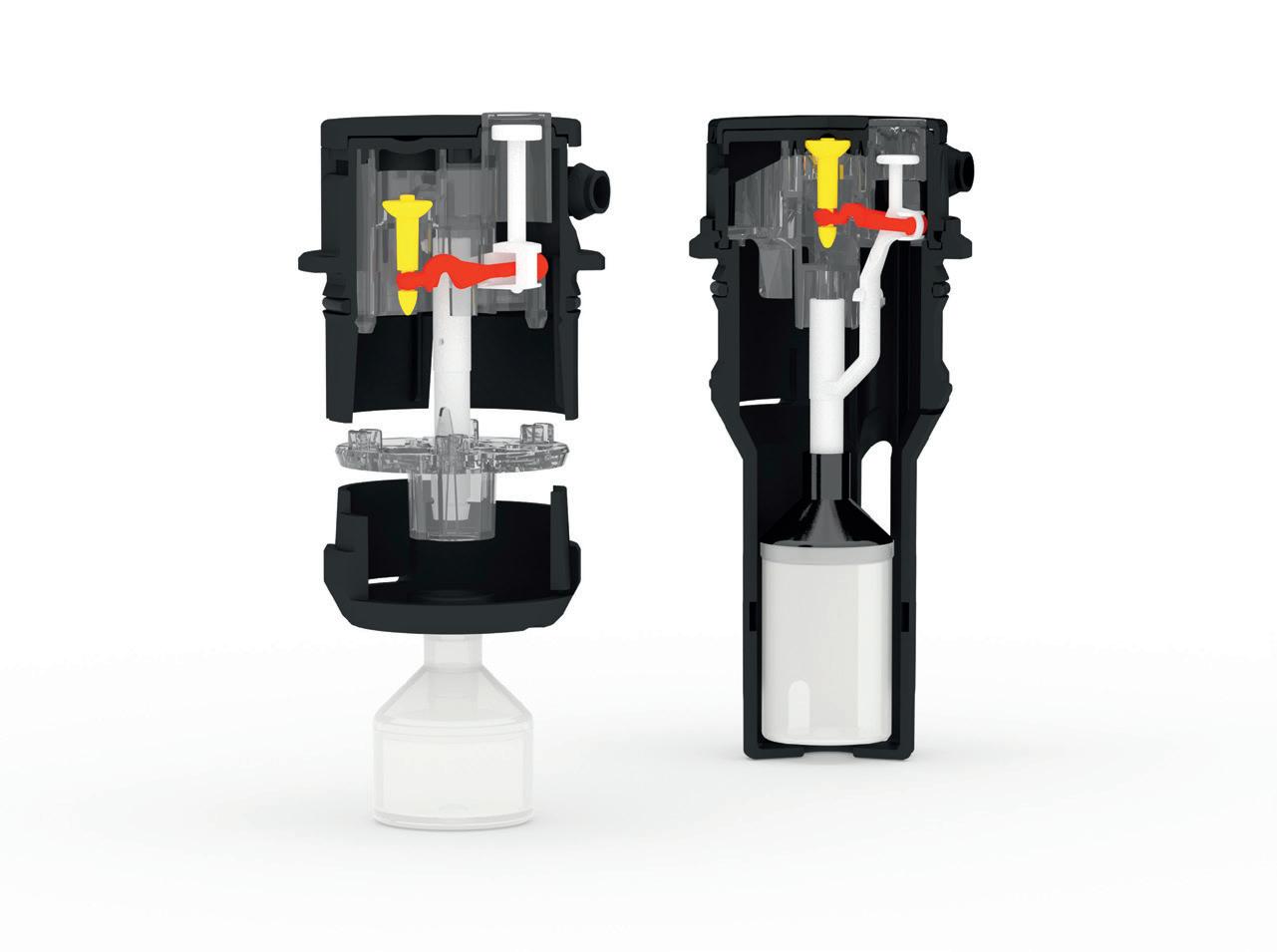
Our genuine system - your first choice
• Highest quality
• Constant improvement
• Excellent performance
• Reliable service
bfs batterie füllungs systeme GmbH info@bfsgmbh.de
Over 40 years of developing and perfecting battery filling products allow us to provide you with the most reliable system focusing on innovation and usability – a valuable contribution to an extended battery lifetime.
Mitterweg 9/11 | 85232 Bergkirchen | Germany bfsgmbh.de | +49 8131 36400
For the record the US Department of Energy announced on April 8 it was awarding $5 million each to three organizations — Battery Council International, New Lab and Clean Tech Strategies — to create projects to investigate long duration energy storage.
The three chosen were for the DoE said: “projects that bring together technology stakeholders and research institutions to solve one or more pre-competitive R&D technical challenge. Projects must enable a long-duration capable (10+ hours) energy storage technology with a pathway to $0.05/kWh for the levelized cost of storage by 2030.”
The three projects build
on the Inflation Reduction Act’s domestic production incentives for energy storage by launching three US consortia to advance zinc, lead, and flow battery technologies.
“While most storage deployed today is based on lithium chemistries, these consortia will help create a future diversified and secure energy storage supply chain that reduces dependence on critical materials.”: said Gene Rodrigues, assistant secretary for electricity at the DoE.
“These funding opportunities help propel the future of energy storage and deliver cost-effective solutions for our nation’s electricity needs.
“These projects will solve key technical and non-technical challenges, emphasizing strong collaboration in the zinc, lead, and flow battery industries to meet the nation’s growing need for clean, efficient, cost-effective energy for a changing electric power grid.
“By partnering industry participants with universities and national labs, these consortia will be able to leverage significant expertise and capabilities to pursue major improvements in long duration storage.”
Roger Miksad, president of BCI says its project award was to set up the Consortium for Lead Battery Leadership. “This will bring together BCI,
US independent power producer, NextEra Energy Resources and utility firm, Entergy, announced on June 7 a five-year, 4.5GW joint development pipeline of solar and storage projects.
The agreement will enable Entergy to provide renewable energy to more than three million customers in Arkansas, Louisiana, Mississippi and Texas, said Rob West, group president of utility operations.
In the US, Entergy
A planning application for a large battery storage facility in England has been submitted by Statera Energy to South Oxon District Council on May 9.
The company wants to build a seven hectare battery energy storage system at Culham Campus in Oxfordshire which is a
already has a portfolio of 14 operating solar projects with a combined capacity of 585MW, alongside two solar-plus-storage projects in operation with a capacity of 101MW.
This agreement will allow it to access NextEra’s supply chain and leverage its development expertise to expand its own renewable energy portfolio, according to a spokesperson.
The planned venture comes less than three
leading centre for nuclear fusion, formerly known as UKAEA Culham Science Centre, and home to 45 businesses.
A decision will be made in August and if approval is granted the BESS is expected to connect to the Culham Substation in 2027.
Statera Energy said the
months after an expedited review process approved Entergy plans for a 3GW expansion in Louisiana.
This, along with the 4.5GW partnership with NextEra was triggered by growing demand for clean energy across the Entergy service area, a spokesperson said. They also confirmed that the joint agreement does not prevent Entergy from also entering into PPA’s with NextEra, as it has done in the past.
proposed 500MW capacity would be predominantly made up of almost 300 shipping containers modified for batteries, 37 inverter houses, seven control rooms, and four shipping containers for storage and welfare facilities and a customer substation.
CBI [Consortium for Battery Innovation] and three national laboratories to conduct pre-competitive research aimed at improving lead battery performance. BCI’s goal for the Consortium is to develop lead batteries capable of meeting the DoE challenge.”
BCI member companies participating in the consortium include Advanced Battery Concepts, C&D/ Trojan, Clarios, Crown Battery, East Penn Manufacturing, EnerSys, Gridtential, and Stryten Energy. The collaborating national laboratories are Argonne National Laboratory, Oak Ridge National Laboratory, and Pacific Northwest National Laboratory.
“The three-year program will combine advanced techno-economic analysis with fundamental materials science research,” says Miksad. “Researchers will construct new use-case models for Long Duration Energy Storage and study the behaviour of lead sulfate crystals, which impact battery efficiency.
“Advanced computer modelling of structurally similar barium sulfate crystals conducted at Oak Ridge National Laboratory will inform the development of more efficient lead batteries.”
The three projects build on the Inflation Reduction Act’s domestic production incentives for energy storage by launching three US consortia to advance zinc, lead, and flow battery technologies. The other two projects will investigate LDES for flow batteries and zinc batteries.
Clean Tech Strategies’ project title is: pre-competitive research & development to accelerate the maturation of flow battery technologies.
Tesla broke ground on its new ‘megafactory’ at the end of May in eastern Shanghai’s Lingang — it is the first time the carmaker-cum-utility storage developer has opened a facility of this kind outside the US megafactory in Lathrop, California.
The move comes, after CEO Elon Musk announced the layoff of 10% of the global workforce in mid-April in response to falling sales and greater competition in the EV marketplace.
Megafactories, sometimes termed by Tesla with ‘superfactories,’ are used to manufacture, in scale, ultra-large commercial electrochemical energy storage systems known as Megapacks. Tesla plans to open a second megafactory in Mexico in 2026.
Tesla already has had gigafactories located abroad — in Shanghai, China since 2019 and Berlin-Brandenburg, Germany since 2022. The term gigafactories was created by Tesla in 2013.
Following the ground-breaking ceremony, Lingang Group and Tesla signed a contract for China’s first batch of Megapack ultra-large commercial electrochemical energy storage systems. This marks a new chapter in Tesla’s business in China.
When the plant officially opens — production is to begin in the first quarter of 2025 — it is projected to have an annual capacity of 10,000 Megapack units. This translates into a storage scale of nearly 40GWh.
The new factory obtained
a construction permit on May 13 and it took just one month for Tesla and Lingang to reach an agreement on the project, said Wu Xiaohua, deputy-secretary of the Party working committee during the groundbreaking ceremony.
The new factory covers an area of approximately 200,000m2 with a total investment of around 1.45 billion yuan ($200.2 million), and aims to export products to overseas markets, including the Asia-Pacific region, to support the global “green future,” Xinhua news agency reported.
Tesla’s senior vice president, Zhu Xiaotong — better known as Tom Zhu — said: “Tesla is committed to solving fundamental issues in transportation and energy with disrup-
A planning application for a 600MWh battery energy storage system in Northern Ireland’s County Antrim has been submitted by Lisburn Energy and would be linked to the city’s main electricity substation.
If approved, the BESS would cover an area of around eight acres and sit beside a nearby solar development, operating at
French utility Engie in April launched the switch of its former Tocopilla coal plant into a 116MW standalone BESS which will provide energy for five hours a day to around 100,000 homes. The company has invested $180 million to convert the plant, located in the country’s northern Antofagasta region. It anticipates it will store 660MWh of
150MW for four hours.
“The proposed BESS is designed to stabilize supply and create a more resilient network. The facility will store electricity when there is a surplus of generation in the system, and discharge electricity on to the grid when there is a deficit of generation,” documents supporting the application say.
The scheme should take
energy tapped from solar and wind energy generation and will have an average annual generation capacity of 211GWh.
The project involves installing 240 lithium ion-based containers on the former coal plant’s site and making use of infrastructure synergies such as its transmission assets. Construction is to start in June.
tive technology, forming a vertically integrated innovation ecosystem spanning electric vehicles, energy storage products, artificial intelligence, and robotics.”
Tesla’s senior vice-president Mike Snyder said that Megapacks can meet the diversified energy demands from customers across the world, facilitating the world’s green energy development.
This follows from a statement by CEO, Elon Musk, last year introducing the “Master Plan 3” during an Investor Day event, live-streamed globally. He stated that achieving a sustainable energy economy requires meeting the following goals: 240TWh of energy storage, 30 TWh of renewable electricity, and $10 trillion of investment in manufacturing.
around eight months to build.
Several BESS facilities have been developed in Northern Ireland in recent years, including large scale facilities near Tamnamore, Tandragee, Kells and Castlereagh.
Northern Ireland has a legal obligation to ensure 80% of all electricity generated by 2030 is sourced from renewables.
For the record, one of the largest production facilities for stationary battery storage systems in Europe officially started construction on April 8 at the TESVOLT headquarters in Lutherstadt Wittenberg in Germany.
The battery giant held a ground-breaking ceremony attended by high-profile guests, including Reiner Hasloff, minister president of the state of Saxony-Anhalt and Michael Kellner, parliamentary state secretary at the German Federal Ministry for Economic Affairs and Climate Protection.
Chile’s president, attended the launch and hailed the new facility as “a reminder that when we work together a better future awaits us.”
Engie is the fourth-largest energy generator in Chili and this, its first standalone BESS project, will be the largest renewable energy storage park in Latin America.
When the factory is completed it will cover an area of almost 6,000 square meters. Production is planned to start in 2025.
TESVOLT says the build will cost around €30 million ($34 million) for the first construction phase, which includes the construction of the production facility and the fully automated high-bay warehouse. Once running, annual production capacity is planned at 4GWh or 80,000 storage systems.
ESS Tech, a manufacturer of long-duration energy storage systems for commercial and utility-scale energy storage applications, and US utility Burbank Water and Power celebrated in June the commissioning of BWP’s first LDES system — a 75kW/500kWh ESS Energy Warehouse iron flow battery on the BWP EcoCampus.
The ESS iron flow battery
system is connected to a 265kW solar array. Once fully operational it will provide power equivalent to the consumption of around 300 homes. Eric Dresselhuys, CEO of ESS said, “it will demonstrate the critical role of iron flow technology in a renewable, resilient energy system.
“Visionary utilities like Burbank Water and Power are leading the way to the clean energy future by
incorporating advanced long-duration energy storage technologies today. LDES will play a critical role in achieving California’s decarbonization goal of 100% zero-emission electricity by 2045. The California Energy Storage Alliance estimates that the state will need 13,571 MW of LDES by 2028 to integrate intermittent renewable energy and optimize assets for a cleaner, more
affordable and reliable grid.
This commissioning follows ESS’ recent attainment of IEEE 693 seismic certification for its Energy Center product line and builds on other recent commissioning and delivery milestones with customers including the US Army Corps of Engineers, Sacramento Municipal Utility District and Turlock Irrigation District.
Donaldson, the international filtration company, has extended its range of battery venting systems with the Dual-Stage Jet, a design that improves EV safety by offering what the firm says is “the industry’s
fastest degassing capabilities, while streamlining the installation process for OEMs.”
Fast degassing of a EV battery pack if it goes into thermal runaway is important, preventing the risk of
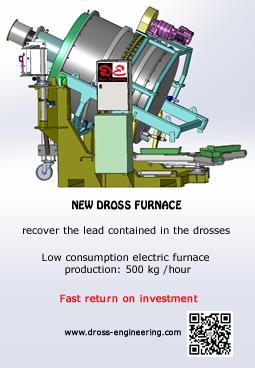
explosion. For every 1kWh of battery capacity, approximately 700 litres of gases are released. With some newer EV models coming to the market with up to 100 kWh batteries, it’s important to understand the potential hazards. Strictly speaking an EV explosion is actually a VCE (a vapour cloud explosion). The gases released are toxic and flammable.
Donaldson’s new product was launched at The Battery Show in Stuttgart, Germany.
The DSJ provides pressure equalization and ingress protection under
normal operating conditions with a minimum airflow of 97 lit/hr @ 10 mbar. But it can allow gases to escape at rates of approximately 100 lit/sec @ 100 mbar when necessary.
“Customers need even higher degassing rates so we came up with a creative design where the poppet and cap can be jettisoned to instantly produce a much larger opening for gas to escape and help mitigate thermal runaway,” Shane Campbell, product manager for vehicle electrification at Donaldson, told Batteries International
Saft, the French battery firm, announced at the ees Europe exposition in Munich this month, that it is planning another increase in its BESS energy density — its containers are to move from 3.3MWh to more than 5MWh in 2026.
Saft, a subsidiary of French petrochemical giant, TotalEnergies, installed its first containerized systems in 2012. Since then it says there has been a “six-fold increase in the energy storage capac-
ity of its Intensium 20-foot containers from 0.5MWh to 3.3MWh”.
Saft says it has also filed more than 35 patents since 2017, culminating in the development of I-Shift+, a modular system in a standard 20-foot shipping container. This is assembled in Saft factories and delivered for plug-and-play installation.
Before this new product is shipped, Saft will start deliveries of BESS produced in its US plant in Jacksonville, Florida.
ULS, the Illinois-based safety science company, has acquired BatterieIngenieure, a battery testing firm headquartered in Aachen, Germany it was announced on May 22. Financial details of the transaction have not been revealed.
The acquisition adds to ULS’s worldwide battery testing capabilities by establishing a laboratory in Europe, enhancing its proficiency in battery performance testing, and broadening its global EV battery testing reach.
Founded in 2015, BatterieIngenieure employs more than 50 people, and provides testing, simulation and failure analysis of battery technologies, and in particular battery life expectancy estimation.
Over the month of January 2024 and the winter freeze in Texas, BESS units saved an estimated $750 million in day-ahead market costs, according to a report by Aurora Energy Research that analyzed figures from the Electric Reliability Council of Texas (better known as ERCOT).
These showed that, specifically, during one particular two-day freeze battery storage saved consumers some $683 million.
The figures, however, do not show what the return of investment has been given the huge cost of installation of the BESS and operational charges.
“Battery energy storage systems in Texas have come under increasing scrutiny, but our analysis shows batteries have increased reliability and reduced costs for Texans during critical days, such as last January’s winter storm,” said Olivier Beaufils, ERCOT market lead at Aurora Energy Research.
Lead and lithium choose South Carolina
Clarios, the international battery giant, announced on May 23 that it plans to invest approximately $16 million into expanding its operations in Oconee County in the US state of South Carolina.
The facility is one of Clarios’ 16 US operations and produces component parts for AGM batteries, which are widely regarded as the best type of lead battery for new automotive technologies such as start-stop vehicles.
The expansion will add 9,000 square feet to the facility and include infrastructure improvements along with high-tech molding and assembly equipment. Operations should be online by January next year.
“As Clarios continues to grow our AGM battery business, we are excited to expand our footprint in Oconee County, and to welcome new employees to this site,” said Clarios president of US and Canada, Gerardo Gonzelez-Aleu.
“The components we make at this facility are critical to supporting the future of transportation, and our decision to expand production here speaks to the high quality of this workforce.”
State governor, Henry McMaster said: “We are pleased to see Clarios thriving and expanding in our state. The company’s investment and new jobs represent why South Carolina is a place where businesses can prosper.”

According to the US Department of Commerce, the South Carolina automotive industry employs 74,000 people and has a $27 billion economic impact. Both lead and lithium manufacturing firms have chosen the state because of tax and location initiatives, proximity to the international port at Charleston and a flexible labor force.
EnerSys said on February 14 it had chosen South Carolina as the site to build its planned $500 million lithium ion battery cell gigafactory.
The lead and lithium battery major said it is seeking an incentives package worth around $200 million to support the project — plus potential federal funding including tax benefits under the Inflation Reduction Act.
EnerSys said construction is to start early in 2025 and operations to be online in late 2027.
The 500,000ft2 facility, with a production capacity of 4GWh annually, will be built on a business park in Greenville. It will produce various form factors of lithium ion cells for commercial, industrial and defence applications
Electric vehicle battery cell maker AESC announced at the end of March it planned to spend $1.5 billion to expand its lithium-ion battery manufacturing site in Florence County. “South Carolina is a crucial part of our strategy to power next generation electric vehicles for customers across the US by manufacturing high-performance, longer-range EV batteries locally,” Shoichi Matsumoto, chief executive
at AESC said at the time of the announcement.
The BMW supplier will build a second EV battery production facility and create an additional 1,080 jobs.
Battery recycler Redwood Materials announced a $3.5 billion facility in Charleston in December 2022.
In March 2023, Volkswagen-backed Scout Motors announced a $2 billion EV manufacturing plant outside Columbia, and Vietnam-based tyre manufacturer Tin Thanh Group Americas announced a $68 million facility in Fairfax.
John Lummus, CEO of Upstate SC Alliance, which offers site selection services in the state said: “South Carolina has grown a robust mobility ecosystem, with more than 500 automotive-related companies within the state.”
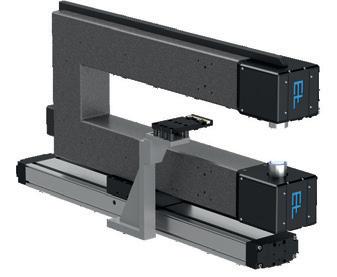


June 18 - 20, 2024
Stuttgart, Germany
Altilium, Nyobolt, Snapfast and Volklec win UK Faraday funding
Innovate UK’s Faraday Battery Challenge announced the winners of its latest funding round and plans to invest £1.5 million ($1.9 million) in British SME battery developers.
“The funding will be used to develop innovative battery manufacturing, demonstration, scale-up, and recycling projects,” said the vetting body of the Faraday Battery Challenge.
“Projects involve cylindrical and pouch cell technologies and will bring advanced lithium titanate oxide battery technology and a new cathode active material to the UK for the first time.”
The winning companies are given the chance to scale-up their projects at
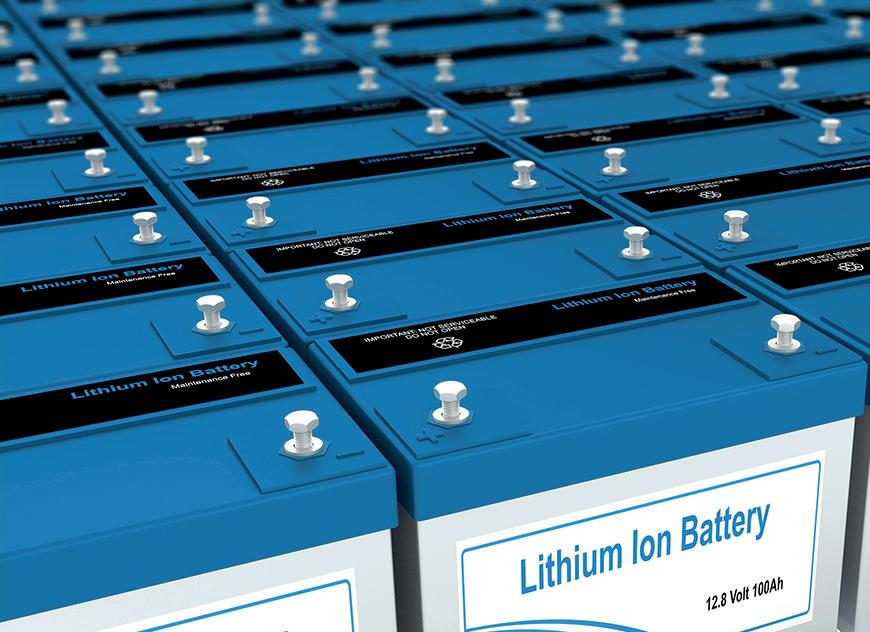
the UK Battery Industrialisation Centre (UKBIC).
The winners were announced at the annual Battery Cells and Systems Expo, at the National Exhibition Centre in Birmingham on May 15.
The successful companies were awarded the funding through the £610 million Faraday Battery Challenge, a research and innovation programme that covers “Lab to Factory” development, research, national scale-up infrastructure, and skills and training.
The winners were:
Altilium: Plans to demonstrate manufacturing of battery cells at scale using sustainable, low-carbon cathode active materials from recycled end-of-life EV batteries from Altilium’s UK-based pilot CAM plant and EV battery recycling innovation centre in Plymouth.
Nyobolt: Is commercializing ultra-fast charging, high power battery technologies for applications ranging from industrial to automotive and heavy duty off-highway. Nyobolt says it will build on experience gained during previous activity at UKBIC to optimize the quality and speed of manufacturing Nyobolt’s electrode material at gigascale.
Snapfast & Grinergy from South Korea: Plan to transfer advanced LTO technology for pouch cell manufacturing to the UK. LTO batteries are long lasting, with up to 90% of the batteries recycled, do not suffer from thermal runaway, and are stable across a wide range of temperatures (-30°C to 60°C).
Volklec: Plans to develop and manufacture a 21700 cylindrical battery cells for the UK’s automotive market, in particular small volume and/ niche vehicle manufacturers. The cell development includes the introduction of a new CAM to the UK.
Siemens in alliance with Kontrolmatik Technologies, Pomega Kontrolmatik, a systems integrator and EPC firm, and its subsidiary Pomega Energy, a battery manufacturer, announced an engineering alliance with Siemens on May 14.
The aim is to build a sustainable battery framework, as Pomega Energy Storage Technologies USA and Kontrolmatik USA ramp up their energy storage operations in North America.
“The collaboration with Siemens provides Kontrolmatik with the opportunity to establish our two companies as engineering, integration, and software collaborators. In return, Kontrolmatik and Pomega have offered to help standardize Siemens automation equipment and software solutions,” said Saim Hacıağaoğlu, deputy general manager with Pomega Energy Storage Technologies.
Kontrolmatik and Pomega will standardize the use of Siemens solutions with full support and optimization, particularly for Pomega’s first LFP battery factory in Turkey.
“The prospect of forging a global alliance marks a milestone in our partnership. The synergy between Siemens, Kontrolmatik, and Pomega will redefine industry standards. Together, we are paving the way for ground-breaking advancements in the fields we serve,” said Jefi Bardavit, account manager, Siemens Digital Industries.
EnerSys acquires Bren-Tronics for $208 million International battery company, EnerSys, announced in May that it had entered into a definitive agreement to acquire Bren-Tronics, a manufacturer of portable power
products for defense customers, including small and large format lithium batteries.
The acquisition will expand EnerSys’ presence in critical defense applications and aligns, the company said, with several of its strategic initiatives — including expanding their lithium product offerings. The firm said it expects to close the all-cash transaction by the second quarter of 2024.
This follows an announcement, last February, that EnerSys had selected Greenville, South Carolina to develop a lithium-ion cell gigafactory to advance battery production in the US. The company said the new factory represented a long-term opportunity to enable growth and allow them to optimise cell
sizing in battery solutions for their customers.
EnerSys expects construction to begin in early 2025 and operations to be online in late 2027.
CATL, Beijing Hyundai sign agreement on EV batteries
For the record, CATL and Beijing Hyundai have signed a strategic partnership agreement to cooperate on Beijing Hyundai’s EV projects and to power future Beijing Hyundai electric models with CATL batteries.
The agreement was signed on April 25 at Auto China 2024 and Beijing Hyundai is likely to unleash a wave of over 10 leading global models equipped with CATL’s latest battery technology including CTP (cell to pack) and NP.
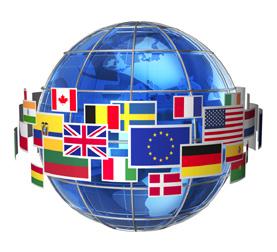

Scotland’s environmental regulator has suspended the waste management licence belonging to Fenix Battery Recycling, the operator of the Kilwinning battery recycling site where a major fire broke out this April. This means no waste can be accepted, stored or treated by the company.
Two enforcement notices have been served by the Scottish Environment Protection Agency (SEPA) requiring Fenix to remove waste batteries that have been on the site at West Byrehill Industrial Estate for longer than six months. The agency has also suspended approval as an Approved Battery Treatment Operator (ABTO).
The only activities, within the scope of regulation by SEPA, that can be carried out by the company at the site are the removal of waste to appropriately licenced sites.
SEPA said it had issued the enhanced package of enforcement actions following both non-compliance with licence conditions and the site infrastructure being destroyed by the fire. Continuing to carry on the licensed activities at the site in its current condition would be considered a risk which could cause serious pollution of the environment and serious harm to human health, SEPA said.
“We partially suspended Fenix Battery Recycling
Ltd’s licence last year when it failed to comply with a previous enforcement notice we served. We will not hesitate to take further action, in line with our enforcement policy, as required.”
Fenix Battery Recycling has had a checkered history in the past few years. It was partly co-founded by Athan Fox and Miles Freeman, directors of a company known as Ever Resource, formerly Aurelius Technology, in July 2020.
In 2022 Fox and Freeman resigned from Fenix. Fox moved that year to become CTO and a director of Regenerate Technology Global. The general manager of Regenerate’s EU and UK operations is
Battery recycler Redwood Materials has partnered with battery manufacturing joint venture, Ultium, to recycle production scrap from its US facilities.
The company said on May 23 it would process the majority of the cathode and anode material scrap from Ultium’s Ohio and Tennessee facilities.
Redwood forecasts that at a 10% scrap rate, these facilities would produce 10,000 tonnes of material annually for the company
to recycle and remanufacture into critical battery components for cell manufacturing.
Ultium is a joint venture between auto manufacturer General Motors and South Korean battery maker LG Energy Solution and their operations expect to produce more than 80GWh combined of battery cells annually.
Redwood receives the majority of the scrap from its manufacturing process.
As well as gigafactories in
Ohio and Tennessee, the company has a third facility under construction in Michigan. With this latest collaboration, Redwood now has contracts with most of North America’s battery cell manufacturers.
As automakers and cell manufacturers continue to ramp up domestic battery production, Redwood says it is ready to support this growth with a sustainable and scalable battery materials process.
US announces $62 million investment for recycling
For the record, the US government announced in early April that the DoE will provide $62 million for 17 projects to encourage battery recycling.
The government said:
“Under the Biden-Harris Administration, EV sales have quadrupled, reach-
ing record high levels of more than 1.4 million sales last year.
“With demand for EVs and stationary energy storage projected to expand the lithium battery market as much as 10-fold by 2030, investments in sustainable, reduced-cost recycling
of consumer batteries are critical to securing the domestic materials supply chain to meet that demand.
“Recycling used batteries reduces demand for new materials and allows the industry to produce at lower costs and greater.”
Miles Freeman, who is the managing director of UK-based Ever Resource. Fenix Battery Recycling merged with Regenerate Technology Global, according to a statement made this January 15. It said: “The merger represents a strategic alliance between FBR’s deep expertise in battery recycling and RTG’s cuttingedge technological prowess. This collaboration is set to redefine the recycling industry, with FBR expanding its operations under the vast umbrella of RTG’s global network.”
Fox wanted to use Fenix to commercially recycle lead acid batteries — in particular its battery breaking machine — through a hydro-metallurgical process that would deliver lead oxides in a variety of structures that would be suitable for re-use.
Regenerate Technology Global said on February 13 it had secured a longterm lease of a former lead battery manufacturing plant in Italy where it will launch a lead recycling operation, Regenerate co-founder Fox said the company, which also has an option to buy the plant, is renovating the 125,000 ft2 facility in Bologna and plans to start upcycling of lead acid batteries by this summer.
Fox did not disclose details of the technology involved, but said operations at the site will mark a “significant leap in commercial-scale, upcycled leady oxides production”.
Regenerate’s CEO and co-founder is David Batstone, a respected founder of US-based social impact investments company Just Business. Batstone was an early investor and former board member of the American Battery Technology Company.


Japanese car manufacturer, Nissan and US-based battery recycler Ecobat announced on April 30 that they will investigate ways of commercializing the process of locating, transporting, dismantling, repairing and repurposing EV batteries from Nissan Leaf EVs for second life usage.
Uniquely, Nissan could then offer those second life products to market with the added reassurance of
an official manufacturer warranty.
Alan Low, EV battery circular economy manager at Nissan Energy Services, said: “We are working with Ecobat to assess how we engage with salvage operators, manage transportation, test, repair and reuse electric vehicle batteries in order to understand the commercial value chain.
“These are batteries from cars that have been disman-
tled due to old age or that have been written off by insurers, however the batteries themselves still have an opportunity to be reused. They still have a useful life ahead of them, so we need to create a sustainable way of recovering them.”
Once located, the partners say batteries will be assessed and transported to Ecobat’s Darlaston facility, located near Birmingham in the UK’s Midlands,
Ecobat, the international battery recycling giant, said on May 21 it had entered into a supply chain finance support partnership with Florida-based working capital finance and payments solutions firm LSQ.
The companies said the arrangement should give a business boost to suppliers while generating vital working capital for the battery recycler.
Ecobat VP and treasurer, Scott Paredes, said provid-
For the record, Poland’s Elemental Strategic Metals and US firm Ascend Elements announced on April 9 the formation of AE Elemental, a joint venture.
The companies will equally own and operate a newly constructed EV battery recycling facility in Zawiercie, Poland where Elemental Strategic Metals is based.
The facility will disassemble, discharge and shred EV batteries to produce black mass, which can be used to make new engineered EV battery materials, including cathode active and cathode precursor materials.
ing flexibility to suppliers while generating working capital and providing cost savings are paramount wto the success of the supply chain finance program.
“Providing early-payment options for suppliers was first and foremost for us in creating a supply chain finance program. Giving them the option to get paid within one day for their invoices makes us a partner in their growth.”
Paredes said that under
The facility has the capacity to recycle up to 12,000 tonnes of batteries a year, or approximately 28,000 EV batteries annually.
Both JV partners agreed to jointly invest in largescale lithium extraction from black mass and lithium extraction capabilities will rise to 20,000 tonnes of black mass a year. Construction for the expanded plant will begin towards the end of this year to be operational in 2026.
Additionally, the companies plan to begin building a new, state-of-the-art EV battery recycling facility in central Germany.
the partnership, Ecobat has been able to standardize terms, generate working capital and reduce costs by using LSQ’s payments automation and consolidation.
LSQ chief revenue officer Vikas Shah said: “By expanding access to working capital to their suppliers, we are able to grow Ecobat’s capacity and help them boost their sustainable supply chain initiatives.”
The AE Elemental facility in Germany will have the capacity to recycle up to 25,000 tonnes of batteries per year, or approximately 58,000 EVs annually.
Pawel Jarski, CEO of Elemental Holding said: “Ascend Elements’ technology with our recycling expertise, large collection network, recycling platform and global footprint puts AE Elemental in a pole position in this evolving market.”
“The JV is a significant milestone for us, representing our first commercial-scale battery recycling facility in Europe,” said Mike O’Kronley, CEO of Ascend Elements.
using specialist vehicles. There, further checks will be carried out to determine their long-term safety and performance, allowing Nissan to identify suitable second life applications including BESS and mobile power charging systems.
Batteries that don’t make the grade will be prepared for recycling, the companies say.
“This is a critical piece of the EV sustainability picture that has real environmental benefits,” says Tom Seward, EU key accounts director at Ecobat Solutions UK. “We even recover any energy stored in the salvaged battery and use it to provide power to the onsite EV charger network at our site.”
For the record, BASF started operating its prototype metal refinery for battery recycling in Schwarzheide, Germany, earlier this month. The chemical company plans to develop and optimize processes and procedures there to recycle the raw materials from old batteries and production waste.
BASF already operates its cathode material production at the Schwarzheide site and later this year the battery recycling plant will also put the production of black mass into operation.
“With the expected rapid growth of the electric vehicle market, battery recycling provides competitive and sustainable access to critical metals,” said Daniel Schönfelder, president of BASF’s catalysts division, who is also responsible for the company’s battery materials and battery recycling business.
Sodium sulfur batteries, a mostly forgotten chemistry pioneered in the 1980s and 1990s, received a boost with the announcement on June 10 of a new advanced container-type, megawatt scale, NAS battery.
BASF will begin deliveries of NAS model L24 in the second half of 2024.
The new product has been jointly developed by NGK Insulators, a Japanese ceramic manufacturer, and BASF Stationary Energy Storage. The new model and has a low degradation rate of less than 1% per year due to a reduced corrosion in battery cells.
There is also an improved thermal management system in battery modules, which enables a longer continuous discharge. “These improve-
ments allow projects to be implemented using fewer NAS battery containers over project running time, and with lower maintenance costs,” says BASF.
A sodium sulphur battery is a high-temperature battery. It operates at 300°C and uses a solid electrolyte. One electrode is molten sodium and the other is molten sulphur, and it is the reaction between these two that is the basis for the cell reaction.
NAS batteries are longlife, high-energy stationary storage batteries. They can provide power for six hours or longer. In more than 20 years they have been deployed at over 250 locations worldwide, with a total output of almost 700MW/5GWh.
“With the NAS model L24 our customers will be able to reduce their initial investment in battery storage systems as well as save on long-term project costs — approx. 20% over project lifetime,” says Frank Prechtl, managing director of BASF Stationary Energy Storage.
BASF and NGK have worked together since 2019. NGK has been deploying NaS battery units for over 20 years, mostly in Japan.
In the early 2010s General Electric invested some $200 million in making a molten salt battery branded as Durathon. Its, then, CEO Jeff Immelt, believed that it would become a billion dollar business. However,
A presentation by Tim Hotz, principal at Roland Berger, at the AABC meetings in Strasbourg, France in mid-May highlighted — among many other salient points — the growing role that sodium ion batteries could play in Europe’s future energy storage market.
Put in the context of a huge growth in renewable energy and usage — solar, wind and electricity capacity is set to grow three times between 2020 and 2040
EnerVenue, a renewable energy start-up, is set to raise a total $515.6 million in fresh equity according to a SEC filing on June 5. The report says that $308.15 million has been raised so far and $207.45 is remaining to be sold.
The company, which has developed a nickel-hydrogen battery as an alternative to lithium-ion for long-duration renew-
and EV sales set to rise to 75 million — sodium ion batteries are predicted to come to the fore this decade, according to Hotz.
Both lithium ion phosphate and Na ion batteries are expected to dominate energy storage. Each offers high cycle stability and high safety — however, Na ion has a lower energy density and is generally cheaper. (It also has fewer problems in terms of its availability.)
One key takeaway for Batteries International
able energy storage, is in the process of building a gigawatt-scale factory in Kentucky. The state government says EnerVenue has paid $264 million and it will contribute further $10 million.
Nickel-hydrogen batteries have proven to be ideal for space applications due to their ability to withstand extreme temperatures and maintain their capacity over
the cost of nickel powder proved uncommercial and in 2015 GE closed its battery manufacturing factory in New York.
Clarios partners Altris to develop sodium ion battery systems
Battery giant, Clarios announced in mid-May an exclusive joint development agreement with Altris, a Swedish developer and prototype manufacturer of sodium-ion batteries.
Under the JDA, Altris will focus on developing sodium ion cell technology for low-voltage applications. Clarios will use its expertise in BMS software and system integration to design the battery system.
from this fascinating presentation was with the links between the cost of lithium hydroxide and sodium ion usage.
At a threshold of $18-$22 per kilo of LCE, sodium ion becomes economically viable, below that lithium ion phosphate batteries will dominate.
Given Roland Berger expects lithium prices to breach $22/kg at the end of the decade a surge in sodium ion usage and deployment is on the cards.
time. However, their high cost has limited their adoption on Earth.
This equation changed, however, when Yi Cui, a professor at Stanford University and chairman of EnerVenue, tweaked the chemistry to remove expensive platinum. The company anticipates that the cost per kilowatt-hour can be reduced below $80 when produced at scale.
The financial terms of the agreement were not disclosed by the companies.
This collaboration builds on an agreement initiated earlier this year, which set in motion the creation of a detailed production plan for low-voltage manufacture.
“This is a significant step forward with our strategy of being chemistry-agnostic when it comes to producing low-voltage batteries,” said Federico Zimmermann, Clarios vice president and general manager, global customers, products and engineering.
“We now have the ability to manufacture a variety of advanced battery types including absorbent glass mat, lithium-ion and Na-ion to support the low-voltage demands created by advanced vehicle technologies.”
Björn Mårlid, CEO of Altris, said: “This JDA enables us to continue our focus on developing and manufacturing sodium-ion batteries specifically adapted for the automotive battery market.”
We are in an unprecedented era of growth for the energy storage business. But, as Mike Dunckley,
founder of Catalyst Solutions writes, this doesn’t automatically translate into unprecedented
profits or even business success and survival.
“It was the best of times; it was the worst of times.” This is the opening sentence of a Charles Dickens book called A Tale of Two Cities. It seems a strange way to open an article for a battery magazine!
But the sentence has recently been going round in my head and in relation to our industry. Even the title could be adapted and be about the two key technologies right now: lead acid and lithium.
We are in an unprecedented era of growth. It’s a business dream. Lithium is claimed to be growing at 18% a year according to some research and
even lead acid has some growth. The figures are truly staggering. We are going towards an industry that will be worth a few hundred billion dollars in a few years’ time.
This growth has heated up the battery industry and many new companies are piling in and scaling up. It’s a feeding frenzy; the sort you might see on a television nature program.
But my concern is how will these companies actually make money?
As an industry we constantly talk about our technology and the science behind it. The battery industry loves
The reality of all this growth is that in the end just a few companies dominate and win. They win with quality, well planned execution of the operation and outstanding service.
Yes, it is the best of times if you get it right. The winning companies will define a clear path to victory and make healthy returns as a result.
Business strategy is a complex art. It combines market knowledge, a deep understanding of customers and market segments and a strong vision of where the future is going. None of this is easy, but it’s necessary. Companies must think back from customers’ and their demands, needs and expectations. Most battery products in our industry conform to international standards and dimensional footprints. In some ways all batteries look more or less the same which is why color and packaging play an important part in distinguishing products from different suppliers.
But packaging will not win the business in the long term, what
will, will be quality, reliability, on time delivery and service. The age we now live in is about digitization, electronics, software and even AI. These are new layers of skills a business must have to survive.
I’ve written this piece because I believe our industry is in a golden age. It’s a wonderful time to be in an industry that has an important role to plan in the transition of the world’s energy system.
But I also believe that the winners those that understand the opportunities and plan a clear path to success.
But finding that path to success is never easy. This is why the opening lines of Charles Dickens book has gone around in my head…the best of times, the worst of times…Ok, plan a giga factory but make sure the business model is robust and unique.
its chemical formulations and alchemistic magic. We talk too about building new factories and sometimes talk about customer markets.
But what we rarely discuss is money and how to make reasonable profits. I know, I know, it’s considered vulgar to discuss money. But in the end, it comes down to that, no matter how vulgar!
Giga factories don’t come cheap
In this new high growth era, we no longer talk about creating a new business in modest terms. All the ambitions are directed in lithium towards building giga-scale factories. I often wonder how many people have actually seen the scale of a giga factory?
It almost seems shameful to discuss building a business with just megawatts of capacity; it has to be gigawatts.
But gigawatt factories do not come cheap. And it’s not just a question of money, but also people, skills, supply chain security and ultimately customer customers who will buy the capacity and at the right price.
China is an example of what can go wrong. It is well known that China has captured and dominates the lithium battery opportunity. Market research reports state that that is as much as 90% of the global production.
But China now has too much production and not enough customers and the surplus production is being pushed around the world. And at the same time the borders are closing.
In North America and Europe, we have been left behind and we are now playing catch-up. This will be difficult because not only are we way behind but China has locked up most of the supply chain.
Starting a gigafactory is a monumental undertaking. I recently consulted on a project that aimed to develop almost 50GW of capacity within the next five years. The plan,
beautifully documented in PowerPoints of the highest quality, called for an investment of almost $5 billion. I met an impressive team, polished and rehearsed.
I listened to different members of the team laying out their objec-
Choose
tives. How production would be developed, how people would be onboarded and the target customers and markets would be won. It always works well on paper, but making it happen is always a different story. It was very impressive but the
nagging thought I had, and discussed, was how and when do you break-even and start to make a profit? An investment of this scale has to be amortized into the production costs; and in a market where prices are not going up, but down!
A company must choose just one of three generic strategic options
Michael Porter, a Harvard professor, is often considered to be the father of modern business strategy. Although much of what he wrote is now 40 years old, many of his theories hold good. Several of his major strategic concepts are highly relevant to the battery industry as well as others.
Among his many opinions and theories he states that a business can only pursue one of three generic strategies if they are to be successful. If they ignore this rule, they will will dilute their efforts and fail in the long terms. These are:
1. Cost eadership
2. Focus
3. Differentiation
Figure 1 Choose a market position and stick to it
Cost leadership is high volume. This means that a business scales up to dominate a market with large volumes and low-cost operations.
Low-cost airlines are a perfect example where they provide a no-frills service, standardize on aircraft types which allows for pilot and crew flexibility and focused maintenance skills and fly to key points or destinations.
Differentiation is about choosing a particular way of operating in a market and creating a unique identity around this difference.
Marketing plays a strong part in this type of strategy, using branding to reinforce a company’s value and uniqueness.
Focus is a niche strategy A business with a niche strategy understands the market and aims to excel in servicing a small but well chosen part.
These strategies can be highly profitable as larger companies do not have the resources to focus and make and service smaller volumes.
The world is changing rapidly and with it comes new opportunities and threats. The battery industry is really a regional business that got lost for a while in the dream of globalization. Many larger companies pursued this vision, following large corporate customers in markets such as automotive and communications. This phase is now over and we are going back to being what our industry always was, Region of production and supply; Asia, the Americas and Europe (EMEA).
Leverage your core competencies …they are your greatest assets
Many companies over time get lost. They were formed around a founder’s knowledge and skill.
These skills are your company’s core competencies. As a company evolves and searches for growth it starts to copy its more successful competitors.
This results is more new products and services which stretch the boundaries of knowledge and skill in a business. This process continues until the business loses sight of its founding purpose and core competencies.
At the core of every company is a small number of core skills which provide the competitive framework that makes products and services that companies buy.
Customers’ recognize this value and will pay premium prices to ensure that they are buying value.
Figure 2 Leverage your organization’s strengths
Review your product portfolio …and know what to eliminate or grow.
A company should not only know how much profit it makes but also what product or service gives that profit. An analysis of a customer portfolio or products by profitability will provide a strong set of insights into where to a business is growing or wasting valuable assets. This same insight will also provide evidence of what to delete or grow from a production range.
Always remember that products that are deleted will be taken up by competitors and can keep them busy on low profit ranges which ties up their production and focus.
A company should not only know how much profit it makes but also what product or service gives that profit. An analysis of a customer portfolio or products by profitability will provide a strong set of insights into where to a business is growing or wasting valuable assets. This same insight will also provide evidence of what to delete or grow from a production range.
A well known method to structure this type of review is using the BCG grid. In this structure products (and businesses) can be grouped into a simple matrix that allows for deeper review. The theory is simple but allows for a tool to focus management discussions and decision making. High growth areas are ‘Stars’ and should be supported and grown, ‘Dogs’ are problem in a portfolio and consideration should be given to liquidating. Cash Cows are products that should be exploited. Question marks are areas where a decision needs to be taken to grow or divest.
Always remember that products that are deleted will be taken up by competitors and can keep them busy on low profit ranges which ties up their production and focus.
A well known method to structure this type of review is using the BCG grid. In this structure products (and businesses) can be grouped into a simple matrix that allows for deeper review. The theory is simple but allows for a tool to focus management discussions and decision making. High growth areas are ‘Stars’ and should be supported and grown, ‘Dogs’ are problem in a portfolio and consideration should be given to liquidating. Cash Cows are products that should be exploited. Question marks are areas where a decision needs to be taken to grow or divest.
Figure 3 Existing operations should review their products for profitability...throw out what doesn’t pay
Investment of this scale has to be amortized into the product cost; in a market where prices are rapidly decreasing break-even will take many years
Yes, it is the best or times for capturing the wave of growth but it is the worst of times if you get it wrong!
A clear plan is vital. Every business sets out to win and make money. But making a plan to win means having a clear plan of how to make it happen. You have to come up with the winning idea that will be different to your competitors.
The reality of all this growth is that in the end just a few companies dominate and win. They win with quality, well planned execution of the operation and outstanding service.
These companies will be strategic, reading the signals of how the
market is changing and developing and evolving their operations to capture these new opportunities. The companies that lose focus or keep changing their plans (if they have one) will fail.
Three strategic steps to ensure success
There are a few checks that a business can take to position itself for success. A start-up or new business must choose an overall strategic direction and build its organization around this strategy. Other companies that are already operational should look carefully at their strengths and core competencies.
These are a company’s foundational skills that got the business going in the first place and which may have got lost over time. These same operational companies should review their production product lines and understand where they make money.
The analysis will be valuable and tell a business where to invest and what to delete from their production ranges. The three charts may provide a useful starting point.
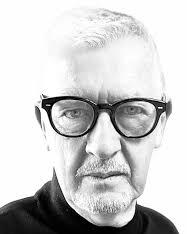
Mike Dunckley was trained and worked in advertising and public relations before joining the battery industry. He became the group marketing director for the Hawker Batteries Group in the 1990s and later a director for the parent Group, BTR/Invensys plc. Since then he has held various senior management and board roles internationally. Today he runs a strategic marketing group called Catalyst with a strong focus on energy.
In all new markets, when they finally settle, there are just a few leaders. The winners will have scale and market reach or a strong and unique niche position that cannot be easily attacked. In both case these businesses take a larger share of the potential industry profit pool.
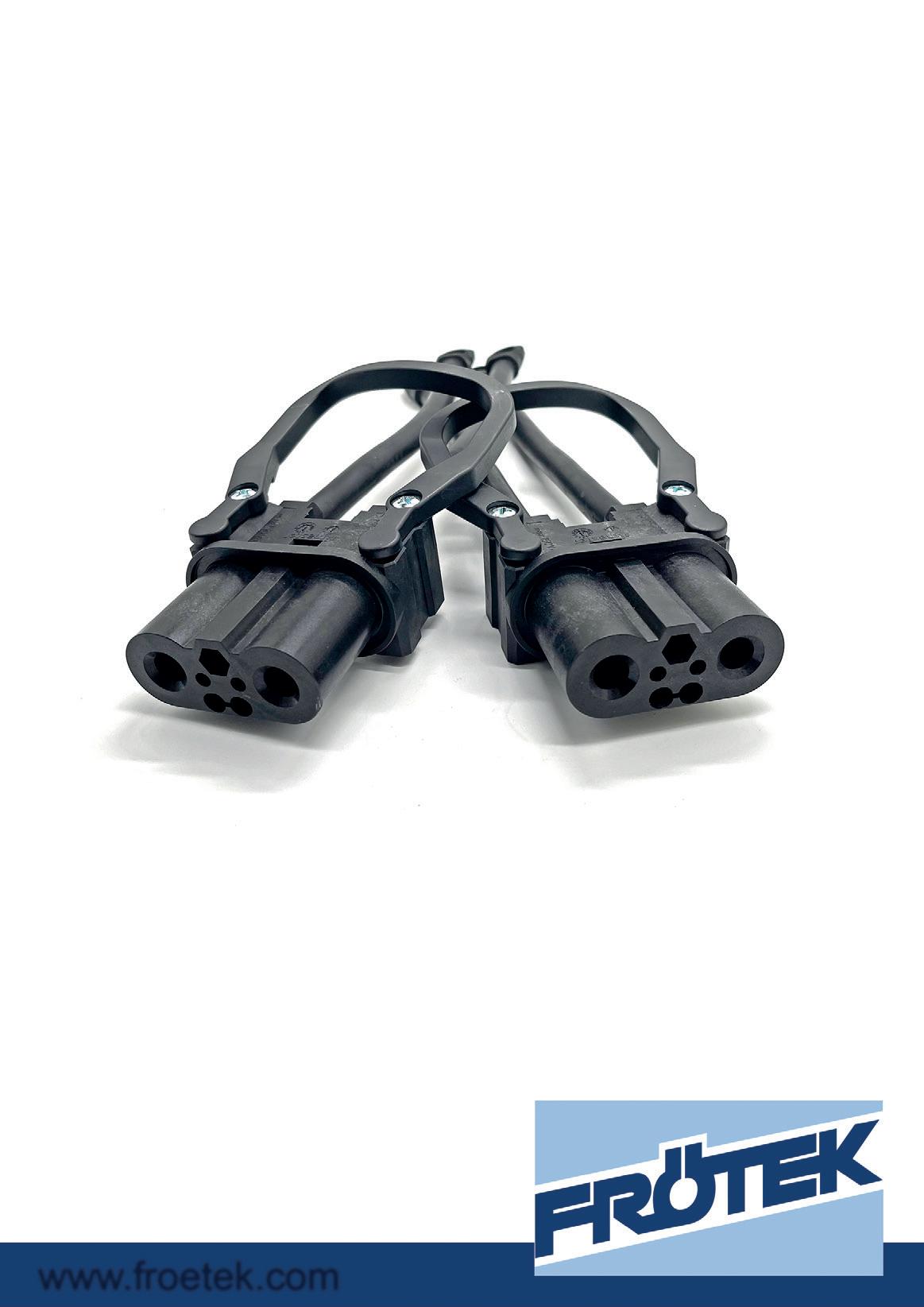

A full appreciation of the composition and structure of lead dioxide materials will be a useful step towards understanding the electrical properties of the positive active mass of the lead-acid battery, writes Pat Moseley.
Repeated neutron diffraction studies ([1],[2],[3]) have indicated that the Pb ion site occupancy in the structure of the electrochemically-prepared form of beta lead dioxide is less than unity while there is a full complement of oxygen.
The implied formula of Pb1-xO2 suggests that some of the lead atoms must be in an oxidation state greater than four in order to meet the requirement for the crystal to be charge-neutral overall. Such forms of lead are very unlikely and the origins of charge balance must be sought via another source of positive charge.
There is evidence [3] that the apparent shortfall in positive charge may be made good by the presence of protons in the structure so that the formula would become Pb1-xH4xO2. There is also evidence [3] that the value of x may be as high as 0.08 for a freshly prepared active mass on the positive plate of a lead–acid battery but may diminish with battery discharge/recharge cycling to a value of 0.04.
The change in the degree of lead deficiency, and perhaps hydrogen content, is matched by a decrease in the capacitance measured for the positive active material from 9 F/g after formation to 3 F/g towards the end of life [4].
Additional light might be shed on the role of hydrogen in providing the oxide with capacitive properties by examination of related forms of lead dioxide.
In 1982 Rod Hill of CSIRO carried out neutron diffraction refinements of the structures of the four variants: chemically prepared and electrochemically prepared alpha and beta lead dioxide.
The lead deficiencies that he found for the four materials are listed in the first column of Table 1. The first three materials appear to be quite close to the ideal stoichiometry. Indeed. a more recent study [5] found that chemically-prepared beta lead dioxide (marked* in the references) is actually slightly oxygen-deficient in which case the hydrogen content of that material would be zero.
The material with the maximum departure from stoichiometry is the electrochemically-prepared alpha form, which has a large lead-deficiency. If, as suggested above, the charge balance in the crystal is due to the presence of protons then the hydrogen content of this form of lead dioxide is also much larger than in the other three variants.
Refinement of the structures of the first three materials in Table 1 was completed successfully and the profile agreement indices, Rwp (Rietveld weighted profile), are
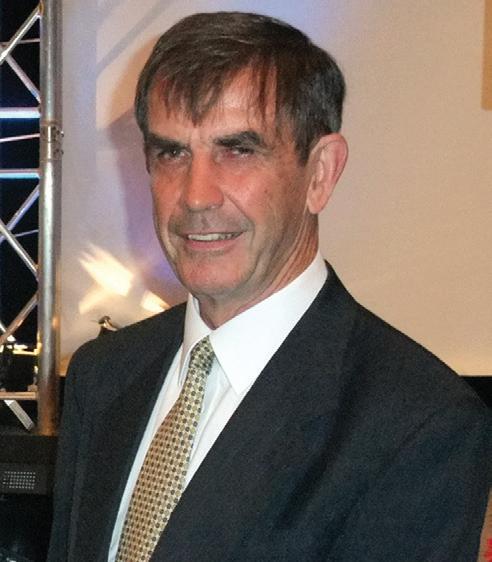
similar. However, refinement of the structure of the electrochemical alpha form did not go so well. Rwp was markedly less satisfactory (higher) and the isotropic thermal vibration parameter for the lead atom converged at a physically meaningless, negative, value.
Table 1. Pb content and consequent H content for four forms of lead dioxide. Since the information is derived from diffraction measurements [2] no information is provided about any amorphous matter that might accompany the crystallographic material. Note that a more recent refinement of the chemically-prepared beta form [5] observed no Pb deficiency and thus a zero requirement for any hydrogen.
If the hydrogen inventory of this form of the oxide is as high as is implied by the extent of the lead deficiency then a significant fraction of the neutron scattering material (0.68H) was not included in the model structure. This may have contributed to the difficulty of optimizing the fit between the calculated and observed diffraction profiles.
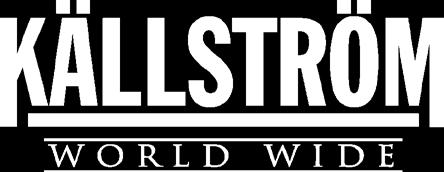


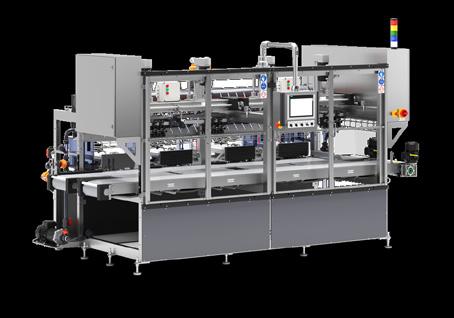
Custom-designed equipment for the battery and chemical industry
We design, engineer and manufacture reliable systems regarding filling, mixing, diluting and handling of highly corrosive chemicals such as acid and alkaline. Our systems are compact and fully automatic with an exceptional level of precision, accuracy, safety and reliability, utilizing the latest technology.
North America
Chris Glascock Office +1 (706) 841 1184 Mobile +1 (423) 595 2326 glascockinternational@gmail.com
Head Office Åkerivägen 19
241 38 Eslöv, Sweden Office +46 40 671 1200 office@kallstrom.com
Digatron Power Electronics representative in Scandinavia
South Korea
Gabriel Kim Office +82 32 438 3347 Mobile +82 10 5307 0459 gabyeolk@naver.com
India
Suresh Pemmaiah Office +91 80 40 976620 Mobile +91 98 45 021623 hpi@hpinstruments.com

Additional light might be shed on the role of hydrogen in providing the oxide with capacitive properties by examination of related forms of lead dioxide
The omission of the hydrogen contribution is far more serious for a neutron study than it would be for an X-ray one since the neutron scattering length for hydrogen is much closer to those for lead and oxygen (see table) than is the case for the respective X-ray scattering factors.
The presence of hydrogen in the structure of lead dioxide would require some adjustment of the equation for the discharge reaction, perhaps as follows:
Pb1-xH4xO2 + 3H1-x+ + (1-x)HSO4- + (1-x)2e- → (1-x)PbSO4 + 2H2O
When the value of x is small, as appears to be the case for normal battery active material (beta PbO2), the discharge capacity is close to that which would be expected for a hydrogen-free material. But if the active material were to consist of electrochemically prepared alpha form the discharge capacity would be diminished significantly.
In contrast to the diffraction studies that are referenced above, which only provide information about matter that exhibits crystalline order, other analytical techniques report on the composition of the whole of a sample including both crystalline and amorphous regions.
Thus, in Table 2, the first column shows the total number of hydrogen atoms (measured by neutron transmission) in the same four materials that are listed in Table 1 and the second column shows the fraction of the total lead content in each case that is 2-valent.
These latter values were obtained by measuring the total lead content (gravimetrically) and subtracting the 4-valent lead content (measured by iodometric titration).
of some divalent lead in the whole of each sample. These data may indicate the presence of a second phase — and that this is non-crystalline since evidence for it is absent from the neutron diffraction patterns.
As shown in Table 3 this evidence for an amorphous material accompanying the crystalline PbO2 is in accord with direct observations of a non-crystalline component made by Rod Hill [2].
The hydrogen and divalent lead contents found for the ‘second phases’ may indicate the presence of lead hydroxide and water.
Table 2. H content measured by neutron transmission and divalent lead (Pb(II)) content for the whole sample (both crystalline and amorphous regions) [6].
Comparison of the data sets in Tables 1 and 2 suggests that the composition of the material that gives rise to the diffraction pattern of lead dioxide is not universally representative of the composition of the whole of the sample. In one case there is considerably more hydrogen in the whole sample than there is in the crystal and in another case there is considerably less. In addition, all samples except the chemically-prepared beta form there is evidence
Table 3. Difference between the hydrogen contents reported in Table 1 and Table 2 together with the divalent lead content and the separate observation [2] of the amount of non-crystalline material in each case.
A full appreciation of the composition and structure of lead dioxide materials will be a useful step towards understanding the electrical properties of the positive active mass (PAM) of the lead-acid battery. For example, the capacitance offered by the PAM is valuable in the context of dynamic charge efficiency when a battery is exposed to very high charge pulses such as during regenerative braking events in electric and hybrid vehicles.
Although the positive active mass in current lead acid batteries is primarily composed of electrochemical beta lead dioxide it could be useful to measure the capacitance of other forms of lead dioxide.
References
1. J. D. Jorgensen, R. Varma,* F. J. Rotella, G. Cook,* and N. P. Yao J. Electrochem. Soc. 129 (1982) 1678.
2. R. J. Hill Mat. Res. Bull., Vol. 17 (1982) 769-784.
3. M. Steele, J. J. Pluth and J. W. Richardson Jr. J. Power Sources 95 (2001) 79.
4. B. Culpin 1974 Ph.D. Thesis de Montfort University Leicester, UK
5. D. O. Scanlon, A. B. Kehoe, G. W. Watson, M. O. Jones, W. I. David, D. J. Payne, R. G. Egdell, P. P. Edwards, and A. Walsh Phys. Rev. Lett. 107, 246402 – Published 7 December 2011.
6. P. T. Moseley, J. L. Hutchison, C. J. Wright, M. A. M. Bourke, R. I. Hill and V. S. Rainey J. Electrochem. Soc.130 (1983) 829.
This evidence for an amorphous material accompanying the crystalline PbO2 is in accord with direct observations of a non-crystalline component

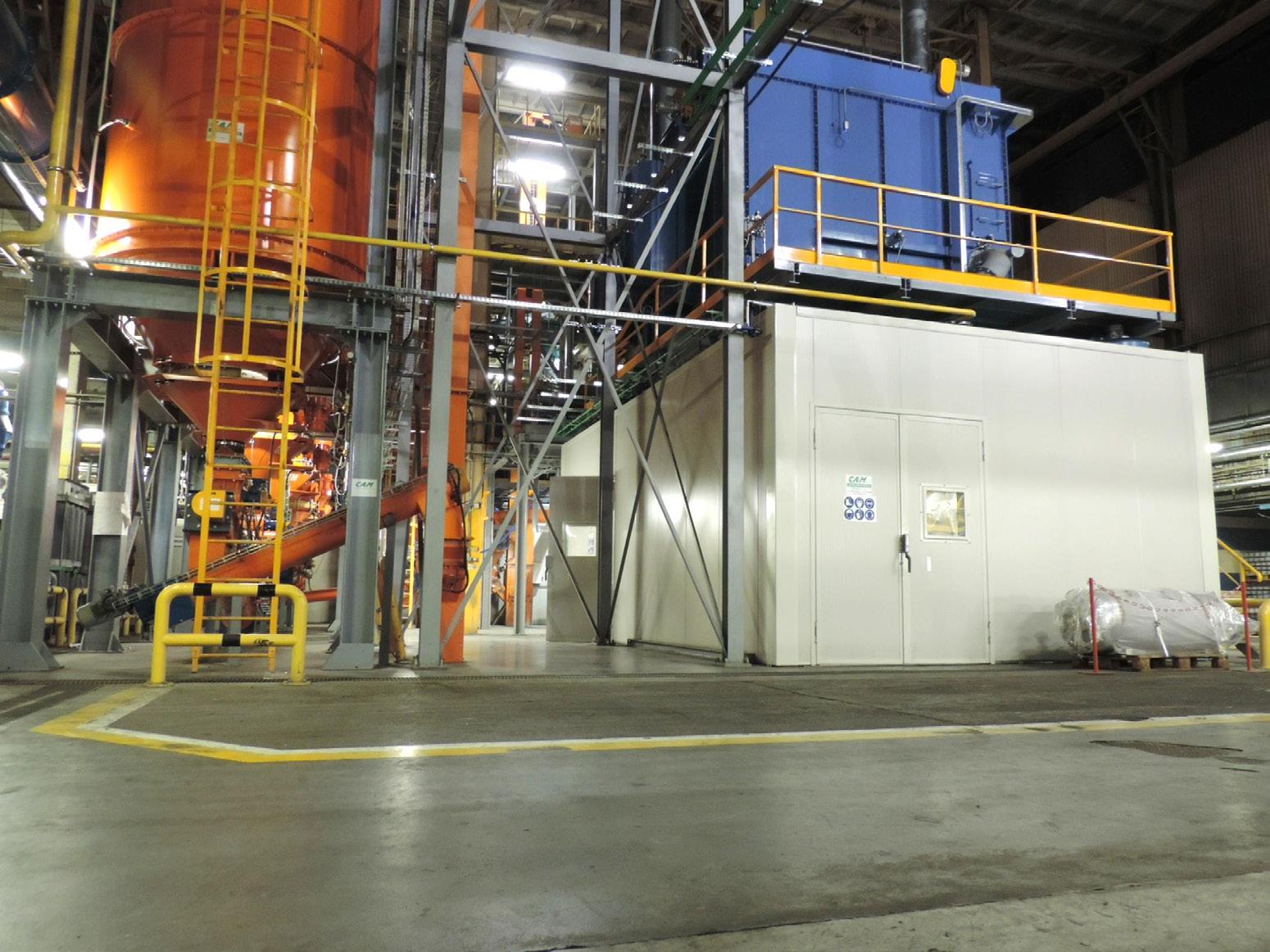

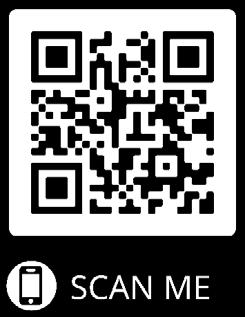
Capitalizing on lessons learned in scaling up lithium ion could give sodium ion batteries a jump-start from the lab and into the market reports Sara Verbruggen.
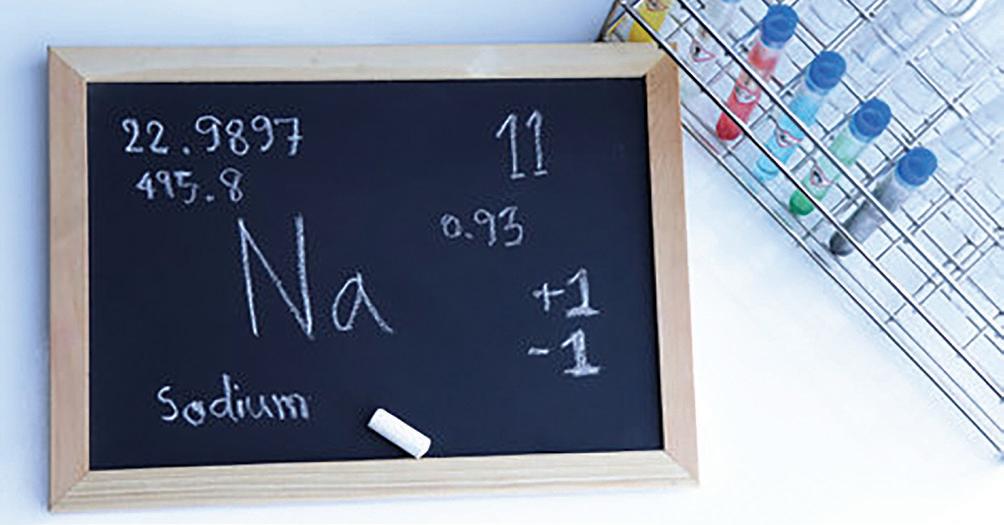
Future historians will smile when they look at the haphazard — or seemingly so — whims, fads and fashions that characterized early 21st century energy storage.
In one corner stood ultracapacitors, fuel cells, flow batteries of various complexities and that’s not forgetting hydrogen (in about eight colours and fabrication methods).
In the other there were mechanical storage devices, sometimes weird and wonderful — think gravity storage where weights are lifted when the renewable power is on, and then lowered to generate electricity, or vast canyons to be filled with compressed air, trains that are pulled to the tops of hills and then let loose with dynamos in the bogies.
All have made a mark in the energy storage landscape and have a place — rightfully or wrongly in today’s energy scene.
In the last five years, however, there’s been a new kid on the block — sodium ion batteries. And this chemistry could become the standard for the next generation of batteries. At its simplest, sodium ion batteries are cheap, recyclable, environmentally friendly, safe and are already showing impressive increases in power.
CATL, the world’s largest lithium cell manufacturer, has been exploring the chemistry for a decade and has had an operating line working on their manufacture since 2021. Despite their lower power density — $160Wh/kg compared to LFP of $200Wh/kg — in April 2023 Chery Automobile fitted CATL batteries in a fleet of its cars.
Developers are talking up the batteries to the extent of saying that their next iteration will have a density of $200Wh/kg. Manufacturing techniques are similar to that of lithium
batteries but cheaper — by around $20/kWh and supply chain problems are far less problematic.
All the major lead and lithium battery manufacturers are exploring the technology. Clarios, for example, teamed up with Natron Energy two years ago to formulate a manufacturing process for them. This January Clarios teamed up with Altris, a Swedish sodium ion cathode and cell developer. (See boxed item.)
Although sodium ion batteries are still regarded as the new kid on the block, in fact research and development into sodium ion and lithium ion batteries both began in the late 1980s. However, the growth in laptops, mobile phones and other consumer electronics, all requiring a battery capable of packing a lot of energy into a relatively small format, gave lithium ion its head-start and its almost immediate market dominance.
Unlike the NMC cells developed for electronics requiring expensive mining for nickel, manganese, lithium and cobalt, evangelists for the chemistry say all that’s needed are salt, wood, iron and air.
Recent progress has been speedy. Ivana Hasa, at the University of Warwick’s manufacturing group, started investigating sodium ion during her PhD in 2012, says the prospects and outlook for the technology have changed dramatically.
“The equivalent development that took 30 years in lithium ion is occurring in 10 years in sodium ion, because the knowledge accumulated in lithium ion is transferrable to sodium ion,” she says.
Andrew Thomas, co-founder and president of Acculon Energy in the US state of Ohio, describes the technology’s rise in the last few years as meteoric.
“Progress has been remarkable,” he says. “Not just lab-scale but also in terms of production volumes for multiple chemistry variants within the sodium ion family.”
Acculon Energy is commercializing sodium ion batteries in 24V and
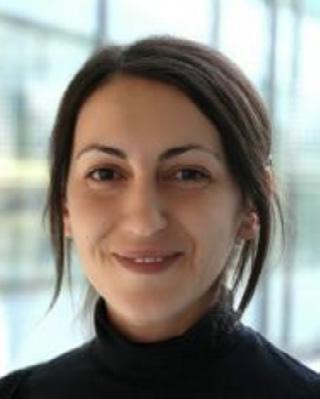
“The equivalent development that took 30 years in lithium ion is occurring in 10 years in sodium ion, because the knowledge accumulated in lithium ion is transferrable to sodium ion”
— Ivan Hansa, University of Warwick
48V specifications for use in industrial vehicle and mission critical applications, such as UPS and telecoms. The batteries, which use cells from China, based on layered metal oxide chemistry, are going through UL certification. The plan is to ship them to their first customers this summer.
One of the reasons lead acid still continues to dominate in a number of markets is because of its resilient
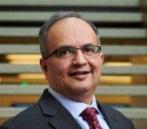
“We are taking our years of lithium ion battery experience and adapting it for sodium ion, which will accelerate commercialization. We see sodium ion as the next generation of batteries”
— David Patel, Clarios
Low voltage battery manufacturer Clarios has entered into a joint development agreement with Sweden-based Altris to focus on commercializing sodium ion batteries for low voltage batteries in the mobility market. These batteries will use cathodes and cells developed and supplied by Altris. Clarios aims to produce the batteries for a first customer from the second half of 2025.
It is also focusing on commercializing low voltage sodium ion batteries with an automotive OEM in the next four to five years, based on Altris’ cells and cathode technology.
Low voltage batteries are used in combustion, electric and hybrid vehicles for starter and auxiliary functions. The annual demand in 2028 will hover around 90 million units, according to analytics firm S&P Global. It predicts demand for auxiliary batteries will be high due to a move towards hybrid technologies and higher load for in-vehicle systems in cars.
Lead acid and lithium ion each have their advantages and Clarios vice president and general manager of energy systems David Patel says sodium ion has the strengths of both.
“The bigger market is lead acid but we are working on lithium ion for auxiliary batteries for non-cranking applications and
expanding the lithium ion offering by manufacturing an LFP solution as well as our NMC solution. We see sodium ion as the next generation of batteries.”
Clarios is taking its years of lithium ion battery experience and adapting it for sodium ion, which Patel says will accelerate commercialization of European sodium ion technology within the region’s automotive and mobility industry. Initially Clarios will use its existing lithium ion battery line as volumes ramp up.
Clarios is working in parallel with Altris. “We have preliminary cells for designing the system with the BMS and mechanical elements for the application,” Patel says.
“But once we get the full-sized cell format we will build a battery system using these sample cells, for testing and validation ahead of it going to the market.”
Patel says there is still the possibility of establishing a European supply chain for sodium ion batteries, from the raw materials through to the end product, as opposed to the difficult lithium supply chain.
Ronnie Mogensen, CTO and co-founder of Altris, says: “China has been focusing on the low voltage battery market with sodium ion and we need to establish alternative supplies. Potentially we are also establishing an entirely different supply chain.”
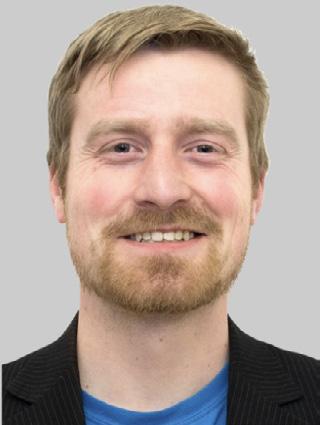
“To make this a viable product we need to ensure cycle life is enough, ensure safety testing is on par and ensure production is fine because the 200Wh/ kg cells will be dropped into the same [lithium] manufacturing lines”
— Ronnie Mogensen, Altris
electrochemistry. “Lead acid can operate hot and cold,” says Thomas. “That’s not the case with lithium batteries.
“Sodium ion is more resilient than lithium ion chemistries especially at the ends of the temperature spectrum. Like lead acid, it has a wide voltage range. “This translates as a similarly intuitive experience [for end users] to lead acid, where the power decline is more graceful and people can be ready for fitting a replacement. Whereas with lithium ion it drops off suddenly,” he says.
Sodium ion batteries have an advantage too in that they require minimal maintenance, like lithium ion, while performing reliably in various operational environments.
Peak Energy made the decision to go with cells based on polyanionic electrodes with iron, phosphate and sodium and no vanadium.
“The cells cycle like crazy, have great temperature performance and high C-rate performance. We chose it because we wanted it to be rock
“The nice thing about doing it at system level is that anything done to mitigate volumetric energy density cost is multiplied. You end up cheaper at the system level than LFP because energy density increases while costs reduce at the system level.”
solid on cyclability and safety,” says Landon Mossburg, Peak’s co-founder. “The next five to seven years is about a rapid improvement of the technology.”
He says that there is a big shift in China to the chemistry that Peak is using, mainly for stationary ESS.
Acculon expects to make customer announcements shortly. These will initially be OEMs in North America. Terex Corporation, which produces material lifting, mobile elevating work platforms and other industrial equipment, made a series ‘A’ investment in Acculon in 2022.
Thomas expects to see sodium ion outlive LFP in some applications and in some cases to have lower capital expenditure from early on. “We won’t see a distinct advantage at a cell level but from a system level perspective it is possible to simplify and lower the cost.
“An immediate gain is the ability for sodium ion to operate at extreme temperatures. Lithium has to have active thermal management — since sodium ion doesn’t require this, this cost is removed,” says Thomas.
Some sodium ion cell suppliers that Peak Energy has been working with manufacture LFP cells. There are indications that the cost per kWh of the sodium ion cell chemistry that Peak uses will reach cost parity with LFP by 2026 and will then continue to fall below, says Mossburg.
He is confident that the technology will reach and exceed being 40% cheaper than LFP within the next five years and has the potential to fall further.
In the medium term Peak Energy will work to optimize for flexibility
“Sodium ion can do things that other chemistries cannot do well. One of these is zero volt discharge.”
and maximize at system level sodium ion’s advantages while minimizing the main disadvantage which is volumetric energy density.
“The nice thing about doing it at system level is that anything done to mitigate volumetric energy density cost is multiplied. You end up cheaper at the system level than LFP because energy density increases while costs reduce at the system level.”
In late 2023 Sweden-based firm, Altris announced its sodium-ion battery cells had been validated for an energy density exceeding 160Wh/kg and the company now has prototype cells cycling at 200Wh/kg -220/ Wh/kg.
Ronnie Mogensen, CTO and co-founder of Altris says: “But to make this a viable product we need to ensure cycle life is enough, ensure safety testing is on par and ensure production is fine because the 200Wh/kg cells will be dropped into the same manufacturing lines.”
It will be about a year before these cells can enter production with partners such as Clarios. Mogensen says the challenge is always about balancing the different parameters.
“Different cells can be adapted to different applications to achieve a perfect fit, whereas imported cells do not deliver this and we have to get away from that.
“With a solution that meets the customer’s requirement at lowest cost for the customer, you win the market.”
Scaling up challenges
He says the experience of working with industrial partners such as Clarios is invaluable. “We have all this sodium ion research and brilliant scientists across Europe and I think they would like to be closer to the industry and vice versa but that cooperation is not always easy to do. More information exchange and industry pulling the research would help to accelerate a commercial product.”
Talk about the joys of sodium ion batteries may sound evangelical — its fans are not noted for their shyness — they are still nevertheless being marketed at a business audience that is deeply sceptical of change.
There are no shortcuts to establishing the credentials for any new type of battery. Getting it wrong for an automotive OEM, for example, could result in losses of millions of dollars.
“You have to get into the field and prove the technology and then demonstrate the ability to supply at scale with great quality. This is the stage we are at, doing pilots and proof of concepts to get the data,” says Andrew Thomas, co-founder and president of Acculon Energy.
Sodium ion is not a dramatically different battery on the block, in the way lithium ion is to lead acid. It offers an incremental improvement. Increasing energy density in combination with faster charging than lithium ion could allow for more profitable installations based on a more reliable and cost-competitive chemistry.
“Grid storage developers are hoping for more uptime or reliability out of the system using these cells and a longer asset lifetime as well. If sodium can bring down operational expenditure initially it will be popular,” Thomas says.
“Even in grid storage this is time for utilities and developers to do their first couple of sites. You need the supply chain but you also need the business case, which takes time and is based around a supplier’s product. If you can start sooner to generate experience, the clock to market starts counting down,”.
Peak Energy is seeking to make in-roads in the utility-scale energy storage market, which is dominated by lithium ion battery technology. The company’s co-founder, Landon Mossburg, identifies supply chain security, cost, performance, safety, charge-discharge, as areas where sodium excels over lithium. “These are the fundamentals of what the grid-scale storage market cares about,” he says.
The Denver-headquartered business, which was launched in summer 2023, has recruited its team from global players in the lithium ion battery industry. Mossburg previously worked at Northvolt (and Tesla before that).
“We’re building an internal validation block, like a DC block, which is 3MWh. Then we’ll build five to 10 in 2025 for two pilots. One pilot will be shared by several customers and the other will be for a dedicated customer.”
“Our strategy begins with building best possible energy storage system for sodium ion and engineering that system in the US,” he says. Peak Energy has been validating cells from suppliers in China and from these will finalize a primary and back-up supplier by the year end. The company has also signed up six customers for pilots. These will start in 2025.
“We’re building an internal validation block, like a DC block, which is 3MWh. Then we’ll build five to 10 in 2025 for two pilots. One pilot will be shared by several customers and the other will be for a dedicated customer.”
The customers for the initial pilots are all North America-based, one of which has more business outside of the US than within. Talks are also under way with a seventh and eighth, both of which are looking at markets outside the US but the plan is to start with US pilots.
The majority of these first wave of companies are independent power producers, including some which are part of utilities.
The shared pilot will aim to reduce costs for all parties. “Everyone is interested in the same data so building five separate pilots doesn’t add value,” Mossburg says. The shared pilot might be installed in a testbed microgrid to simulate various conditions, while the other one will be at customer site as part of a larger installation.
The pilots will allow Peak Energy to evaluate the technology and share it with customers. “This is so everyone gets more comfortable. We’ve already started sharing data from our own testing and our suppliers,” he says. “A lot of this concerns cell level safety
data, including thermal runaway testing, thermal propagation and gas mix generation.
“Then once we have first strings, and then blocks, we do further cycling tests to ensure thermal management system performs just as it has done in simulation, as well as mechanical tests. We share this data so customers are building up component level understanding of how the system should work.”
From the customers’ perspective an important point about sodium ion is that it is really similar to lithium ion. “It is not dramatically different, like vanadium or long duration technology,” he says. “Sodium looks and feels and acts like a lithium battery but is potentially better, cheaper, lasts longer, requires less maintenance and is safer but we need to show data that bears out the simulations.”
“The total cost of ownership drives decisions and we see sodium ion exceeding the value propositions of lead acid and also lithium ion — LFP particularly,” says Acculon’s Thomas.
While the levelized cost of storage (LCoS) is an important metric, at site level the return on investment is also critical. Mossburg says: “We see upside on using the asset more. The cyclability of the chemistry we use is higher than for LFP. The temperature profile is more forgiving, especially at higher range, so you can essentially push these batteries harder than you would be able to do with lithium ion.
“The nice thing about sodium is its high C-rates due to high ionic conductivity so the asset does not require intervals between charging and discharging. That said, however, we must still be cheaper in terms of CapEx.”
The pace of research into Na ion is speeding up as the market implications of the technology become ever yet clearer. Customization is at the heart of today’s developments.
A welter of research into all the facets of sodium ion batteries is bearing fruit. A host of angles are under consideration that go far beyond their manufacture. Everything from recycling, end-of-life usage and tweaking the technology to make it fit more applications is being studied.
Ronnie Mogensen, CTO and co-founder of Altris involvement in the EU-funded SIMBA project — SIMBA stands for Sodium Ion and Sodium Metal Batteries — counts it as useful, due to it broad scope. (The three year SIMBA project closed on June 4.)
Lithium ion and sodium ion batteries work in a same way, known as interclation. How they both operate is comparable to a rocking chair, so whenever the battery is charged and discharged, ions move between the cathode and anode through an electrolyte. As the ions move inside the cells electrons also move through an external circuit, enabling chemical potential energy’s conversion to electrical energy.
The three main chemistries that can be used to make sodium ion battery cells cathodes are layered oxides, polyanionic compounds and Prussian blue analogues.
Much of the announced capacity is for layered oxide materials, as they can yield cells with high energy density. According to Benchmark Mineral Intelligence, they have a high capacity, moderate cycle life, and relatively robust supply chains.
High purity manganese sulphate monohydrate is the required feedstock. According to Benchmark, in 2023 China accounted for over 90% of the manganese HPMSM supply in 2023 which is forecast to reduce to just under 70% by 2030.
Alongside manganese, iron is a common component of sodium ion battery cathodes due to low cost and high electrochemical stability.
The aim is to show that sodium ion is a drop-in technology so that existing lithium ion facilities can be used.
University of Warwick’s assistant professor Ivana Hasa, who is an elected technical adviser for European Technology and Innovation Platform (ETIP) Batteries Europe, researching emerging technologies says: “During the three years of the project we have been trying to optimize the manufacturability of Altris’ Prussian white cathode materials.
“We also wanted to adopt aqueous processing to avoid solvents used in
Iron sulphate (FeSO4), which is a biproduct of steel production, is the main feedstock for making ironbased layered oxide cathodes.
Prussian blue is a newer type of sodium ion battery cathode. Their key ingredient -ferrocyanide salts — benefits from a strong supply chain, due to reaction processes found in large industries like cosmetics and food.
Polyanionic materials consist of multiple anionic groups, within a 3D structure. They are made with a transition metal such as vanadium, manganese or iron and other materials include phosphorus, sulphur or silicon.
In all chemistry variants the input materials will lower the cost of sodium ion batteries as the industry scales up.
Hard carbon is the anode material used in sodium ion battery cells, which is produced mainly in Asia.
“LFP prices have halved but $60kWh is unlikely to be sustainable. With sodium ion there is a pathway to a battery less than $50/kWh at cell level and once in that territory it is less about competing with incumbent technologies of lithium ion and lead acid but the actual cannibalisation of these,” Thomas says.
lithium ion. Then we used all the same processing steps, including mixing, for slurry, coating for the pilot line, calendaring, cutting electrodes into cell assembly, in this case A7 sized cells, with 1Amp/h using a hard carbon anode and commercially available liquid electrolytes. The final application was a domestic energy storage system.”
Mogensen says: “We’ve learned more about battery manufacturing and how to troubleshoot when people have questions about the technology. It has also been gratifying to see how other people use our materials.”
Under the EU Horizon programme a call for projects is open, called ‘NonLi Sustainable Batteries with European Supply Chains for Stationary Storage (Batt4EU Partnership)’.
While selected projects have not been announced, Mogensen and Hasa are hopeful that the sodium ion field will be supported and move towards establishing a supply chain and addressing some of the challenges around industrializing the technology.
“In Europe research into sodium ion batteries started earlier but in Asia manufacturing is underway, so we are slower. A focus of the EU has been around the sustainability of these alternatives to lithium ion,” says Hasa.
Mogensen says: “Altris’ sodium ion cathodes are water-based and we are making these cells recyclable, learning from lead acid where batteries can be recycled from the outset.”

There is already a lot of discussion at conferences, says Hasa, about recyclability and how this will happen as the materials are so cheap and abundant, compared with those in lithium ion. “In sodium ion, you have sodium, iron and carbon, so the value may be in the aluminium current collector which is still cheaper than copper.
“But the point is we are going to be forced to think about this because there are strict regulations coming into force. Even if it won’t be cost-effective to begin with, it will have to meet regulations.”
The ability to fine-tune sodium cells is a clear market advantage: “Natron in the US has been smart,” says Hasa. “They have a particular chemistry, which is Prussian blue, but they developed a symmetrical cell, so use Prussian blue in the cathode and anode.
“This gives a small voltage almost comparable to lead acid batteries but the power capabilities are impressive and so they are targeting niche markets such as UPS, which need high power for a short time.”
Until five years ago sodium ion was not discussed in relation to an automotive application, only stationary storage. “But LFP-graphite cells attracted interest and are considered more sustainable and cheaper. Now we are seeing sodium ion talked about as a competitor to LFP-graphite,” she says.
New battery, new supply chain
Sodium ion offers the potential for establishing supply chains in the west to match demand for cheap, reliable, safe and sustainable batteries. But establishing an entire end-to-end supply chain, from raw materials sourcing through to end product is a significant undertaking.
Mossburg and Andrew Thomas, co-founder and president of Acculon Energy expect to source cells from China for the time-being. Thomas says: “Making cells is analogous to lithium ion. In China there is an oversupply of LFP capacity. There will be consolidation and acquiring of smaller producers and some of this capacity will be for sodium.
“Acculon’s job is to distil out the technology risk for the industrial market. This can only be done with diligence, which involves validating and evaluating different technologies and we have a leg-up from doing it with lithium ion.”
That said, because there are just a few companies that have scaled manufacturing in China, working through
commercial agreements while they also scale their own manufacturing in China adds challenges, he says.
“The market is not licensing existing technology from China and trying to localize manufacturing while attempting to go beyond current state of cell technology that is being produced in China. That adds technology risk. Sometimes a crawl, walk and run approach isn’t all that bad,” Thomas says.
Mossburg says: “A domestic battery industry is healthy for the US, including a supply chain here but also having strong trading partnerships with China is a stabilizing geopolitical force.”
From 2027 Peak Energy aims to make its own sodium ion battery cells in the US by purchasing electrodes from suppliers. “We see the market for sodium ion evolving fast over the next five to seven years,” he says.
“Having some flexibility in modifying the anode and cathode — active material — can change electrode designs quickly without having to retool a factory and it avoids some pain and cost in battery cell manufacturing.”
The company will also be focusing on innovating its cell technology from the ground up while collaborating with partners to build an ecosystem around sodium ion. Mossburg says: “But the initial focus is on what we are really
When compared with lithium ion batteries, sodium ion technology is a safer chemistry.
“Often hearing the statement that sodium ion batteries are ‘intrinsically safer’ I try to rationalize what is behind this assertion. Much comes down to the ability to store and transport these devices at zero voltage as they can be totally discharged,” says the University of Warwick’s Hasa.
Ahead of real-world installations to prove just how safe the chemistry is, developers of batteries are putting sodium ion cells through various safety testing, including for thermal runaway.
Acculon is working on addressing thermal runaway at cell level for sodium ion, potentially halting the reaction so only a single cell is lost rather than the risk of a whole container. “We have done extensive testing and I would characterize sodium ion as being different,” says Andrew Thomas, Altris co-founder
good at, which is system-level engineering.”
He is bullish on competitiveness in the long-term. China has built out three to five times domestic demand for LFP and is doing same for sodium ion. “But over time there is the opportunity to change the way batteries are manufactured and so then you can reset the competitive clock. We can still win the race with sodium ion but we have got to run fast.”

Landon Mossburg, Peak Energy: “We’ve been shown by cell suppliers cycling data well in excess of 45°C over 5000 cycles and even heading into higher cycles and temperature ranges”
and president.
“We know what the curve looks like with NMC and what gasses come out and same with LFP, but this is not as well understood with sodium ion.”
Improved safety characteristics of sodium ion cells allows for simplification of thermal management systems and fire suppression, which also brings down the cost of sodium ion battery storage systems.
“We’ve been shown by cell suppliers cycling data well in excess of 45°C over 5000 cycles and even heading into higher cycles and temperature ranges,” says Peak Energy’s co-founder, Mossburg. Ultimately, Hasa says she hopes to see sodium ion batteries commercialized in domestic energy storage systems. “Hopefully it will be because they are highly suitable, through proving to be a much safer technology than what is around today,” she says.
The
range of insurance products on offer is being expanded and refined all the time, writes Wyn
Jenkins.
For an insurance claim, which will be the more expensive? Negligence by an airline that causes the death of 50 people? Or negligence that causes the deaths of 50 lawyers? Or negligence that causes the deaths of 50 American lawyers’ wives. And what if that’s over the skies of Detroit?
The importance of these questions — forgetting the assumption that all these lawyers are happily married — is that risk comes in a great many forms and the risks on a BESS are equally diverse and possibly cumulative.
The destruction of the plant by, say, a hurricane would be just the start of things. One could then add a contractual liability to provide energy storage for a utility as a PPA. Perhaps then add an employee liability, perhaps staff were injured in the destruction.
Thinking further could there be a claim by the local people that pollutants had entered their groundwater from the plant during the storm.
The fact is the range of possible claims could be huge, and quite possibly more than the BESS owners envisage.
For example, they might require general liability and products liability insurance, property insurance, environmental liability insurance, ocean and inland maritime transport insurance, umbrella or extra coverage insurance, cyber liability insurance, professional liability/E&O insurance, and other crucial business insurance as a battery manufacturer.
Equally, some carriers, such as Altium, are offering a BESS construction all-risk and operational ‘all risk’ insurance solution insurance. All-risk refers to insurance that includes protection against all hazards that aren’t specifically excluded in the insurance contract.
New York-headquartered Broker Marsh, which provides insurance and risk management services, has also developed a new renewable energy facility targeting mid-scale solar and battery energy storage system risks in the US and Canada, offering dedicated
insurance capacity.
The facility offers pre-agreed coverage conditions for construction all risk, operational all risk, general liability, and excess liability, either as a package or individual policies, to projects with a capacity of less than 50MW.
Nardac, an energy and infrastructure reinsurance broker based in London, has recently launched a $50 million facility. It sees a push into this space as complementing its wider portfolio.
Tom Harries, a partner in the brokerage says it fits into its specialty offering across energy and infrastructure.
“Our underwriting products target capacity-starved market segments. So far that includes an insurtech platform for commercial and industrial solar in the US and a product for insurance operational BESS projects around the world.”
He anticipates further investment in this space, as it aims to grow alongside developers as they build BESS projects in new geographies. He said the company is seeing an uptick in projects in mainland Europe whereas to-date the most projects have been in the UK, the US and Australia.
“We are also investing more in data and client engagement. Operating a BESS asset is different to wind and solar, so we are working closely with clients to align risk transfer and spending to the annual vagaries of operating a BESS asset on a merchant-basis.
“Another peculiarity of BESS is the balance of warranties and degradation. We are working with clients with older assets to best sculpt risk transfer to projects soon exiting warranties. We anticipate growing with the BESS market — new territories, larger scale and innovative solutions to support merchant operations.”
Amir Sethu, head of sustainability & ESG at MS Amlin also sees the BESS offering as complementing a wider portfolio. He says that while it doesn’t have an explicit BESS offering, it does have a dedicated power and renewa-
bles team, and is exploring transition opportunities where insurance solutions address the needs of inherently linked green technologies.
“These technologies cannot and should not be looked at in isolation as they are dependent on one another. We need to find insurance solutions that work across the entire value chain, as opposed to thinking in siloed classes of business, addressing the multitude of risks that clients will be concerned about.
“This means joining the dots across different underwriting products and disciplines, more widely than energy
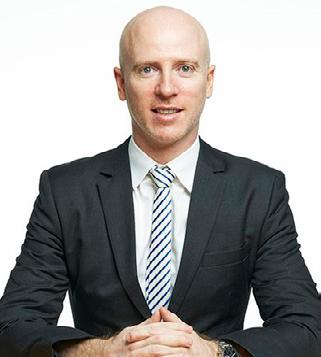
“Historically, most renewable energy insurer portfolios — including our own — have been dominated by a mixture of onshore wind, offshore wind and solar PV. BESS helps by diversifying our portfolio into new and different technology and new territories”
— Tom Baker, Markel
teams. “As BESS is a fundamental enabler, it’s inevitable that the Lloyd’s market will have to invest in this space. With the shift towards an electric infrastructure, BESS is becoming increasingly crucial across the value chain, and it’s important that we evaluate the risks and opportunities to meet evolving customer needs.”
Tom Baker, director of sustainable energy & power at Markel, says BESS risks, for all their complexity, can also offer insurers diversity. “Historically, most renewable energy insurer portfolios — including our own — have been dominated by a mixture of onshore wind, offshore wind and solar PV. BESS helps by diversifying our portfolio into new and different technology and new territories.
“It also helps to complement it from the perspective that our existing wind and solar client base are adding BESS to their own portfolios, either as stand-alone or connected to existing projects.”
Newland says that for the broker moving into the sector represents a natural pivot on its existing expertise.
He says that much of the renewable energy development has been asset-based and driven by investors via equity or project finance. “Through our 20-year track record in public-private partnerships and project-financed asset development, we have significant experience in working with renewable energy developers and investors on a ‘cradle to grave’ basis.
“That’s from land acquisition and design and construction through to operational insurance on a portfolio of assets basis.”
BESS assets are often being developed and owned by the same renewable developers and investors that are existing clients and prospects, or similar entities focused purely on BESS development. “This is a prime example of understanding clients’ evolving needs at the different stages of their company and assets development and tailoring our services to meet those challenges,” says Newland.
This is clearly a growth market with many opportunities. Insurers and brokers acknowledge this. But it is not without its risks. BESS present a significant opportunity for insurers given the rapid adoption of renewable energy sources. Sethu says intermittency is an
inherent challenge with renewables, and BESS plays a vital role in enabling grid stability.
“The prospects for the insurance industry span front-of-meter utility-scale installations; behind the meter commercial and industrial; and behind the meter residential. For insurers, this translates into cross-class opportunities beyond physical damage, with potential openings for performance guarantees, thermal runaway warranties, software integration risks, and cyber exposures. Understanding and properly underwriting these risk areas will be crucial for insurers aiming to capitalise on this rapidly evolving market.”
Newland agrees that demand for BESS will grow exponentially over the coming years as economies ramp up investment in renewable and environmental technologies. He suggests the UK is at the forefront of this trend and says he is seeing increasing demand for BESS insurance solutions on the ground.
“We also recognize the underlying reasons behind this trend,” he says. “Currently, the variable peaks and troughs of renewable energy supply are having to be managed by power grids which were designed for a consistent baseload from hydrocarbon-fuel-based power stations or nuclear power.
“The grid infrastructure is designed for the ‘old’ world, not the ‘new’ world, and will have to evolve rapidly in response to the climate emergency and increasing sustainability goals.
“The UK is ahead of the world in this sector, and we expect this progress to continue at pace. We are also anticipating significant growth globally, starting in Europe and North America, as renewable energy begins to dominate the energy supply and causes further grid instability.”
But there are also risks associated with the sector’s growth.
Harries says in the short term, any reshoring of BESS manufacturing will “pain” insurers. “It’s important for procurement teams to scrutinise any factory ramp-ups and quality control processes. In the medium to long term the shorter supply chain should reduce replacement times and lower exposure. But for now, battery cells are sensitive bits of equipment.”
But the nub of this seems to be whether the conservative approach of insurers will impact or slow the scaling of new storage technologies.

“This is a prime example of understanding clients’ evolving needs at the different stages of their company and assets development and tailoring our services to meet those challenges”
— Rhys Newland, Miller
A recent report by CAC Specialty notes, the inability of a sponsor to procure sufficient insurance coverage to match a bank’s risk tolerance can prevent a project from being financed.
“This is amplified as the appetite of insurers changes as the loss history evolves, which could leave projects that use a technology “stranded” if such losses develop between project development and financing,” the report says.
“Ultimately, if a project is not insurable, it is not financeable. We are not currently aware of any such projects, but the pace of advancements in battery energy storage technology and the concurrent evolution of insurer appetite warrants a close watch and understanding of these dynamics.”
The report notes that there is a great history of the insurance market responding to technological change in a way that promotes safety, efficiency and commitment to innovation. It cites airbags in cars and sprinkler systems as being due in large part to advocacy from the insurance community. “We have no doubt that the insurance community will meet this challenge in the same way,” it says.

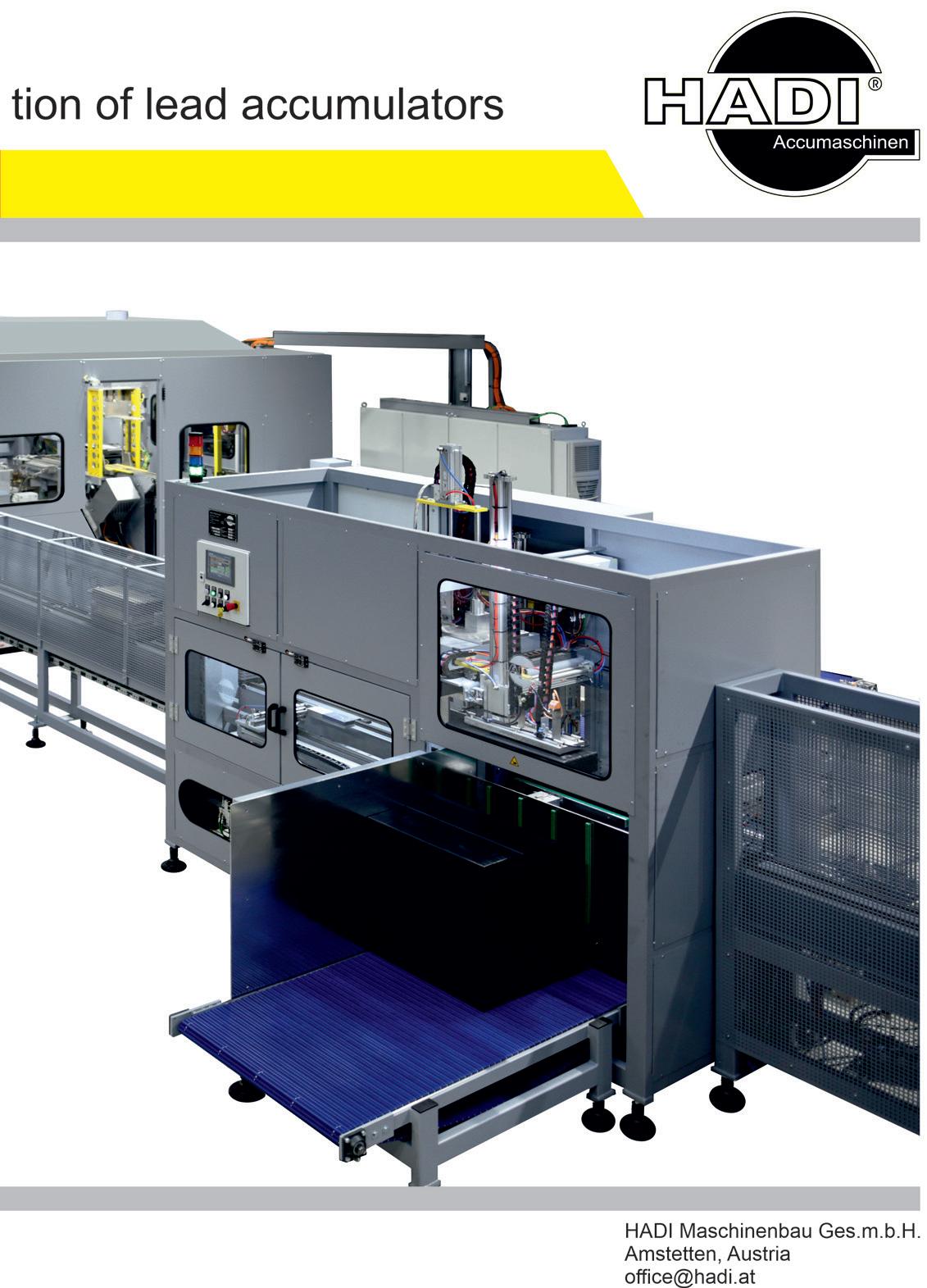
The number of battery energy storage systems is growing
exponentially.
But this is at risk of being stymied by an insurance sector that is struggling to keep pace with the technology and its need for smart risktransfer solutions. By
Wyn Jenkins
While estimates vary dramatically, the growth potential of battery energy storage systems is huge and very noticeable — including to investors and other interested parties outside the energy storage sector.
But it is also increasingly becoming apparent that a big risk to this growth is the availability — or potential lack of — suitable insurance products.
The size of the challenge is difficult to assess, given an extraordinary plethora of market research estimates of the size of the BESS sector. Figures range from a low of around $11 billion to much, much higher. And pretty much all estimates put a CAGR in the mid-teens.
Tom Harries, partner of energy and infrastructure reinsurance broker and managing general agency Nardac, itself part of global specialist insurance distributor Amwins, suggests that there are some $40 billion of operational BESS assets in the US alone in 2024. From this, he is also able to estimate the insurance premiums at play. “We look at typical premium rates and end up with an operational premium universe of some $200 million-$250 million,” he says. “We can’t be specific on the exact figure but, use a ballpark, it is a big and fast-growing market.”
In April, Nardac launched a dedicated set of underwriting services for battery energy storage projects. Backed by eight A-rated Lloyd’s syndicates the facility will enable Nardac to provide $50 million in underwriting to battery developers and operators for projects worldwide.
It says it will provide the BESS sector with comprehensive insurance services “rooted in the understanding of evolving cell chemistries and types, the more granular battery management systems now available, and the increasing energy density of cabinets.”
Harries said when it launched: “The project development pipeline for battery energy storage systems is
growing at an exponential rate. But while there is impetus to deploy batteries to manage the shift to low-carbon and electrified power grids, there are hurdles to opening up greater insurance capacity to support this transition.”
Tom Baker, director of sustainable energy & power at Markel, cites even bigger figures, but which relate to the whole of the energy storage market globally. He suggests the market is to increase by almost 200% between now and 2030 — or 16% a year. Driven by growth in China and developing economies, the market should surpass $110 billion at the end of the decade.
“So, we see a big opportunity to use our global reach and renewables expertise to drive profitable growth in this space,” he says.
Such commitment is needed, there is an emerging fear that the growth of energy storage could be stymied by the insurance community’s perceptions regarding the safety of such installations — and ITS subsequent willingness to take on the risk of them going wrong.
The task for underwriters is made more challenging because of the rapid technological change in the sector. Developing underwriting guidelines and pricing takes time — only for the technology to change again.
Expertise (and science) is critical Harries cites the many considerations an underwriter must take on board, and subsequent judgements that are needed, to underwrite some of the more emerging technologies.
Even then, there is negotiation involved, driven by the appetite of insurers and wider market sentiment towards such risks. “From a data room of information, we must make a judgement on the quality of a particular risk,” he says.
“By weighing up the location, taking into account exposure to natural
hazards, considering the technology in the context of new versus established products, and the company’s track record we must filter the good from the bad. We then judge a fair premium and policy terms and conditions. It is a negotiation.
“We encourage clients to discuss what it is they want: is it a lower premium spend and greater risk retention or vice versa. We then tailor the offering,” says Harries.
Amir Sethu, head of sustainability & ESG at MS Amlin highlights just how complex the world of BESS has become. “With nascent and complex technologies, some level of scientific understanding is important to compliment pure underwriting expertise,” he says.
“Given the multiple types of exist-
“We encourage clients to discuss what it is they want: is it a lower premium spend and greater risk retention or vice versa. We then tailor the offering,”
ing and expected battery technologies, each with their own advantages and disadvantages, insurers need detailed insight to be able to price these types of risks.”
He estimates there are at least 10 types of battery chemistry or technology that will be available in the next five years.
Tom Baker at Markel, says the firm has recently appointed a specialist risk control engineer in its renewable energy team. “Having that type of engineering skillset in the team is very important. It helps us to better understand the risks, but also the
many different types of BESS and their underlying chemistry, as well as the differentiation between the different types of OEMs,” he says.
“Equally, having a global book is important, as different countries are at different trajectories in their rollout of BESS. Having that global network allows us to learn lessons from the experience that’s already been gained elsewhere, and — where possible — to
share that with our brokers and clients.
“For example, when one country experienced several BESS-related fires, we were able to apply lessons learned from those across our global portfolio and help to mitigate risk for other clients.”
Rhys Newland, head of renewable energy and environmental technology, Miller, offers a broker’s perspective. He agrees with other commentators
The joy of jargon is that professionals can mystify what they do to the uninitiated. In fact, the concepts behind the language in the insurance business are straightforward.
The insurance sector has its own language when talking about market conditions. Hard or hardening means that insurance rates are increasing (good for insurers, bad for buyers/ clients); soft or softening means the opposite.
A hard market also means a lack of supply compared with demand. This means insurers are more willing to underwrite risks.
Conversely, a soft market typically means too much supply (insurers with plentiful cash to underwrite business) compared with demand.
Broadly, insurers have been enjoying hard market conditions globally for several years now, driven by economic turbulence and high levels of losses (exacerbated by climate change).
But this is not true for all lines of business.
For companies working in the BESS sector, it matters because it drives how much they pay for their insurance — and how readily available insurance solutions are.
Rhys Newland, head of renewable energy and environmental technology at broker Miller, acknowledges that the sector was in a hard market in 2022 but is softening currently.
He says new entrants to the market are increasing the capacity available, which is in turn helping moderate
premium growth. “New entrants to market, are ensuring competition and availability of capacity,” he says.
Tom Baker, director of sustainable energy & power at Markel, argues

on the need for specialist skillsets such as engineers. “For brokers, a technical understanding is critical to making informed decisions in this field, as well as experience of the developer and investor process in project-financed assets.
“Insurers need risk engineer support to underwrite these projects and to assist the industry with risk management advice.”
that premium rates have been stable with some modest softening over the past 12 months, fuelled by additional capacity coming to market and an increased focus on ESG considerations among insurers. This has been partly driven by the fact that most renewable energy books now have BESS risks in them.
“It’s virtually impossible not to, given the demand from the client and broker base,” he says. “There’s more than adequate capacity for current demand, which enables insurers to offer more comprehensive levels of cover to clients, including risk engineering services, for example.”
Tom Harries, a partner at NARDAC, agrees that rates have plateaued, but adds that rates and deductibles are also susceptible to recent claims. He says the rate of thermal runaway events is falling, as a percentage of projects/MWs installed, but some insurers still act impulsively to claims.
“2023 was a good year with a drop in the incident rate of thermal runaway, but this year has seen an uptick in potentially larger claims and this looms over affected insurers until the final claim figures materialize.
“If you add up all the capacity with BESS appetite then there is adequate capacity. But there is a shortage of flexible and lender compliant capacity. BESS clients and the industry are in growth mode.”
“Our clients require capacity that is adaptable to late project changes, to updates in technology (for example new cell capacities, higher density cabinets), augmentation, small and large projects and lender requirements and for this, there is still a shortage. This is exactly why there is demand for our underwriting product. It is specific to BESS and the evolving industry” — Tom Harries, NARDAC
The Sally Breidegam Miksiewicz Innovation Award celebrates innovation in equipment, processes, services and products that advance the lead battery industry.
The range of innovations set up as candidates for the award has been startling. Some have been as simple as a better design shape for a marine battery; others have embraced the latest technological advances in our understanding of the lead battery.
Some of the nominations have been breakthroughs in the laboratory but struggled to be commercialized. And yet others — think of advances in EFBs — have been quickly embraced as a new standard in an emerging marketplace that continues to grow exponentially.
But, be they large or small, these innovations matter. All advances are worthy of note.
For the last decade a tonne of investment has been flung at developing better lithium batteries while lead research has been side-lined.
The revamp of the ALABC and its replacement by the Consortium for
Battery Innovation is putting the lead battery back in the spotlight. Clear advances are on their way and credit must go to CBI for helping to put some of this together.
That said credit must also go to a generation of lead researchers that have remained in the background — think RSR, Hammond, East Penn, Daramic and many others — that continue to shape the lead battery industry.
This year 12 firms put their hat in the ring to win the award. They were: Black Diamond Structures, CAM, Clarios, Daramic, ENTEK, GS Yuasa Energy Solutions, Li-Metal Corp, Midtronics, OPTIMA, Servato Corp, Wirtz Manufacturing and distinguished academic Mészáros Tamás. Please note, for space reasons, not all the entrants are listed in the following pages.
This year’s judging panel consisted of six well known battery luminaries: George Brilmyer, Tim Ellis, Bob Flicker, Don Karner, Geofrey May and Boris Monahov
“Innovation is the thing that gives you the opportunity. It’s the promise of our future.”
Sally Breidegam Miksiewicz
The most eagerly awaited accolade of this year’s special centenary BCI conference in Fort Lauderdale, was the annual Innovation Award. Set up in 2016 as a tribute to East Penn’s CEO Sally Breidegam Miksiewicz following her untimely death in 2014, this year’s award sparked the most entries ever — 12 in all — including two from the lithium side of the industry.
The quality of the entrants was hailed as excellent by a judging panel comprising: George Brilmyer, Tim Ellis, Bob Flicker, Don Karner, Geoffrey May and Boris Monahov.
And the outstanding winner was ENTEK for its solvent-free separator technology, providing an elegant technical and environmental solution that doesn’t sacrifice strength or performance.
“ENTEK’s new battery separator technology represents the kind of sustainable and practical innovations that are building the future of the energy storage industry,” said Roger Miksad, chair of BCI.
“We are proud to recognize ENTEK, and the spirit of progress that its innovative solution represents for this industry.”
ENTEK explained that the term “polyethylene separator” is a misnomer — these separators require large amounts of precipitated silica to be sufficiently acid wettable.
“Innovation is a core value and centered in ENTEK’s culture and passion for using materials science expertise and technical capabilities to solve the industry’s most complex challenges. ENTEK is developing technologies for the next generation of separator products to help our customers manage increasingly stringent regulatory and societal challenges for producing high performance energy storage products,” said Rick Pekala, CTO for ENTEK.
Battery manufacturers can their use this separator product within their existing capital equipment and manufacturing processes.
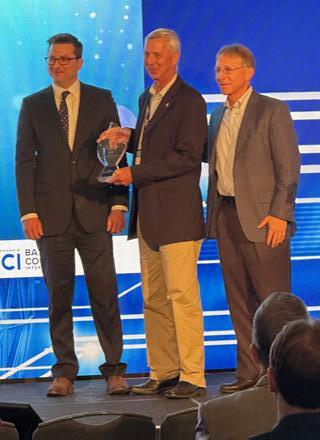
And, roll of the drums … the outstanding winner this year was ENTEK with an elegant technical and environment solution
Most flooded lead acid batteries include polyethylene separators. The term “polyethylene separator” is a misnomer because these microporous separators require large amounts of precipitated silica to be sufficiently acid wettable.
The volume fraction of precipitated silica and its distribution in the separator generally controls its electrical properties, while the volume fraction and orientation of polyethylene in the separator generally controls its mechanical properties. The porosity range for commercial polyethylene separators is generally 50%-65%.
This innovation involves the extrusion of isotactic-polypropylene (i-PP) in combination with a nucleating agent, silica, plasticizer, and surfactant to form a non-porous sheet that is wound into rolls. The extruded sheet is then stretched mono-axially or biaxially to form a microporous film as a result of cavitation and/or beta-crystal to alpha-crystal transformation.
Next, ribs are extruded and bonded to the surface of the microporous sheet to form Pb-acid separators in roll form. Battery manufacturers can their use this separator product
within their existing capital equipment and manufacturing processes (e.g., enveloping).
ENTEK is a global materials science and engineering company that produces and markets lead-acid separators, lithium-ion separators, extruders, and engineering services on six continents. We combine bestin-class equipment with our pursuit of continuous improvement and innovation to give our customers industry-leading performance and reliability. International lead and
During the manufacture of polyethylene separators, precipitated silica is typically combined with a polyolefin, a process oil, and various minor ingredients to form a separator mixture that is extruded at elevated temperature through a sheet die to form an oil-filled sheet. This sheet is calendered to its desired thickness and profile, and the majority of the process oil is extracted with an organic solvent.
Hexane and trichloroethylene have been the two most common solvents used in separator manufacturing.
The solvent-laden sheet is then dried to form a microporous polyolefin separator and is slit into an appropriate width for a specific battery design.
In response to environmental pressures, government regulations, and health concerns related to organic solvents such as hexane and trichloroethylene, there is a need for a new approach to manufacture microporous membranes that can meet the performance and process requirements for production of a Pb-acid battery separator.
In response to environmental pressures, government regulations, and health concerns, there is a need for a new approach to manufacture microporous membranes that can meet the performance and process requirements for production of a Pb-acid battery separator.

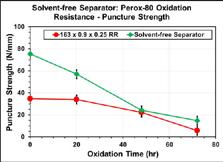
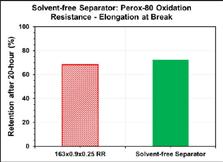
Making flooded lead batteries achieve the performance of their more expensive AGM counterparts has been a long-held ambition of battery makers. But also improving VRLA performance to reduce costs is a double win.
Daramic’s latest innovation — Daramic® Stratosphere™ — is a revolutionary new approach that increases battery performance and reduces costs for both flooded lead batteries (FLB) and VRLA ones.
Stratification of the electrolyte has challenged lead-acid batteries since their earliest days. This is particularly the case for flooded batteries used in applications such as energy storage systems and in auxiliary batteries for hybrid and electric vehicles, and other uses where extreme temperatures and partial state of charge conditions can accelerate the stratification process.
The variability of stratification exacerbates open circuit voltage excursions and discharge voltage fluctuations, which result in battery sulfation. That increase ultimately affects the charge acceptance and cycle life of the battery.
The typical functions of a traditional flooded battery separator involve managing <10% of the electrolyte in the system, but unfortunately the separator does not regulate the distribution of the acid in each cell.
Advanced absorbent glass mat (AGM) separator technology provides a solution to these stratification issues, improving the efficiency of battery management systems.
However, this comes at the expense of increased complexity and cost of more than double in battery design and manufacturing.
Daramic’s innovative Daramic Stratosphere technology, featuring a proprietary gelation composite substrate, controls the electrolyte by absorbing the electrolyte and expanding into the void space by 50%.
For flooded batteries, this evolution in technology retards stratification ensuring reliable sulfate ion trans-
port and communication with the battery management system (BMS), improving the battery’s Partial State of Charge (PSoC) cycle life by at least 2x, and all while maintaining affordability of FLB.
For VRLA batteries, Daramic Stratosphere separator technology can replace AGM, increasing filling and formation speeds, and negating

§ Control Batteries
§ Stratification is evident
§ PAM: Soft top; sulfated hard bottom
§ NAM: Soft throughout
§ N-Wrap, P-Wrap:
§ No stratification evident on plates
§ Observed only surface sulfation
§ PAM was slightly soft throughout
the need for vacuum systems, high battery compression (>5%), or intricate and expensive manufacturing processes that are usually required.
The introduction of Daramic Stratosphere technology represents a huge step forward for lead-acid batteries. Whether enhancing the performance of a flooded system, or improving the cost structure of AGM/VRLA

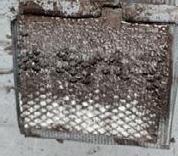
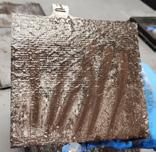

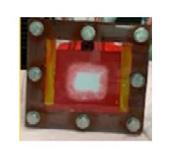



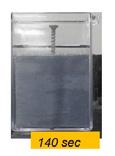




n Global news round-up
n Exclusive in depth features on new and promising battery and energy storage applications
n Case studies of advances in battery productions to bring high performance, cost effective products to market
n Analysis and forecasts on different markets and technologies from leading consultants and experts in the field
n Examination of policy around the world that is enabling investment and growth in battery and energy storage technologies
n Updated events calendar
The introduction of Daramic® Stratosphere™ technology brings significant advancement to both flooded and VRLA systems, reinforcing the position of lead-acid batteries as one of the most cost-effective and reliable battery technologies available today.
— Daramic Stratosphere technology enables the next evolution of leadacid batteries.
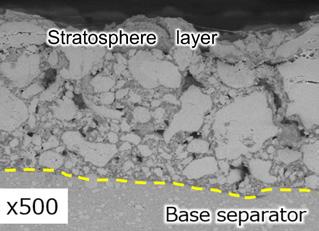
Daramic says its Daramic Stratosphere technology features a proprietary gelation composite substrate, and so controls the electrolyte by absorbing the electrolyte and expanding into the void space by 50%. The introduction of Daramic Stratosphere technology brings significant advancement to both flooded and VRLA systems, reinforcing the position of lead-acid batteries as one of the most cost-effective and reliable battery technologies availa-
Validation of the technology has been proven by research in two Daramic facilities, one in the US and the other in Japan. This has allowed the next leap forward, taking 2V performance enhancements to be scaled up to the 12V level with realtime testing with battery manufacturing partners.
Margaret Roberts, patent liaison; Kevin Whear, vice president strategic marketing; Juri Iwama, development & evaluation; Susmitha Appikatla, R&D electrochemical engineer; Eric Miller, director of lead-acid battery R&D; , Abel Sy, senior research scientist.





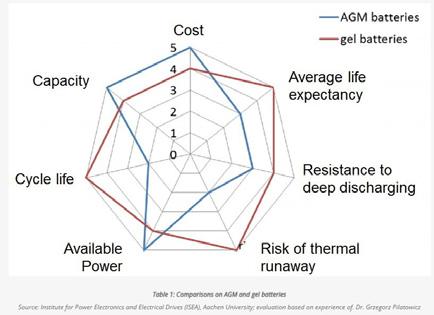
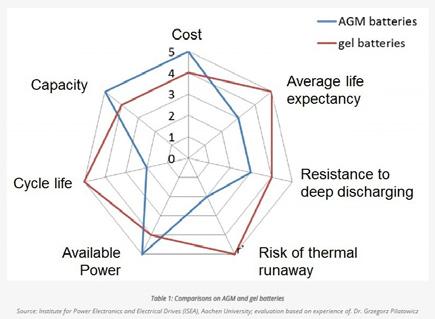

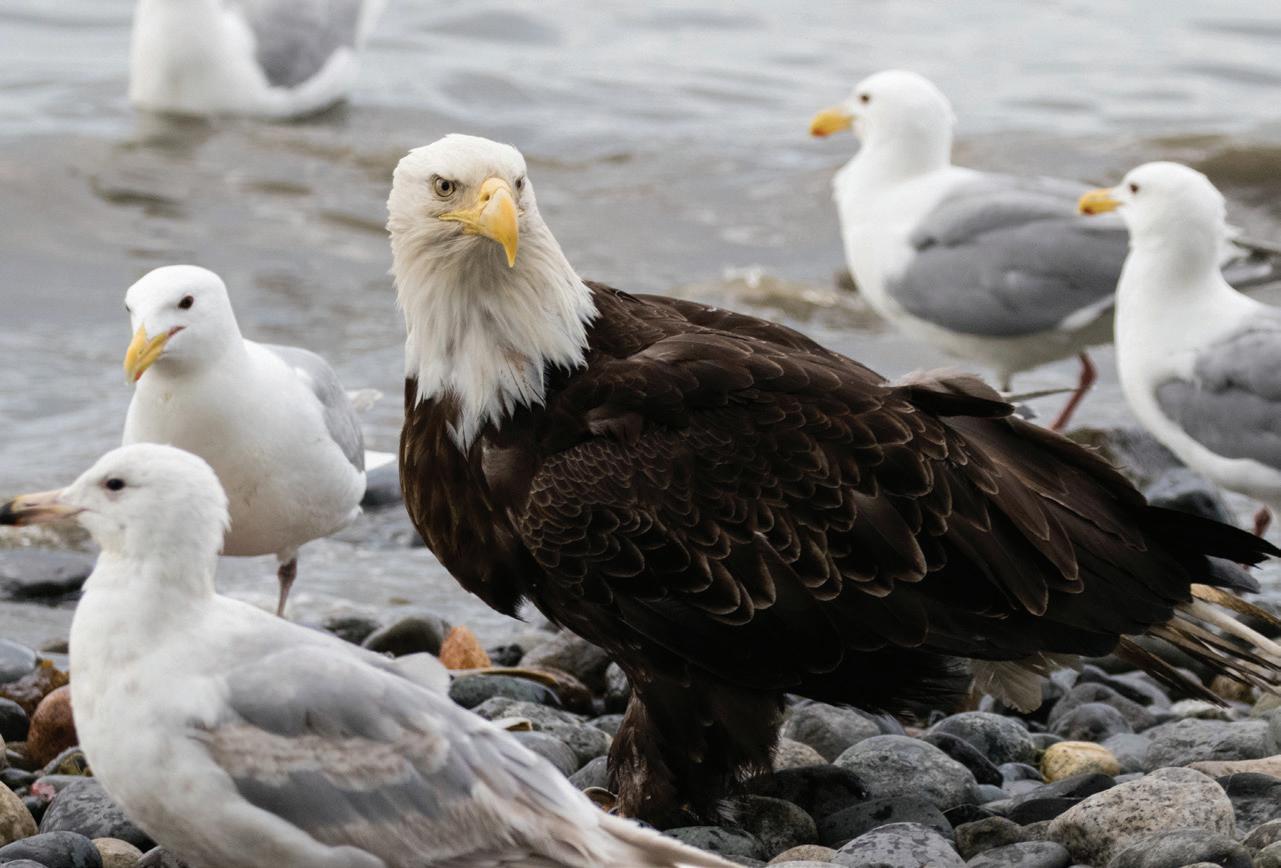
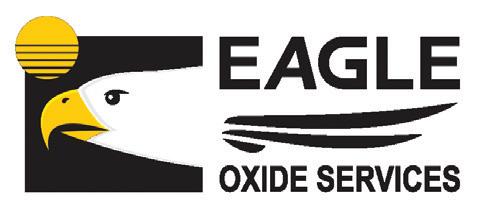

PbLite increases plate production per batch of lead-oxide up to 4%, decreases waste production up to 70%, and increases battery-to-battery uniformity at a net negative cost, says Black Diamond Structures.
PbLite is a novel process additive, based on MOLECULAR REBAR carbon nanotube technology, which acts as a rheology modifier for leadacid battery paste to improve its application to the grid, simplify line operations, decrease waste, and increase plate output, to improve a battery maker’s manufacturing capacity, revenue, and quality at a net negative cost.
PbLite is a tool that can help battery manufacturers improve throughput and increase process capability indexes.
PbLite increases plate production per batch of lead oxide (PbO) by 0.2-4.0%, decreasing waste production >25%, and improving line efficiency to help foremen and plant managers exceed their quotas.
PbLite marks the first in a potential series of MOLECULAR REBAR products targeting process improvements, rather than performance enhancement. Since the first industrial-scale deployments of MOLECULAR REBAR products, line operators routinely told Black Diamond Structures of not just the ease of implementation of our material versus advanced carbons, but the unexpected improvements to production the material had elicited.
For a decade, our commercial team focused on improving dynamic charge acceptance, partial state of charge cycling, and deep discharge resistance, without highlighting process improvement as a key value proposition of the technology because the cost/benefit ratio was imbalanced,” the firm says.
“Now, thanks to process improvements in our own 130 tonne facility and extensive reformulation of our MOLECULAR REBAR product, we have been able to separate process improvement from performance improvement to offer a product which is essentially free to use and capable of generating additional profit for the battery maker.”
The production efficiency increase provided by PbLite is between 0.5% and 3.0%. This is equivalent to producing an additional 25 to 500 automotive plates per 1000 kg of lead oxide (PbO). The increase in production efficiency is achieved through two processes. First, PbLite decreases waste production by reducing the number of plates that need to be discarded due to incomplete paste coverage, out-of-spec weight, or thickness. Most manufacturers have reported a reduction in waste of approximately 25-30%, with some achieving up to 73% less waste compared to reference pastes.
Second, PbLite improves the pastability of the oxide batch by altering its material properties, allowing more plates to be extracted from it before it becomes unusable. The mechanism behind these processes is the ability of MOLECULAR REBAR to retain water and heat, reducing evaporation and extending the paste’s pot life. This results in a more efficient production process and increased
plate output.
Safety is important too. By converting raw, tangled, solid-form carbon nanotubes into purified, de-tangled, liquid-form MOLECULAR REBAR, much of the inherent hazard of working with such material is removed. The chief concern with nanomaterials relates to its inhalation, which in our products is near impossible.
PbLite directly reduces waste (25-73%) and recycling costs by increasing the capture of plates from a batch of lead oxide, improving the efficiency of the Pb-Acid battery building process. Energy costs are reduced over time by decreasing the number of mixer, flash dryer, and curing oven since fewer batches are required to meet a manufacturer’s monthly quota of plates.
In most cases, PbLite pays for itself immediately after pasting in the form of extra plates. The cost of 2-2.5 L of material is paid back to the customer in additional plates within an hour of its introduction to the mixing chamber.
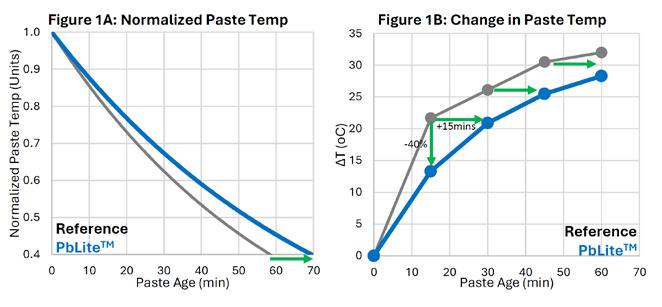
Figure 1A indicates an elongation of PbLite’s heat loss trendline resulting in a 17% increase in duration to reach the same normalized paste temp as reference. Figure 1B shows that PbLite pastes lose around 40% less heat than Reference pastes in the critical first 15-20 mins post-mix when the plate thickness/weights get dialed-in on the production line. An additional 15 min is required for PbLite pastes to lose the same amount of heat as Reference. A warmer paste is a more pastable paste, and cooling delays are valuable to the production team. Extra heat is retained in PbLite pastes because evaporative heat loss has been impacted by the material.








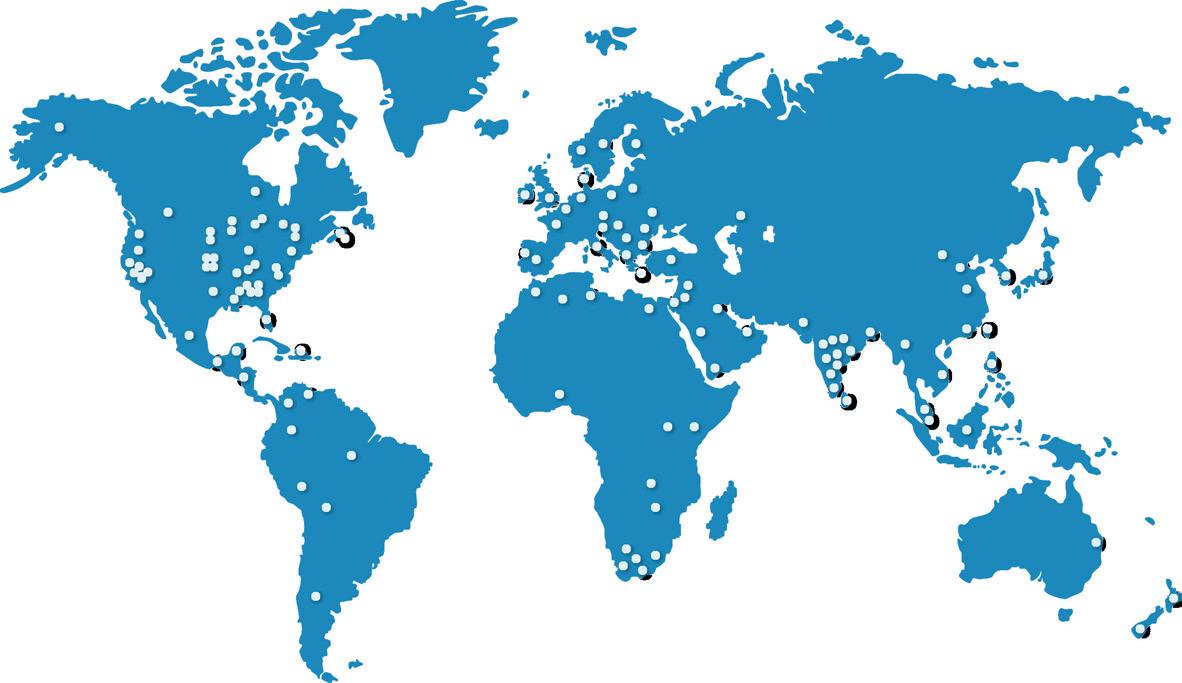



Italian engineer firm CAM last year released FASMELT, adapting and refining an existing technology to lead furnace need.
FASMELT is a no-gas melting pot, with rapid melting time, extremely low dross production, and most of all, roughly 60% lower energy costs by using magnetic induction. This clean system allows immediate production, and no need to maintain temperatures when not producing. It requires roughly 20 minutes liquify lead, ready to be fed to the rolling mill.
Today, the most important mission for this industry is to reduce the environmental impact of the production chain. One of the most difficult things to adapt to this mission is the need to melt lead for various processes. If you consider the cost of controlling CO2 emissions, special waste disposal, and energy consumption, the impact of melting is significant.
The concept of the oven is basically the same as a classic gas or electrical melting oven: It is equipped with an automatic ingot conveyor designed specifically for this application. The ingot is lowered into the melt when the set parameters of bath temperature and level are reached.
FASMELT is a magnetic induction oven, so there is a high frequency generator which heats the center of the melting pot by means of copper coils, generating a magnetic field which quickly melts the lead ingot It reaches the melt temperature of around 400° in just 20 minutes.
The magnetic field created by the induction system is safe for operators because FASMELT has been designed to isolate the magnetic field thanks to a shield. CAM has done exhaustive testing to measure the magnetic field and has values lower than 10 microT, which is the magnetic field threshold for humans.
Molten lead output is done by a classic CAM lead pumping system, with an extraction pump and a joule effect heated pipe regulated by inverter. The molten lead is then sent to the grid production system.
FASMELT is equipped with an automatic system to remove dross based on an extraction system that channels and deposits it into a container for disposal. FASMELT is completely closed, thus has a smaller diameter than a classic melting oven. This means the melt surface contact with oxygen is reduced, and consequently less dross is produced. This means greatly reduced special waste treatment costs.
FASMELT doesn’t only mean lower gas consumption costs – there is also less maintenance. Also, there is no flaking of the refractory material or risk of breaking the crucible.
It is well known that in traditional production, costs are just one aspect of maintenance operations. There is also the issue of production stops that create back-ups and matters regarding operators, etc.
The melt temperature of around 400° for the lead is reached in just 20 minutes

With FASMELT, there is no flame pointing directly on the crucible, or bricks which are sensitive to temperature variations. The crucible is made of the same material as a gas oven and it is insulated with rock wool. With magnetic induction, the heat is distributed uniformly instead of just on one point as with gas heating. So, CAM expects a long life of the crucible. The payback on this system is incredible. Taking an example of a gas cost of €1 per m3. A gas oven would consume an average of 600,000 euro per year compared to about 90,000 for FASMELT at the same production rate. That annual saving of about €500,000 per year means the payback is around six months. This represents only the energy saving.
FASMELT is a game changing system for the entire lead battery industry, because this is the first induction system for this purpose in this industry. This innovation was designed, engineered, and implemented by the company’s R&D team. Economic funding was awarded through Italy’s National Plan to implement The European Union’s 4th industrial revolution.

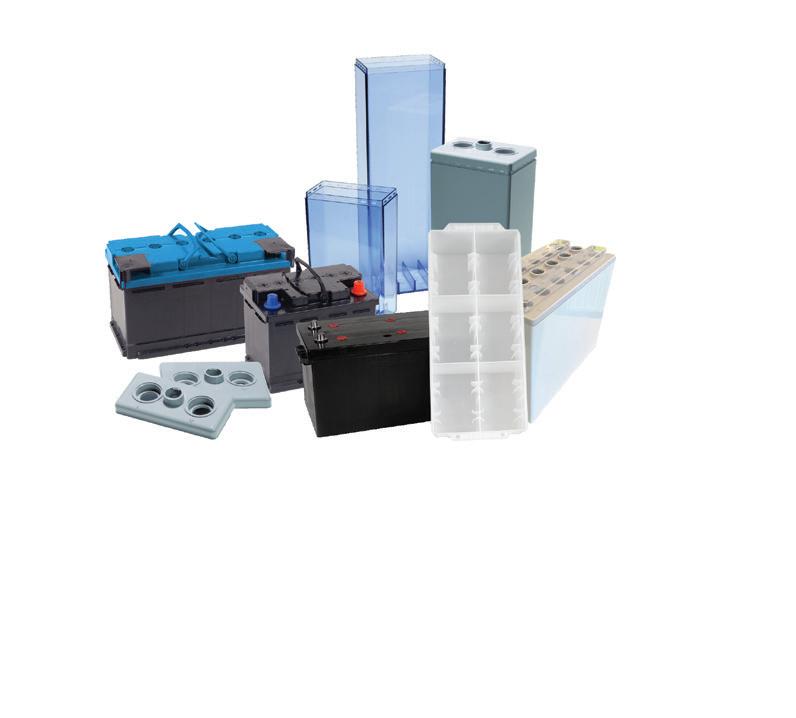


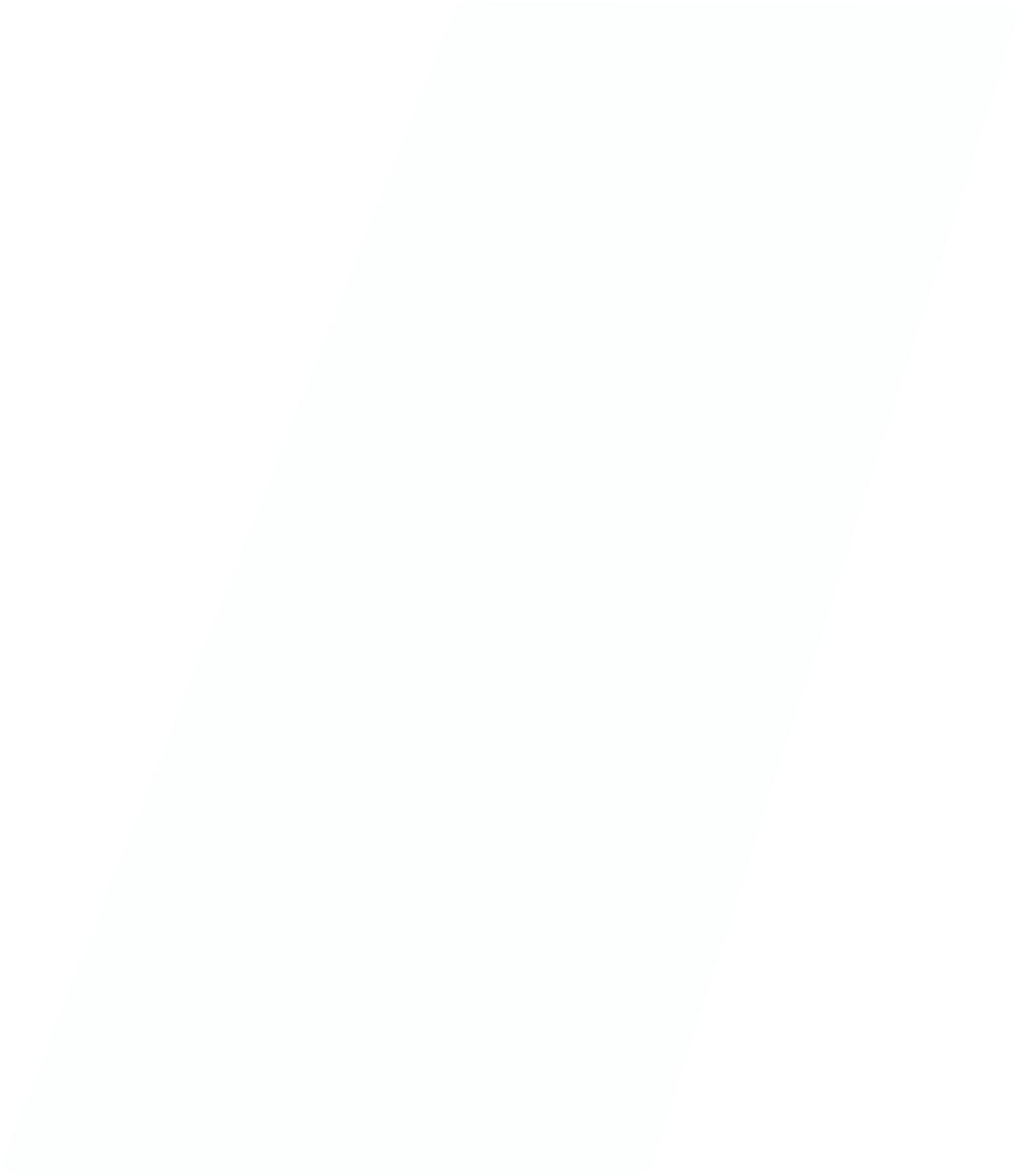

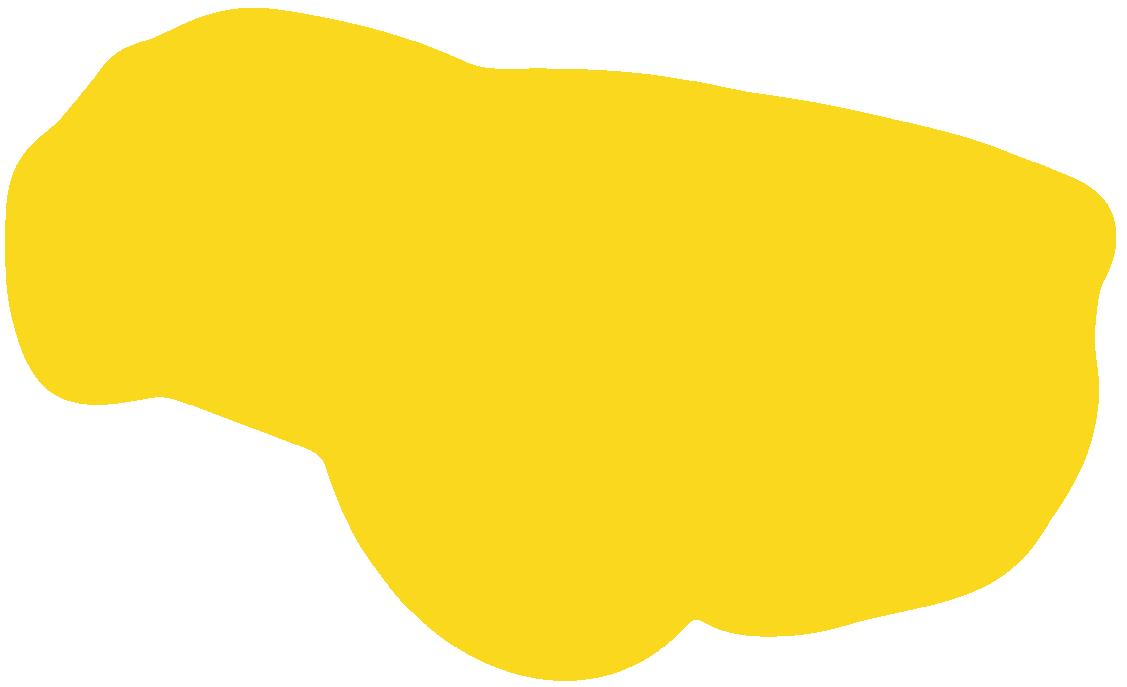
Clarios, the automotive battery giant has come up with an all-in-one package combining the best features of a robust AGM battery and the best in real-time diagnostics for safety-critical applications.
The Clarios Smart AGM is an innovative lead-acid battery designed for real-time cell level diagnostics for preventative replacement and safety-critical applications, supporting all forms of mobility – passenger through commercial vehicles.
Clarios Smart AGM offers firstof-kind integration which measures critical attributes at cell level and processes through diagnostics with connected communications in an AGM type battery. Smart AGM is precision-engineered to enhance diagnostic accuracy on battery health and functionality.
This product identifies potential issues before they occur, enabling preventive replacement before failure. Additionally, it offers emergency power crucial for electric vehicles and autonomous vehicles, contributing to optimized vehicle system performance.
Smart AGM offers OEMs and consumers a choice between lead acid and lithium-ion. OEMs have many critical factors to choose in vehicle design and must be considerate of overall cost. Lithium-Ion technology has embedded electronics for diagnostic capability enabling function safety, but comes at a higher price point and has challenges with recyclability.
“The Clarios Smart AGM will be a game changer for the industry, providing a reliable, safety-critical battery with real-time communications,” said Mark Wallace, Clarios CEO. “It combines the proven reliability, inherent safe chemistry and sustainability of AGM with the realtime intelligence of our Smart technology.
“Also, it will extend our Clarios xEV portfolio, a range of advanced low-voltage batteries specifically designed to maximize EV performance, safety and reliability.”
Smart AGM offers an alternative solution to leverage the existing benefits of lead acid technology while offering similar tech/moni-
toring that lithium-ion offers, and more mature recyclability.
The implementation of Smart AGM was truly a cross-functional effort with company leadership support, including engineering, “Our team went above and beyond the technology boundaries, to revolutionize this innovated lead-acid technology,” the firm says.
Clarios says it is the only battery manufacturer to successfully integrate monitoring at the cell level delivering real-time diagnostics in an AGM format making SMART AGM a true innovation. Notably, the Smart AGM represents a novel concept in the low-voltage battery industry.

“The Clarios Smart AGM will be a game changer for the industry, providing a reliable, safety-critical battery with real-time communications. It combines the proven reliability, inherent safe chemistry and sustainability of AGM with the real-time intelligence of our Smart technology”
— Mark Wallace, CEO

This product identifies potential issues before they occur, enabling preventive replacement before failure. Additionally, it offers emergency power crucial for electric vehicles and autonomous vehicles, contributing to optimized vehicle system performance.
Clarios creates the most advanced battery technologies for virtually every type of vehicle. The firm says: “We are a global leader in advanced energy storage solutions, powering one in three of the world’s vehicles. We produce more than 150 million batteries — one-third of the industry’s output — every year, and we continue to build and expand our capacity to meet our customer’s future demand.
“Clarios is recognized as a global leader in low-voltage systems. The firm plays a pivotal role in driving innovation within the automotive industry.
“By closely collaborating with automakers, the company leverages its prominent position to introduce cutting-edge technologies that support advancements in powertrain technology and vehicle autonomy. Partnering with our customers, Clarios continues designing cost-effective energy storage solutions tailored to meet environmental, safety and electrification requirements, to add value to our customers.”


Fleet charging for EVs using lead batteries has developed a long way in recent years. Advances in technology make these BESS suitable for a wide range of functions.
GS Yuasa’s product is a 1.5MWh battery with a 500KVA power conversion system contained in one 40ft battery container and one 10ft container for balance of system including BMS/EMS, Power Conversion System, and UPS for black start and house loads.
This application is for EV fleet charging using a system consisting of two 922Vdc strings of 384 GS Yuasa Advanced Lead-Nano carbon SLR cells deployed in a 40-foot ISO container providing 1.5MWh storage.
A second 10-foot container houses:
• State of the art BMS/EMS which monitors cell voltages and temperatures, string currents, and manages battery charge/ discharge and equalization profiles,
• EPC PD500 Power Conversion System providing power,
• System modularity enables battery size or required power to scale easily,
• An 15KVA UPS System provisioned for black start operation and for house back-up power. The enabling technology that makes the GS Yuasa BESS effective is the advanced lead-nano carbon SLR battery technology. The SLR battery provides 5,000 cycles to 70% DoD performance and in third party testing has passed 19 macro cycles of the IEC 61427 standard and is a standout for VRLA battery technology.
GS Yuasa says:
• The SLR technology is a game changing technology which provides a platform for VRLA batteries to contribute to the growing energy storage demand in North America.
• The 5000 cycle capability opens the door for VRLA technologies with a pathway to approach the
LCOS (Levelized cost of storage) for energy storage.
• The SLR EV Charging BESS is a definite example of how VRLA batteries can participate in providing solutions to support the grid.
The design features that increase the performance of the SLR product are: the nanocarbon enhanced negative active paste material for higher capacity retention; a proprietary grid design to inhibit grid growth by retaining the grid’s integrity; an increased density of the positive active paste material to increase the number of battery cycles; a proprietary PP-X additive to prevent
premature capacity loss; and, a HT X Alloy to minimize grid corrosion in high heat temperatures.
The SLR battery technology was developed by GS Yuasa Engineering in Japan and is manufactured at GS Yuasa’s main manufacturing campus in Kyoto, Japan.
For the BESS Balance of Plant GYES selected additional parties to support the turkey system design and fabrication. GYES partners with: Greentech Renewables for the system electrical design; Nuvation Energy for the BMS/EMS; EPC Power provides the Power Conversion System; and the containers are fabricated by Module X Solutions.

Achieving 70% DoD with a high temperature long life design
• Made with HT X alloy achieves very low float current.
• Higher density positive plate and additive to prevent PCL
• Optimized grid design for cycle life
• Proprietary additives to maintain compression
• Proprietary additives to control charge current as temperature increases giving high thermal runaway threshold
• Nano carbon additive in negative plate: increases charge efficiency; reduces sulfation, improves capacity retention over life
The combination of these technologies allows SLR batteries to achieve up to 5000 cycles at a 70% depth of discharge, enabling them to compete with Li-ion and other chemistries in battery energy storage systems.
Applying artificial intelligence to battery testing is a new field of endeavour for the lead battery industry — with many positive outcomes expected.
Midtronics, founded in 1984, develops and produces battery management equipment and services for the global automotive industry. It says its “advancements in testing, diagnostic charging, monitoring, and analytics have provided value across the entire battery lifecycle in automotive, heavy truck and motor sport industries”.
Midtronics says the MVT handheld battery tester is powered by MDX-AI, and showcases diagnostic capabilities never thought possible in handheld battery testing. MVT makes battery testing fast while delivering professional accuracy.
With the MVT, Midtronics says one can:
• Accurately diagnose discharged batteries in-vehicle, without having to charge them.
• Get instant test results with no user input on most quick lane testing scenarios.
• Accurately diagnose batteries when the CCA rating can’t be seen.
• Accurately diagnose batteries when faced with vehicle system noise interruptions.
In addition to new diagnostic capabilities, the MVT features: an intuitive user interface, over-the-air data transmission and update-ability and the ability to email test results.
Midtronics says, “MDX-AI uses algorithms and AI machine learning models to enable specific diagnostic features, however it is more than just Artificial Intelligence. That is why when we refer to AI, we mean Applied Innovation. MDX-AI applies not only Artificial Intelligence machine learning but also our 38 years of experience, expertise, and innovation.
“So, for example, the start event diagnostics feature in the MVT. Over the years, we have amassed millions of diagnostic charge records in BMIS. In this data are key parameters, including data about the battery captured during a starter/alternator
test. We used this data to create and feed a machine learning algorithm capable of predicting battery diagnoses using the battery data collected during a start event.”
The MVT handheld battery tester is powered by MDX-AI, and showcases diagnostic capabilities never thought possible in handheld battery testing

How does MDX-AI use Artificial Intelligence?
Depending on the problem feature with MDX-AI, the technology may leverage AI machine learning models to improve speed and accuracy of our diagnostics. For example, in the MVT, when a battery can start the car, but is too discharged to be diagnosed with a handheld tester, Midtronics uses an AI machine learning model which can diagnose the battery’s health by monitoring key parameters during a start event.
Machine Learning
Learn to learn Decision trees / algorithms
Logistic / Linear regression
Clustering & Classification
Battery diagnostics using our experience, expertise, and applied innovations
Leverages a machine learning model fed with millions of battery and system diagnostic records
Uses decision trees / algorithms
Combines above with our experience and expertise to create diagnostic features
Generative AI
Create new content from previous learning
Language mastery across context, sentiment, emotion etc
More autonomous than other technologies
Leverages many Artificial Intel methods and technologies
Wirtz Manufacturing has been involved in lead acid battery manufacturing equipment since 1935 and has supplied grid casting equipment since 1955. Its new Gravity FlowCaster takes this experience to a new level.
While offering the same performance advantage of traditional gravity cast grids, the Gravity FlowCaster delivers a continuous web of grid material in a complete reel-to-reel solution. Each grid is produced with an adjoining frame and is spooled for storage and subsequent downstream processing.
The firm says: “With the Gravity FlowCaster, battery manufacturers can now take full advantage of continuous manufacturing, which brings benefits including, but not limited to, lower scrap rates, higher production speeds, less demanding operations, and overall improved process control—lending itself to total industry sustainability.”
The Wirtz Gravity FlowCaster is also the first continuous grid casting machine capable of handling difficult-to-process alloys such as lead-antimony. With its alloy segregation and wide freezing window, products requiring antimonial grids have been relegated to piece-by-piece and batch manufacturing processes. These processes are labor intensive, place considerable strain on operators, increase lead-in-air emissions and operator exposure, and bottleneck production.
The patented Wirtz Gravity FlowCaster (US Pat. 10,981,218) is based around a continuous rotating mold, whereby half of the mold is comprised of a wheel with an engraved grid cavity and the other half a thin steel belt that is forced into engagement with the wheel surface via multiple temperature-controlled shoes.
Molten lead or lead alloy is delivered to a gate, or runner system, at the top of the mold. The molten material then fills the cavity via gravitational force, and it will subsequently solidify while continuing to pass under the temperature-controlled shoes but while still encapsulated between the wheel and belt.
Both mold halves will eventually disengage and the now solidified web of lead grid may be released from the
mold cavity. Once free, the interconnected grids can be wound on to a spool. Any flashing present on the grid can be addressed with a standard deflash unit common to the industry. Further, the remaining sprues left at the foot frame of the grid can be trimmed at the reeler, where all scrap is recycled immediately back into the original melt furnace.
From a microscopic perspective, the Gravity FlowCaster delivers an end product with grain structures that mirror traditional book mold gravity cast grids.
As with book mold casting, the operator has full control over grain size and type based on alloy, machine temperature, and run speed setpoints. Due to equally distributed undercooling, grain homogeneity is extremely uniform and desirable. Manufactur-
Grain structure micrographs
ers can transition straight from book mold casting to Gravity FlowCasting with little concern.
Because the grids are cast as a single continuous web, battery manufacturers can take full advantage of continuous downstream processing including the use of a steel belt paster. Continuous steel belt pasters inherently surpass all other pasting technologies in terms of processing speed, plate tolerance, lead-in-air emissions, and overall performance.
As with any transition from batch processing to continuous manufacturing, the cost savings become significant — through not just material savings, man-hours, and reduced warranty claims, but through improved operator training, increased employee satisfaction, and overall product throughput.
The below micrographs show grain structure for gravity cast antimony alloy grids in column 1, ConCast antimony alloy grids in column 2, and Gravity FlowCaster antimony alloy grids in column 3. Grain size, type, and homogeneity for gravity cast and Gravity FlowCast grids are strikingly similar, whereas the Wirtz ConCast grids show two very different grain structures across each wire. The micrographs in the top row depict a cross section through the grid wires, while the micrographs in the bottom row show a longitudinal cross section of the grid wires.
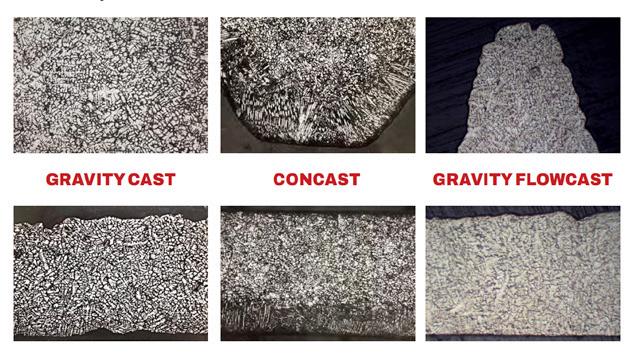
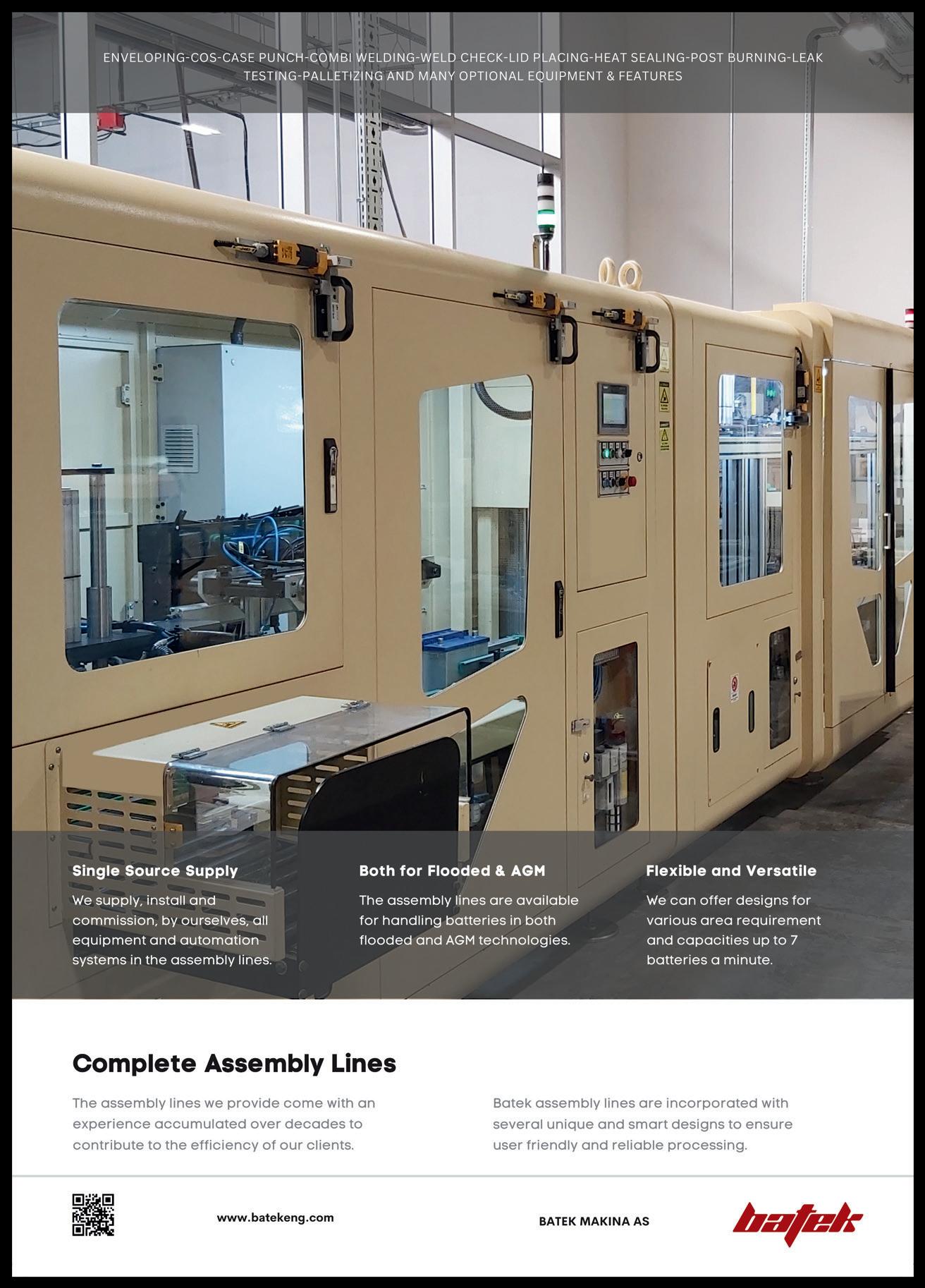
This year’s nominations for the Amplify Award for successful marketing and promotion campaigns attracted a varied and strong set of candidates.
To misquote Henry Ford: “Stopping marketing to save money is like stopping your watch to save time.” Marketing, promotion, advertising has been part of the core business of all successful firms — but getting it right and doing it well is equally vital.
In acknowledgement of this, BCI two years ago set up the Amplify Award. This looks to highlight campaigns by its members which have the most positive impact in advancing the lead battery industry, and which incorporates innovation and design to achieve outstanding results.
The award recognizes a highly effective and top-rated internal or external campaign, program or communication that serves to inform, educate and promote lead battery products, components, services or the industry as a whole on the basis of four key pillars: innovation, sustainability, essentiality and safety.
Campaigns can include elements from all forms of marketing, branding, public relations, corporate social responsibility and education programs, including digital or print collateral, training programs, consumer marketing, awareness campaigns, commercials, websites, social media, point-of-sale materials, tradeshow booths and more.
The goal of the award is to recognize strategic communications designed to address a need and provide a platform to showcase innovative ideas that support the lead
battery industry, particularly campaigns that highlight the key pillars of lead batteries: innovation, sustainability, essentiality and safety.
Last year’s winner was a recognition of the outstanding campaigning that C&D Technologies achieved with its Power of the Plus theme, The previous year the award went to The Doe Run Company This year there were eight applicants for the award — C&D Technologies, Club Assist, Crown Battery, East Penn Manufacturing, FVP Batteries, OPTIMA Batteries, Stryten and Trojan Batteries.
The judging panel awards marks out of 20 for five categories. These were:
Innovation — The campaign demonstrates a high level of uniqueness and creativity;
Clarity — The campaign communicates clearly, is easy to understand and engages the audience;
Results — The campaign achieved its goal with measurable results;
Design/aesthetic — The campaign has visual appeal and highly effective design components;
Value — The campaign elevates and benefits the lead battery industry in some way by raising awareness of key issues, advocating on behalf of the industry or sharing a positive lead battery story.
“Stopping marketing to save money is like stopping your watch to save time” — Henry Ford (well almost)





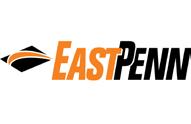
in a world looking for a better future

Trojan’s goal was to convince its target audience to “Say yes to Trojan AES!”. This is what Trojan, a battery industry heavyweight for three generations, had to say.
THAES stands for Advanced Energy Storage and that’s exactly what the new Trojan AES deep-cycle batteries offer — a significant upgrade to standard AGM. Trojan continuously works to develop the latest deep-cycle technologies and Trojan AES is a huge step forward in VRLA technology, including the following benefits:
• Up to 3x the cycle life of standard AGM;
• Performs in harsh temperatures and conditions from -40°F to 160°F (-40°C to 71°C);
• Delivers harmless partial state of charge, again and again;
• Maintenance-free.
employee training, and supply-chain challenges they often face.
Trojan focused on awareness ads (print and digital) in trade publications as well as a large public relations push, which included building relationships with editors, developing an informa-

bylined by Trojan employees, further emphasizing our expertise and thought leadership.
Exhibited at ARA and ISSA shows to demonstrate the new technology.
Expanded our Authorized Dealer and Master Distributor Networks through digital and direct mail recruitment campaigns.
Supported the Trojan sales team and dealers with online training, point-ofsales materials, literature, sell sheets, datasheets, and technical documentation.
Held nine training sessions to educate our worldwide Master Distributors and Authorized Dealers on the new battery and its competitive advantages. One virtual session had over 120 attendees.

Our global target audiences include: industrial equipment rental companies; floorcare professionals; access equipment owners; material handling professionals; golf, utility, and personal transportation vehicles; and solar
Campaign objectives includes: generating awareness and interest from our target market; converting AGM customers to AES; and, engaging our distribution network
The biggest challenge in launching new technology is generating awareness and adoption across all our customers, including end users and distribution channels.
To accomplish this, our strategy was to develop a campaign that directly called out our audience’s specific pain points and explain how Trojan AES would solve their problems.
We took a question-and-answer approach to the campaign messaging — i.e. “Want a battery that lasts up to 3X longer? Yes, with Trojan AES!” And that’s where our tagline was born — “Yes, with Trojan AES!”
We positioned the long-lasting and maintenance-free Trojan AES Battery as a product that can help users address current labor issues, high turnover,
tive media kit, and leveraging editorial opportunities to highlight the effectiveness of Trojan AES in our vertical markets.
To be successful, we had to win over the distribution channels as well as the end users, so we developed communications for each audience (developed personas) and delivered them where they consume content.
We developed a strategic media plan to maximize our ad budget; created and submitted a digital Trojan AES media kit and factsheet to material handling, access equipment, rental, and floorcare media publications and properties; distributed printed copies of the media kit at trade show media rooms; and created a Trojan AES landing page and used it as a link to digital ads and editorials to deliver more detailed information.
Entered and won contests including Rental’s 2023 Editor’s Choice Award and Lift and Access Magazine’s LLEAP Award. Material Handling Product News also nominated us for Product of the Year.
Developed working relationships with editors and placed over eight feature articles, many of which were
Created a website portal for partners to get training, marketing support, and to order POS materials.
Promoted the product’s value props through weekly social media posts.
Generated end-user awareness and interest through print ads and digital campaigns with Rental Magazine, Material Handling Magazine, Sanitary Maintenance Magazine, and digitally with McMurrow Report, Rental eNews providers, and Google Ads.
The campaign exceeded its defined goals in every way. The statistics for April-December 2023:
• Worldwide master distributor and authorized dealer trainings: nine trainings with hundreds of attendees
• Avg email open rate for paid media: 27.8% (well above the industry standard of 19.8%)
• Dealer locator visits: 623 (target was 500)
• New authorized dealers: 175 (target was 150)
• Social media clicks: 38,000
• Trade show leads: 462 (qualified)
• Media meetings: 29
• PR mentions: 115+ (target was 50)
• Web visits: 117,000 (target was 90,000)
• Awards: Rental’s 2023 Editor’s Choice Award, Golf Lift and Access LLEAP Award, Nominated for Material Handling Product News Product of the Year, one of Top five June marketers in “Modern Material Handling’s” AdProbe Study
Two goals, one all-embracing media campaign, so how effective were the strategies C&D Technologies deployed?
The C&D Technologies “Max Change” campaign had two main goals – introduce the Pure Lead MAX (PLM) VRLA batteries to the target audience and generate qualified leads. The overarching focus was on educating data center engineers on the differentiators of the batteries and the problems they solve for customers.
The campaign featured digital elements — landing page, social media, emails, and video series – as
well as print, public relations, and trade show support.
A consistent brand leadership message was created that highlighted how the PLM batteries meet the emerging demands of the market, said C&D. Specifically, the campaign spoke to Data Centre engineers on how the PLM batteries reduce total cost of ownership, support sustainability initiatives, and reduce system footprint.
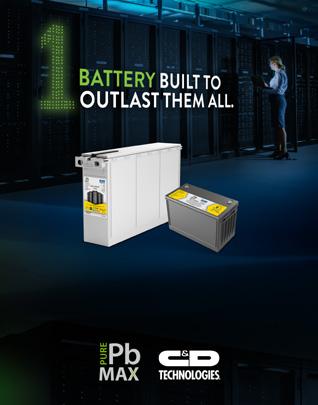

A key element of the campaign was to implement account-based efforts using modified content that addresses the customers’ specific pain points. A laser-focused approach was taken with all digital marketing elements, based on building specific messages that resonate with audiences.
How to get your message across — using a monthly news letter known as the Battery Crank Up.
Club Assist is a Canadian battery distribution organizer offering a range of batteries and energy stories devices for a comprehensive range of applications: automotive, 4x4 & SUV, deep cycle, dual purpose, commercial, marine, lawn and garden, lithium and plant and equipment.
The Battery Crank Up monthly newsletters were devised as part of a marketing strategy to elevate the AAA (American Automobile Association) and Canadian Automobile Association Mobile Battery Service (MBS) message, emphasizing its convenience, value, and quality
The primary focus was to generate monthly seasonal content that
increased organic and paid social media posts and increased Mobile Battery Service blogs. Facing the unique challenge of catering to 20+ different brand standards across two prominent member-driven organizations, Club Assist tackled this obstacle by creating adaptable content.
Navigating the intricacies of AAA and CAA’s multiple business lines added another layer of complexity. The Battery Crank Up successfully rose to this challenge, the club says, by creating content that seamlessly promoted Mobile Battery Service along the different business lines, such as membership and travel, while also incorporating celebrations of holidays and other relevant events.
The AAA and CAA clubs saw remarkable yearover-year growth, experiencing a noteworthy 53% increase with an impressive 90 additional organic posts.

Public perceptions of recyclability are seriously at odds with reality, Crown Battery sought to change all this.
Ask people what the most recycled product in the US is, and most people answer, “an aluminum can.” It’s wrong and so in 2023, Crown Battery’s “Zero Battery Waste” campaign worked to change that.
More than 400 news outlets, nationally syndicated TV, and a leading renewable energy trade magazine covered the campaign. “We educated companies and the public, media, and government about lead batteries’ low waste, safety, sustainability, and cost-effectiveness,” said Crown.
Crown Batteries’ campaign’s goals were:
• Reveal how low-waste practices Crown and the BCI advocate — like recycling, collection, and efficient manufacturing — protect the environment and people’s wallets.
• Combat false narratives and change public perception about the recyclable lead battery industry. Ensure 100% factual correctness.
• Distil complex topics so they were exciting and simple to understand.
• Enhance battery life by educating about best practices for selection and maintenance.
• Showcase Crown’s and recyclable lead’s benefits — including sustainability, corporate responsibility, innovation, safety, job creation, essentiality, and value.
• Help close the battery recycling gap.
• Gain extensive coverage on TV, online, and in newspapers and trade media.
“Our Zero Battery Waste campaign
positions recyclable lead batteries as being the green, high-tech, and low-waste choice. It provides a blueprint for selecting and profitably managing environmentally friendly batteries,” says Crown.

Stryten Energy offers a deep dive into flow battery technology as it expands its product range into new chemistries.
On August 2, 2023, Stryten celebrated the first VRFB manufactured and installed in Georgia. The primary goal of this event was to drive awareness of Stryten’s VRFB, how it supports energy security, and the need to establish domestic manufacturing for clean energy storage solutions.
“Flow battery technology is still relatively unknown, so we needed to educate our audience on the significance of this project,” rhe firm says, “ in particular, the effort needed to capture and deploy increasing amounts of renewable energy.
The opportunity to test flow battery technology in a utility setting is extremely valuable for future R&D and scaling up to megawatt-hour systems and serves as a proof point for this emerging long-duration energy storage (LDES) technology.
“Our target audience for the event were federal and state legislators, influ-
ential state and local decision- makers within the utility industry, including Southern Company, and members of the economic development sector in Georgia, as well as academic, local media and media covering the energy storage industry,” says the firm.
“Our focus was to educate these groups about the growing demand for sustainable energy storage, the various applications for VRFB technology, and the potential economic impact and benefits for local communities.”
System Component Placement
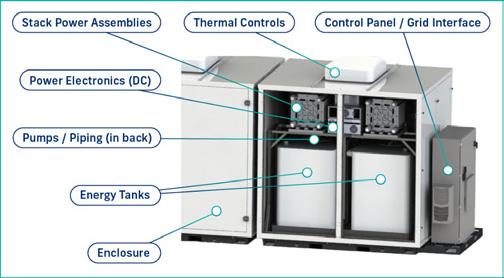

Unleashing the power of branding and demonstrating one’s products at a live event is a complex and challenging task.
OPTIMA Batteries is a leader in the automotive battery category and, traditionally, have always had a static booth display activation at The SEMA Show in Las Vegas, NV, the world’s leading automotive trade show.
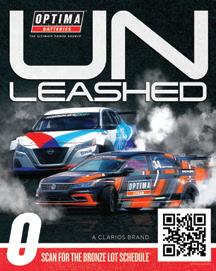
But in 2023, OPTIMA Batteries took its display outside and executed an outdoor activation, called OPTIMA Unleashed, to better engage directly with automotive and powersports enthusiasts. This exciting exhibit presented the power and performance of OPTIMA in drift cars, off-road race trucks, motorcycles, ATVs, street-legal race cars and more.
Utilizing a live event to communicate the scale of OPTIMA’s offering was no easy task. Merchandise, collateral, pro partners and vehicle performance all needed to work seamlessly for its audience to understand that OPTIMA engineered the quit out of their batteries, and that they work over a wide range of applications.
Attendees at OPTIMA Unleashed were greeted with merchandise and apparel that communicated a revitalized brand and were able to engage with brand ambassadors who cemented OPTIMA’s status as an expert in the space.
FVP is a brand of Factory Motor Parts which is a multi-generational, family-owned company that provides premium original equipment name brand automotive parts, serving as a resource for independent service centers, dealerships, fleets and wholesale customers. Factory Motor Parts works across 300 locations in 19 US states.

The goal of this campaign was to build brand awareness around Factory Motor Parts’ FVP brand of batteries. As a partner of the Minnesota Vikings, the US American football team and the NHRA (National Hot Rod Association), the firm said it often got the question, “what is FVP”?
“With thousands of installers carrying FVP batteries throughout the US, we wanted all Vikings and NHRA fans to understand FVP was a leader in automotive batteries,” says the firm.
We created two versions of a TV commercial featuring a Vikings ending and FVP ending. For the Vikings version, we purchased ad space during MN Vikings games to air the commercial
East Penn’s Power2Recycle campaign tackled both the misnomers of recyclability but also lead’s poor perception by the public. It was good to tell a positive story.
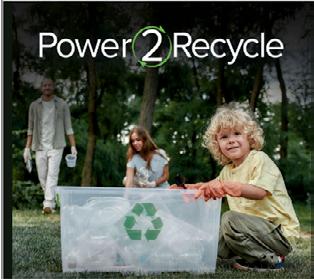
East Penn’s Power2Recycle campaign was in response to the severity of the public’s perception that the lead battery manufacturing process is more harmful than helpful to the environment.
To enhance public perception, East Penn’s answer was to execute a campaign that put the audience in the best position to support sustainable products by achieving the following:
• Build a compelling message that
connects to its audience
• Create a website to help tell this story
• Reach over one million people with this message across various platforms
• Garner an impression frequency rate of over three times per person Promoting this campaign would help motivate the industry’s consumers to be more proactive toward contributing to a circular economy
by making them feel empowered to make sustainable choices. The goal was also to help attract new people to work in the industry by giving the public a better understanding of how it contributes to the environmental greater good.
The Power2Recycle campaign focused on messaging for three stakeholder groups: the public, the industry’s customers, and East Penn employees.
Each year, AABC Europe brings together a global audience of battery technologists and their key suppliers for a must-attend week of development trends, breakthrough technologies and predictions of the market for years to come.
It’s a city where the past and future exist side by side, Strasbourg welcomed, for the third time, the 2024 AABC Europe conference — bringing together a global audience of battery technologists and their key suppliers to showcase development trends, technologies and predictions of the market to come.
Strasbourg pulls off the feat of being successfully straddled between a medieval past and a progressive future — a fitting metaphor as 1,300 delegates descended on the city’s convention centre to show their commitment to invest in vehicle electrification and eMobility.
The conference — in its 14th year
The Palais de la Musique et des Congrès de Strasbourg (Strasbourg Convention Centre) is a cutting-edge building at the forefront of technological, architectural and environmental innovation. It has three auditoriums, several meeting rooms and 10,000 sqm of modular event space.

— has always excelled in propelling forward this momentum, presenting unparalleled coverage of the research and development that helps drive outcomes and supports the next generation of electric vehicle batteries.
Whether targeting the entire conference community of battery technologists, a topic-specific community, a specific individual, or high-level decision makers, the conference organisers presented a variety of methods to access delegates.
This year’s convention, held over three days, offered 12 programmes Advanced Automotive Battery Conference | Strasbourg, France • May 13-16, 2024

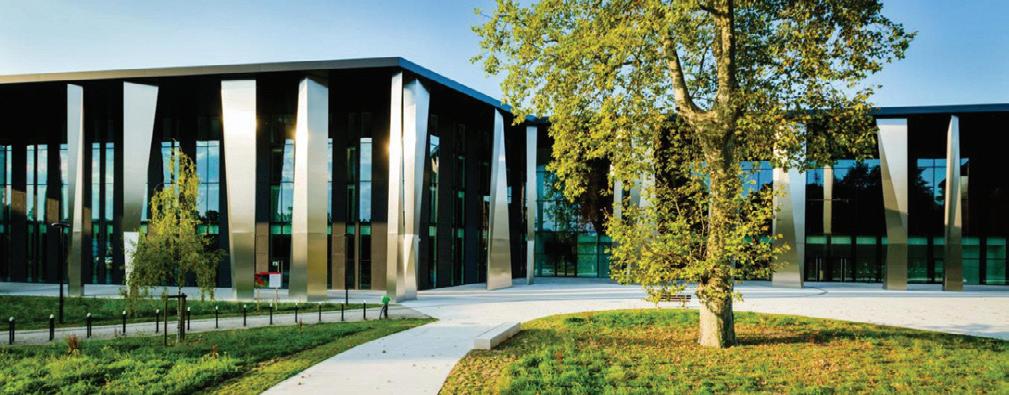
including battery recycling, chemistry, grid-scale energy storage and high performance lithium battery.
The output from the first day sessions has been terrific,” one delegate told Batteries International. “I attended a fantastic talk by Dragoljub Vrankovic from Daimler Truck presenting on electric trucks and how they could be the future backbone of the transport industry. Speculative? True, but also highlighting a great market opportunity.
Another well attended session was by Tim Hotz from the Roland Berger Consultancy talking about the energy storage market expansion and how sodium ion batteries
An annual highlight of AABC is their encouragement of attendees to gain further exposure by presenting their work in poster sessions. It’s an effective way for delegates to discuss their research and to collaborate with interested attendees and speakers.
This year saw a record 80 posters displayed with a common theme being the safety of LFP and understanding why thermal runaway happens — a complex but crucial issue that dominated other parts of the conference.
As ever the exhibition has proved to be a real draw for delegates with the great and the good of suppliers, consultants and product developers serving Europe’s automotive battery industry highlighting services and skills.
Maccor, the international battery and cell testing company — incidentally an area of business that was well represented on the exhibition floor — is the longest-standing exhibitor at AABC and as such gets first dibs on the placement of their exhibition stand — right across the entrance to the vast exhibitor hall.
Mike Sandoval, VP of business development said the footfall had continued to be great. He said business made at the conference was going to be slow burn. “You’ve got to start somewhere,” he said. “We have a six month sales cycle from lead to purchase order and we will do some business here but also for me it’s an opportunity to catch up with old, long-time friends and to make a lot of

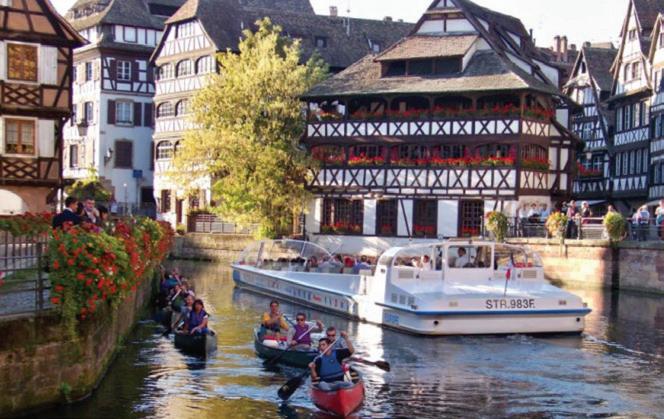
new ones too.”
And any critical feedback on the conference?
Batteries International only heard one and that was to do with the content. “There’s too much of it,” one delegate told us. “I was stuck on several occasions between choosing to attend conflicting sessions. The organizers have given the option of us seeing the slide decks and live streams but being in the hall and talking with the others after the talks is part of the package.”
Too much content? From a conference perspective, we couldn’t help thinking there were worse problems to be had.

AABC Europe will return to Mainz, Germany from June 23-26, 2025
AABC US will be held on December 10-12, 2024, Las Vegas, Nevada, USA


The Battery Show, Europe | Stuttgart, Germany • June 16-18, 2024
The Battery Show, which first saw the light of day in California in 2010, has gone from strength to strength. Next year, the US offering is moving to a yet larger venue in Detroit. Across the pond, the European version, launched in 2017, has rapidly become a huge must-attend event. This year’s exhibition was no exception. Shona Sibary reports from Stuttgart.

STUTTGART: THE PLACE TO BE …
Messe Stuttgart is minutes away from some of Germany’s leading production, R&D and technical centres including Porsche, Audi, Bosch and EnBW Energie, and is in the same town as Mercedes’ largest production facility and technical centre. In addition, the venue is just 15 minutes away from Stuttgart Airport, making it easily accessible from Europe, Asia and North America

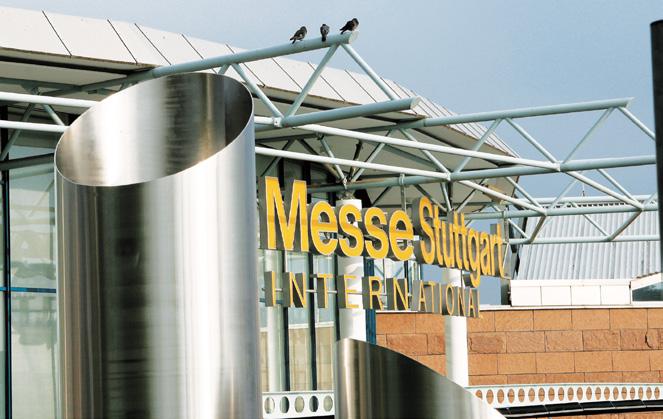
The eyes of Europe were firmly fixed on Germany in June as hordes of people descended on the streets of Stuttgart with rallying cries and readiness for an event not to be missed.
But that’s enough about the UEFA Europa champions league.
Because it wasn’t just thousands of football fans flooding to Bavaria with a game plan and promises to keep their eyes on the ball (okay, I’m going to stop with the football analogies now).
This week also saw The Battery Show Europe 2024 kick-off (last one!) with 961 exhibitors, along with thought-leaders and decision-makers exploring the latest products, developments and solutions at one of the largest trade fairs in Europe.
Last year, The Battery Show Europe, co-located with The Electric & Hybrid Vehicle Technology Expo to showcase innovations in electric vehicle battery development and powertrain vehicle technology over the course of the three-day event.
Stuttgart, known as ‘The Cradle of the Automobile’, is hosting this, the fifth annual European convention, as global EV sales demand are projected to grow over 27% in 2024.
“Western Europe is expected to account for 17.2% of global market share in 2024 with anticipated sales of 2.1 million this year,” said Rob Shelton, event director, Battery Show Europe.
“Preparing to maintain European position as global leaders in EV will fuel conversations and create the platform to facilitate education and content surrounding these topics and we anticipate key global discussions to set the stage for the next few years to come.”
Held across five gargantuan halls — each offering 10,500 m² of space
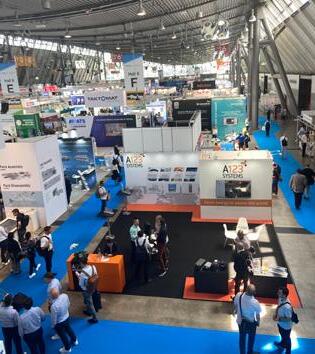
— in the Messe Stuttgart convention centre 12km south of the city, this has always been a crucial conference for industry professionals to find all their supply chain contacts in one place and to gain new ideas for increased battery efficiencies and reduced manufacturing costs.
This year some 19,000 attendees came from leading manufacturers, technology developers, purchasers and experts from Asia, North America and Europe. Topics at the co-located conference covered areas such as policy and regulations; sustainable production; battery safety; recycling; next generation materials; EV infrastructure; and stationary energy storage.
One delegate told Batteries International that they thought the event had gone ‘from strength to strength’. Another said they had attended some fascinating talks on the future outlook of the battery market with contributions from Volvo Group and JLR and that ‘it was great to be back’.
Batteries International spoke to Bob Galyen, lithium and lead battery veteran, who is chairman of The Battery Show in Europe as well as in Detroit, US in October.
“The growth in both these shows over a decade and more has been outstanding,” he said. “It shows the vibrant health of the industry in general and the huge demand we’re seeing for products that can help push forward the energy transition and our road to net zero.”
One of the latest trends in the industry, as evidenced by discussions with many of the exhibitors, has been the

rise of new products and services. This has led to a debate on the sometimes troubled issue of outsourcing versus manufacturing in-house for the large industry players.
The new trend is clearly that the lithium battery business is now of a scale that outsourcing has more attractions than before and a new generation of services are emerging.
One such firm is BatteryEnergyBack, a recent start-up, which has, among other things, a business value proposition that it can accept spent lithium batteries from recycling firms and then discharge them — a process that is sometimes dangerous but absolutely necessary — before shipping the batteries back to the recycler.
These can then be turned into black mass for extraction of the more valuable metals in the battery such as cobalt, manganese and nickel.
Another firm looking at this business approach is US testing and R&D firm Arbin.
Stephen Parker, VP for global sales said: “We’ve been researching the idea of providing lithium battery formation as a service — battery OEMs finish the complex manufacturing needs of making the cells, pouches and packs and we then use our expertise with charging algorithms to ensure they are ready to go.”
Certainly, the whole auto-manufacturing industry has come a huge way from the early 2010s. Then a General Motors representative — co-incidentally at an earlier iteration of the Battery Show in Novi, Michigan — told Batteries International that GM for almost the first time in its history
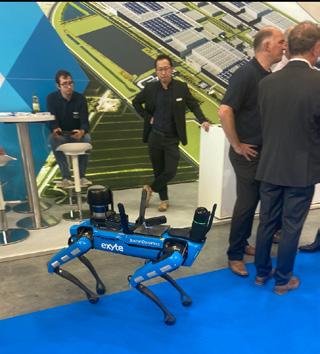
was moving away from manufacturing everything within its car and was starting to use external suppliers.
Also, causing a bit of a commotion on the Exyte stand, was a dog. Not the furry kind, but a mobile four-legged robot called “Rexyte” by employees.
As part of the company’s mission to explore new ways of digitilization, the robo dog, designed by Boston Dynamics, uses AI technology to capture and map out the firm’s construction sites in real-time.
“Having these detailed visualizations of a construction site allows us to closely monitor progress and make informed decisions,” says Martin Wenz, technology manager at Exyte.
“Equipping the robot with a laser scanner helps to early detect potential clashes between the design and the structure and avoiding rework.”
Robots are set to become a more usual sight on Exyte project sites.
“There will be more technological tools on-site,” Wenz predicts. This will range from exoskeletons, with motorized joints to enhance the strength and protection of workers, to autonomous construction vehicles such as diggers.
It can even include robots that transport materials, build, plaster and paint walls. “Robots will, in the not-so-distant future, take over the more menial repetitive tasks on a construction site and free up the human labor force to focus on the more challenging parts of their work.” Fascinating stuff. But when I told him to “sit” he just stared at me, so perhaps there’s still a way to go?
The Battery Show, Europe will return to Stuttgart on June 3-5, 2025

International Congress for Battery Recycling ICBR
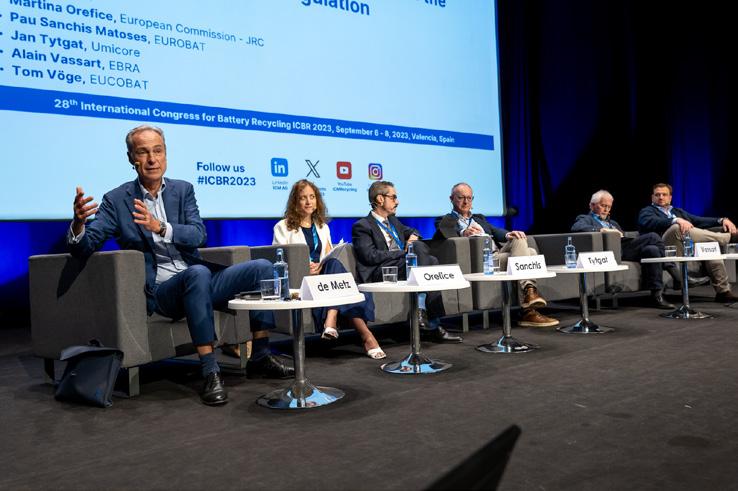
Congress Tuesday to Thursday
ICBR 2024 is the annual meeting point and international platform bringing together the key players from the entire Battery Recycling Industry value chain on a global basis. For 29 consecutive years, ICBR has gathered together this international community of experts and decision makers to exchange and discuss the issues the industry faces and to propose solutions. This year in Basel expect to meet the leading battery recyclers and manufacturers, collection organisations, OEMs, policymakers, materials and service providers, companies specialising in refurbishing, remanufacturing, battery safety and many more, from every continent.
Don't miss out on the opportunity to learn and actively participate at ICBR 2024!
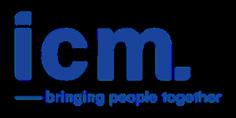
Four exhibitions. 19 halls. 3000 exhibitors. 110,000 attendees. Not bad statistics for any conference centre. But the jewel in the crown for the energy storage industry was the ees Europe exhibition which hosted a mighty assembly of the great and the good in the business.
Anyone and everybody in the battery and energy storage world knew there was just one place to be in June and that was walking the gargantuan halls of Messe Munchen for the smarter E Europe convention — the Goliath of all conferences.
Billing itself as Europe’s largest and most international exhibition for batteries and energy storage, the goal of The smarter E Europe is “accelerating integrated energy solutions,” and as the largest alliance of exhibitions for the energy industry it certainly packed a punch.
Better still, you get four for the price of one. Bringing together Intersolar Europe, ees Europe, Power2Drive Europe and EM Power Europe the aim is to create a future-orientated energy world by shining a spotlight on renewable energies, decentralization and digitalization as well as cross-industry solutions from the electricity, heat and transport sectors for a sustainable 24/7 energy supply. It certainly delivered all this and much more, including several blisters on feet — you definitely need a pair of comfortable trainers if you’re going to get around all 19 exhibition halls over the three days.
With 3,048 exhibitors showcasing their products and solutions across 206,000 square meters it felt, at times, a bit in danger of biting off more than you could chew. Maps were useful. So was the Bratwurst stand outside which also, helpfully served up beer. Well, when in Germany…
“I’ve attended ees in Munich in all its iterations over the years,” one exhibitor told Batteries International. “And I have to say the mood here is a strange one. The sheer size of the place, the number of exhibitors attending, the footfall are all positive. Some of the technologies on display from iron flow batteries to solid state wannabe firms shows that this is an

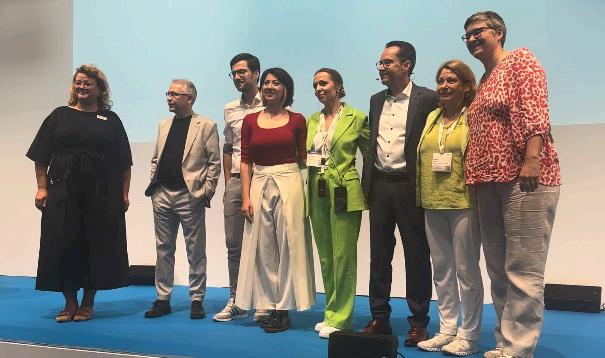
industry hoping to take great strides ahead.
“Yet there’s also a feeling of uncertainty when talking to people here. The elephant in the room is China — none of us quite know what’s going to happen here. Will the EU be trying to erect a tariff wall against Chinese exports? And if they don’t will Europe be flooded with better-priced batteries and battery powered vehicles?”
Certainly, Chinese firms were present in force with impressive stands
dotted around the halls. CATL, now the world’s largest lithium cell manufacturer, had a huge presence. As did China’s highly successful battery maker and EV maker, BYD. Both had extremely busy exhibitor spaces with potential customers and competition eager to know more.
Some of the grand names in the automotive industry were exhibiting too. They ranged from the old established firms such as Rolls Royce to the newest (and perhaps loudest) kid on

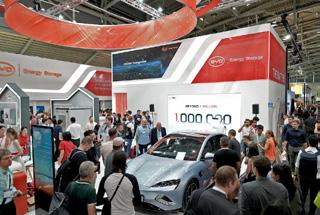



the block being Tesla, which also had a wide range of energy storage solutions for the home.
This half-eerie sense that things could suddenly change — and to most people’s disadvantage — was not confined to worries over the strength of China’s battery and EV industries.
With the shift in the composition of the European Parliament and Europe’s political centre moving firmly to the right, there were real worries that the timetable for the energy transition to net zero was going to be put back.
Given that the hopes of many in the halls were underpinned by the need for greater deployment of renewables and their concomitant, energy storage, it was hard not to agree with them.
But one exhibitor said that he was unconcerned by this. “Yes, it’s a little like the situation here two years ago after the Ukraine invasion. Then there was a feeling of elation that the need for reliable sources of renewable energy would be needed in scale. Against that there was the sentiment that Europe’s energy pipeline could be pulled by Russia simply turning off its gas supplies completely and we’d all be left in the dark.
“Then if you remember we were pricing energy no longer in how many therms of gas were being piped in but how much per kWh was going to be the cost of some of the ambitious projects being talked about,
“For myself, I believe the energy transition is unstoppable, exhibitions like this can only get bigger and more important. The only issue is one of timing.”
The importance of energy storage was something very much at the forefront of the ees Europe offering with their exhibition and number of exhibitors having grown significantly from last year.
On around 47,000 square meters across five exhibition halls more than 760 exhibitors presented their wide range of products and solutions — from commercial and residential storage systems and innovative battery technologies to mobile storage systems and artificial intelligence for battery systems. In total, 1,090 energy storage solution suppliers took part.
Florian Mayr, committee chairman
of the ees Europe Conference, calls these last years the “energy storage decade”.
Taking Germany as an example, there are around 19.3 million residential buildings. And more than half of these will need to be renovated and equipped with photovoltaics over the next 20 years. This will also play a central role in solar expansion throughout Europe with energy storage systems revolutionizing our energy supply.
For the last decade, ees Europe, has brought together key players in the battery and energy storage industries and this year, at Messe Munchen, they celebrated this milestone with a special 10th birthday bash.
At 5pm on the first day of the conference, corks started popping and delegates cheered as their team took to the stage to celebrate ten years of advancing renewable energy storage systems.
“It turns out that, like strawberries and cream, we cannot imagine solar without storage,” said David Wedepohl, MD international affairs, Bundesverband Solarwirtschaft BSW, in a huge quote that flashed up on the screen for everybody to see.
‘In fact, 80 percent of all new residential systems in Germany are now being installed with battery storage. But where do you showcase all the technologies and opportunities that come with storage? And who could have foreseen this development a decade earlier? The Intersolar Europe organizers, as it turns out, who introduced the energy storage exhibition ees Europe right in time!”
Also beamed on to the screen behind the speeches, were drawings by cartoonist, Michael Hüter, who sketched, in real time and from his own perspective, what he was hearing. It made for a fun and unusual visual which everyone seemed to enjoy.
But perhaps the highlight of the ees birthday bash was the high energy, eight piece Hamburg band — Men in Blech — who describe themselves as the most successful mobile band in Germany and the only band in the world whose musicians not only play but also dance at the same time.
It felt like a fitting party for a company who continue to set the benchmark in storage technology.
www.ees-events.com
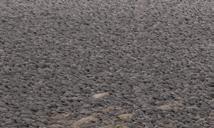


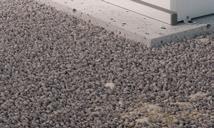
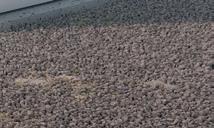

■ AUGUST 27–29, 2024, SÃO PAULO, BRAZIL www.ees-southamerica.com
■ SEPTEMBER 3–5, 2024, MEXICO CITY, MEXICO www.intersolar.mx



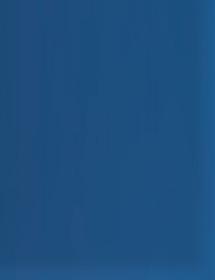
■ FEBRUARY 12–14, 2025, GANDHINAGAR, INDIA www.ees-india.in
■ APRIL 7–9, 2025, DUBAI, UAE www.intersolar.ae
■ MAY 7–9, 2025, MUNICH, GERMANY www.ees-europe.com





BCI Convention and Power Mart | Fort Lauderdale, USA • April 21-24, 2024
It all started in January 1924, when a small group of manufacturers met in Chicago to discuss the rapidly changing lead battery landscape. A whole century later, the Battery Council International hosted one heck of a conference — and party — to commemorate. Shona Sibary reports from Florida.

As a balmy evening sun set over Fort Lauderdale, the 100th BCI Convention’s gala party was in full swing.
It was Tuesday night, with one just morning left of the conference to go, and all everybody could talk about was what a resounding success this year’s special centennial meet-up had been.
“I thought the first BCI conference in San Diego couldn’t be beaten,” one delegate mused. “But this one has really set the bar.”
It wasn’t hard to see why. In his opening statement the day before Hal Hawk had revealed that the gala reception had gone ‘a tad’ over budget.
“We’ve been planning this very special occasion for three years and we went a little bit over,” he said. “Phone calls were made. I didn’t threaten purgatory or anything like that, but people from the Centennial Leadership Circle contributed. We raised $670,000 by passing the hat around to help pay for the party.”
Stretched along the ocean front terrace of the Marriot Fort Lauderdale Harbor Beach Resort & Spa, friends and colleagues relaxed and let their
hair down to the iconic tunes of 90’s rock band, the Gin Blossoms, who have sold over 10 million records and remain one of the most in-demand live artists from the 1990s.
Live food stations serving barbecued Argentinian meats, Paella and seafood were interspersed with fully stocked bars churning out cocktails – a particular favourite we discovered (for research purposes only), were the coconut Mojitos.
In fact, we were first introduced to these at the pre-conference opening reception on the Sunday night, held in the hotel’s Ocean Ballroom.
Sponsored by BCI supplier members, delegates were treated to cocktails, canapes and tacos as they reunited for the 124th annual convention.
Particularly impressive was The Walk of Memories installation which displayed the rich history of BCI and the industry’s amazing story told over a 100 year timeline. Delegates were also given a historical hard-backed book as a takeaway commemoration of this significant event.
The Sunday before the conference
is traditionally set aside for the annual BCI the golf tournament and this year it wasn’t just the mercury levels causing the temperature to rise as die-hard battery industry golfers took to one of Florida’s most picturesque courses.
The tournament winning team were Mitchell Faulk, AhlstromGlobal, Richard Glassburn, Bulldog Battery Corp, Clint Pugh, KWPlastics and Mike Romeo, Wirtz.
But, of course, it wasn’t all about golf and partying. As 800 delegates –a record number – came together for this once in a century BCI celebration, it was at the forefront of everybody’s minds that one hundred years ago, 25 firms did the same thing, meeting for the first time at a hotel in Niagara Falls, to make a pledge to lobby government and help electrical and battery firms achieve some sort of standardization across the US.
Today, there was a powerful, over-arching feeling amongst everyone there to tribute these industry forefathers while, at the same time, looking ahead to an exciting future for the lead battery industry.
In his opening speech to delegates, president and CEO of East Penn, Chris Pruitt echoed this, saying: “This year will be especially memorable. Not just as a reflection of our successes but also the lessons that teach us to keep moving forward.”
And kicking off the welcome statements, Hammond CEO, Terry Murphy said: “There’s a renaissance for the lead battery industry. We’re on the cusp of something really big. BCI is well positioned for next 100 years and we look forward to the journey!”
Roger Miksad, head of BCI, picked up the baton, saying: “We’ve been planning this very special occasion for three years to mark a century of advocacy and community in this industry. Standing here today is one of the most fabulous feelings in the world.”
By the end of a momentous four days at the 124th BCI convention, there wasn’t one delegate who could disagree.














5th EV Charging Infrastructure
Summit North America
July 15 – 17
Chicago, USA
Organized by the Smart Grid Observer, the Summit convenes top industry experts and utility professionals to examine how EV adoption rates will impact the network, and what investments are needed to ensure grid stability and benefit.
Case studies of current utility programs and deployment will be discusses with an eye toward refining strategies, identifying technologies, and implementing business models that will ensure widespread EV adoption is optimised for all parties involved.
Contact Smart Grid Observer
Daniel Coran, Editor E: dcoran@smartgridobserver.com www.smartgridobserver.com/EV-SummitChicago/
Plugvolt Battery Seminar
July 16 – 18
San Jose, California, USA
Conference fostering joint development efforts to advance energy storage solutions
Key Event Highlights:
• Entire day of in-depth technical tutorials on solid-state batteries, nextgen anodes and cathodes, battery
diagnostics, failure modes and best design practices for cell engineering, securing North American supply chain for gigafactories, etc.
• Latest industry updates on use of energy storage systems in automotive applications by subject matter experts from major OEMs, Tier 1 system developers and battery makers
• Latest industry updates on use of energy storage systems in large-scale stationary grid/utility storage applications by subject matter experts from major Utility companies, Tier 1 system developers and providers
• Poster presentations
• Complimentary meals and refreshments
• Plenty of industry networking opportunities
• An evening cocktails reception hosted by Exponent
In an era of radically-accelerating change, Exponent is the only premium engineering and scientific consulting firm with the depth and breadth of expertise to solve your most profoundly unique, unprecedented, and urgent challenges.
Event attendees will get an exclusive opportunity to ask questions to their resident battery experts, and enjoy some light appetizers and beverages while networking with industry peers.
Contact Plugvolt www.batteryseminars.com
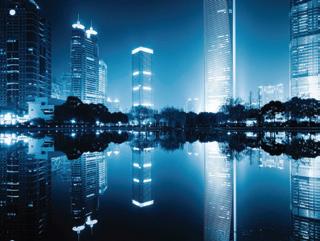
Shanghai, China
CNIBF Battery Exhibition
August 2 – 4
Shanghai, China
In order to promote the innovative development of the power battery industry and the exchange and cooperation between the power battery industry chain, the 16th Shanghai International Battery Industry Exhibition in 2024 will be held in Shanghai New International Expo Center on August 2 – 4, 2024 to build a platform for the cooperation and exchange of the whole industrial chain of north-south power batteries.
The show area is expected to reach 30,000 square meters, while more than 600 exhibitors from the whole industry chain will show their latest products and technology at the scene. Furthermore, over 100 visitor groups and 35,000 people are going to visit the site with a purpose to purchase or communicate, making sense to promoting industrial innovation and development.
Contact
Zhenwei Exhibition Group www.cnibf.net
Oslo Battery Days Conference
August 19 – 21
Oslo, Norway
The 6th OBD Battery Conference will meet to discuss and provide a platform for technological innovations and business opportunities with the latest updates in that field from Norway and abroad.
For the 2024 event we will offer a spectacular Monday-evening on at the beautiful Akershus Fortress and for the second evening we plan for a Fjordcruise on the fully electric vessel “ Legacy of the Fjords ”.
Contact
Schive AS and Shmuel De-Leon Energy Ltd www.oslobatterydays.com/
August 27–29
São Paulo, Brazil
With three parallel energy exhibitions, The smarter E South America is LATAM’s innovation hub for the new energy world. It takes a comprehensive approach to the topics of the energy system transformation by presenting cross-sector energy solutions and technologies.
The smarter E South America creates opportunities to address all key areas along the value chain. Focusing on the generation, storage, distribution and use of energy and the ways in which these aspects interact and can be intelligently combined, The smarter E South America brings together international stakeholders of the energy future from across the world’s most influential markets.
Contact Solar Promotion www.ees-southamerica.com/home
ees Mexico
September 3-5
Mexico City, Mexico.
ees goes Mexico — this year with a special exhibition and a dedicated ees Pavilion at Centro Citibanamex during Intersolar Mexico 2024, taking place from September 3-5 in Mexico City!
The ees Mexico special exhibition offers various exhibit opportunities tailored for every budget. Design your own stand or book a fully equipped stand and pavilion pod which allows your company an easy participation without any organizational efforts. Build your network in Mexio and concentrate on your business, while we facilitate the rest.
Contact Solar Promotion https://www.intersolar.mx/home
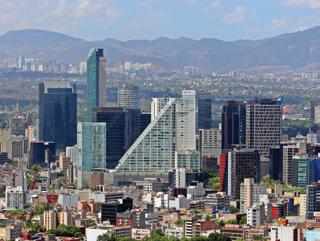
International Congress for Battery Recycling — ICBR
September 10 – 12
Basel, Switzerland
ICBR 2024 is the international platform for reviewing the challenges faced by the Battery Recycling Industry on a global basis.
For 29 consecutive years, ICBR has brought together the international community of experts and decision makers of the entire Battery Recycling value chain, including battery recyclers and manufacturers, collection organizations, OEM’s, policymakers, materials and services providers and many more.
Contact ICM AG www.events.icm.ch/event
Battery Show
North America
October 7 – 10
Detroit, Michigan, USA
Discover the Latest Tools, Trends, and Technologies at The Battery Show and EV Tech Expo.

Connecting expert industry leaders, top battery manufacturers and inquiring buyers all under one roof! Get ready to learn about and explore the latest advancements in battery and electric vehicle technology in 2024.
Contact Informa Markets www.thebatteryshow.com/en/home.html

September 16 – 19
Milan, Italy
ELBC is the major lead battery innovation conference, bringing together global lead battery experts, researchers, companies and suppliers. The conference’s technical program showcases the latest updates on technical improvements and electrochemical research on topical areas from energy storage to automotive lead batteries.
Now in its 38th year, ELBC is expected to attract over 1000 attendees interested in lead battery innovation.
Contact International Lead Association and the Consortium for Battery Innovation E: elbcexpo@ila-lead.org www.elbcexpo.org
Batteries Event
October 15 – 17 • Lyon, France
The Batteries Event will cover all aspects of the circular economy value chain, starting from the production of the battery through raw materials, cell manufacturing, use and safety, management and applications, going through market trends, research and development, new technologies and finally closing the loop with a focus on recycling, second life and regulations.
International battery industry key players such as OEM, cell and pack manufacturers, end users, experts, researchers and recyclers will come together to discuss and exchange on new chemistries, manufacturing process, battery components, battery second life, recycling, regulation, future expectations and innovations.
Contact AVICENNE Energy www.batteriesevent.com
Global Automotive Components and Suppliers Expo
December 3 – 5
Stuttgart, Germany
Global Automotive Components and Suppliers Expo is the only show in Europe dedicated to showcasing automotive components and component suppliers, making it the must attend event for all automotive OEM and Tier 1 procurement managers, component specifiers and engineers.
Contact
UKi Media and Events
www.globalautomotivecomponentsandsuppliersexpo.com/en/
Battery Bharat
December 6 – 8
Bengaluru, India
Battery Bharat will bring together from world over leading battery manufacturers interested in technology and business cooperation, battery equipment and component manufacturers, experts in waste management and in environmentally sound technologies for the recycling of batteries, recycling equipment manufacturers and recyclers.
Contact



Battery and Recycling Foundation International www.bfi.org.in/index.htm
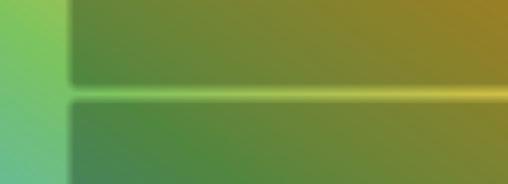


Advanced Automotive Battery Conference USA — AABC USA
December 9 – 12
San Diego, California, USA
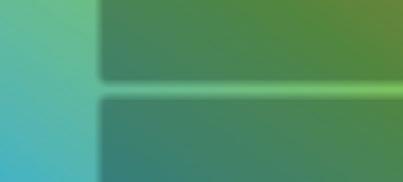


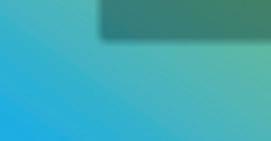


AABC was founded more than 20 years ago to review the status of automotive battery technology and provide informed glimpses into the future. The program will uncover the underlying technical and business issues that will impact the pace and path of vehicle electrification worldwide.
Join us to network with chief battery technologists from some of the world’s leading automotive OEMs, who will share their development trends and projected battery needs, as well as their key suppliers who will present their latest offerings and roadmaps for the future.
Contact Cambridge Enertech — CET
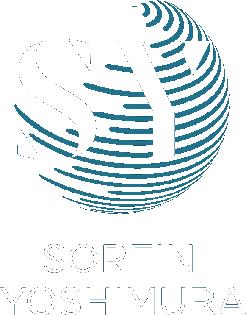
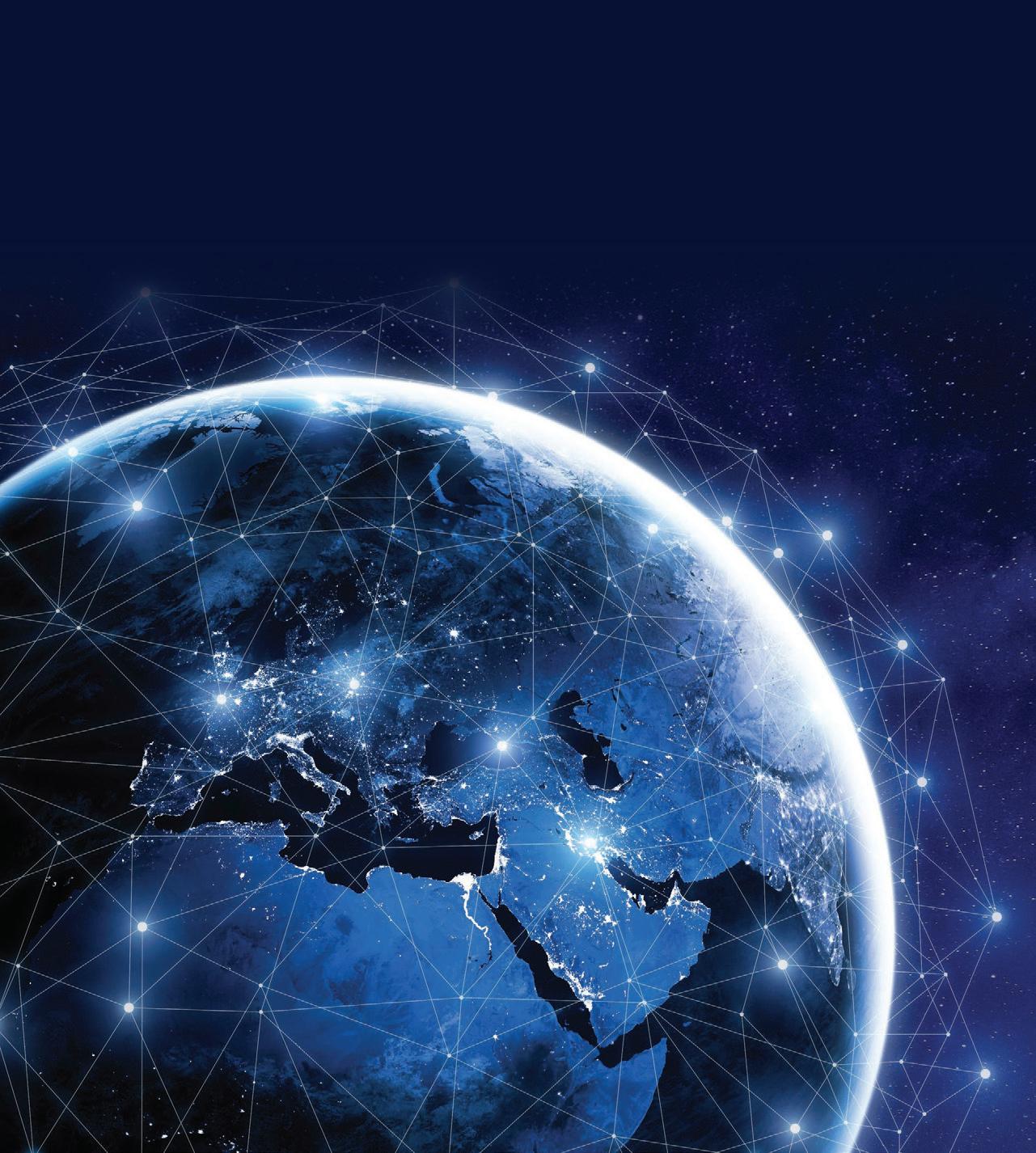




USA: sorfin@sorfin-yoshimura.us
CHINA: qingdao@sorfin-yoshimura.cn
BRAZIL: vendas@sorfin.com.br
THAILAND: jiroyoshimura@sorfin-yoshimura.jp





JAPAN: tokyo@sorfin-yoshimura.jp
FRANCE: paris@sorfin-yoshimura.fr
MEXICO: dbortoni@sorfin-yoshinura.us
INDIA: sales@sorfin-yoshimura.in
SY Innovations: agurevich@sy-innovations.com

